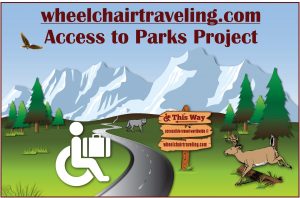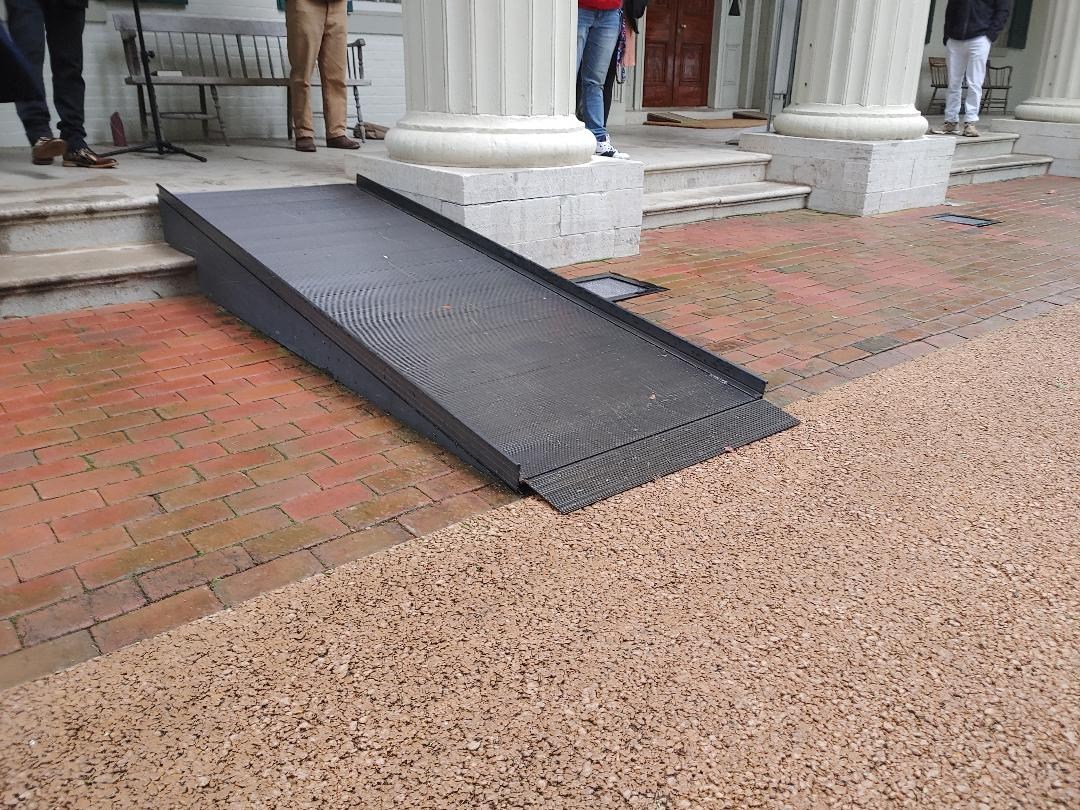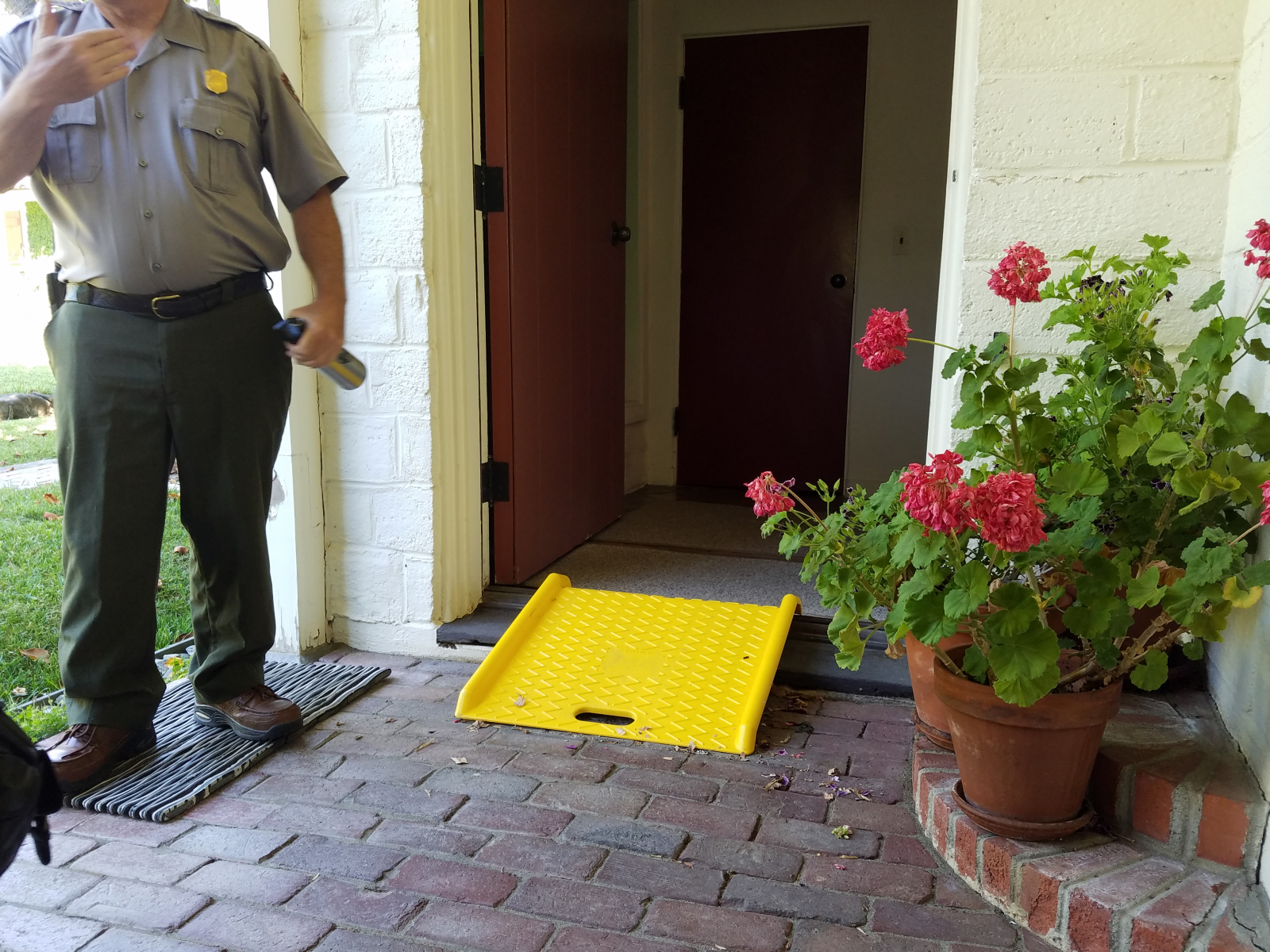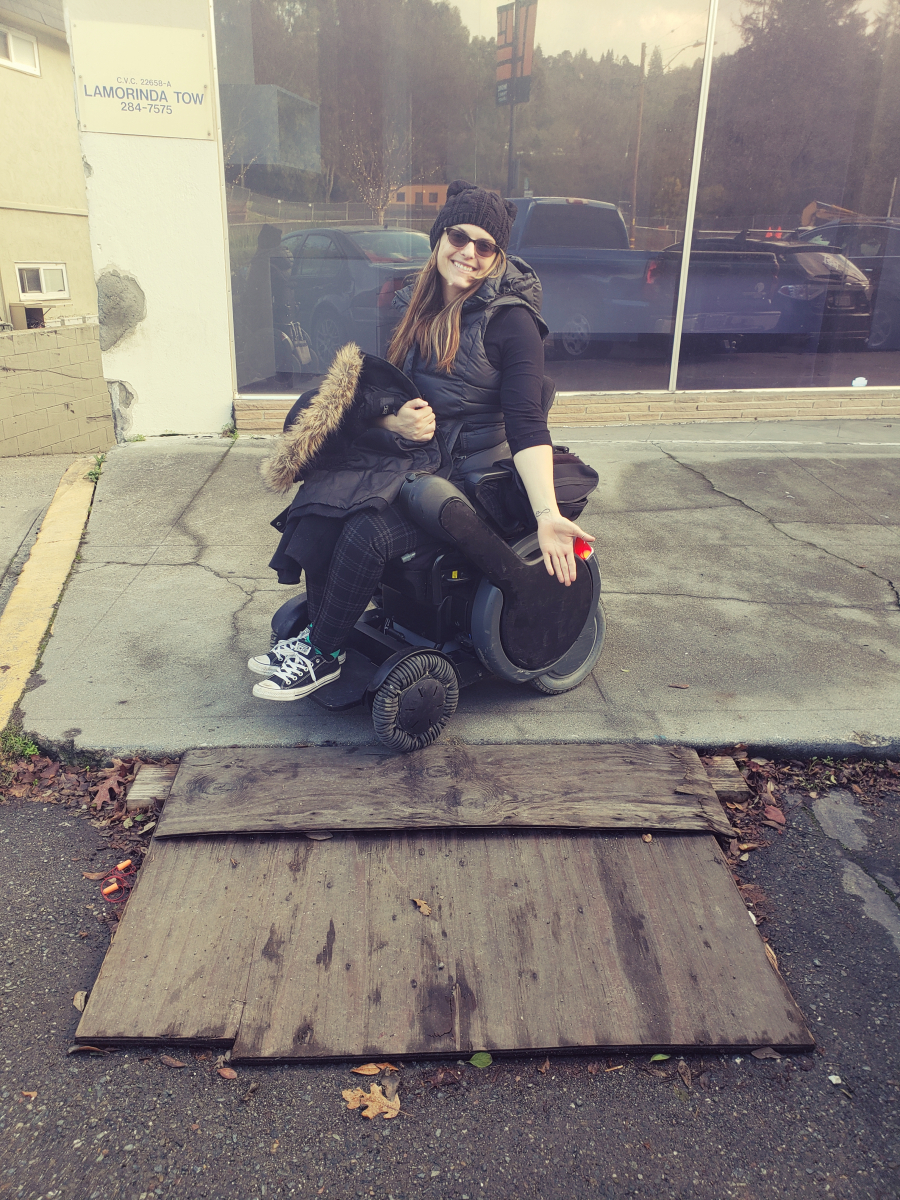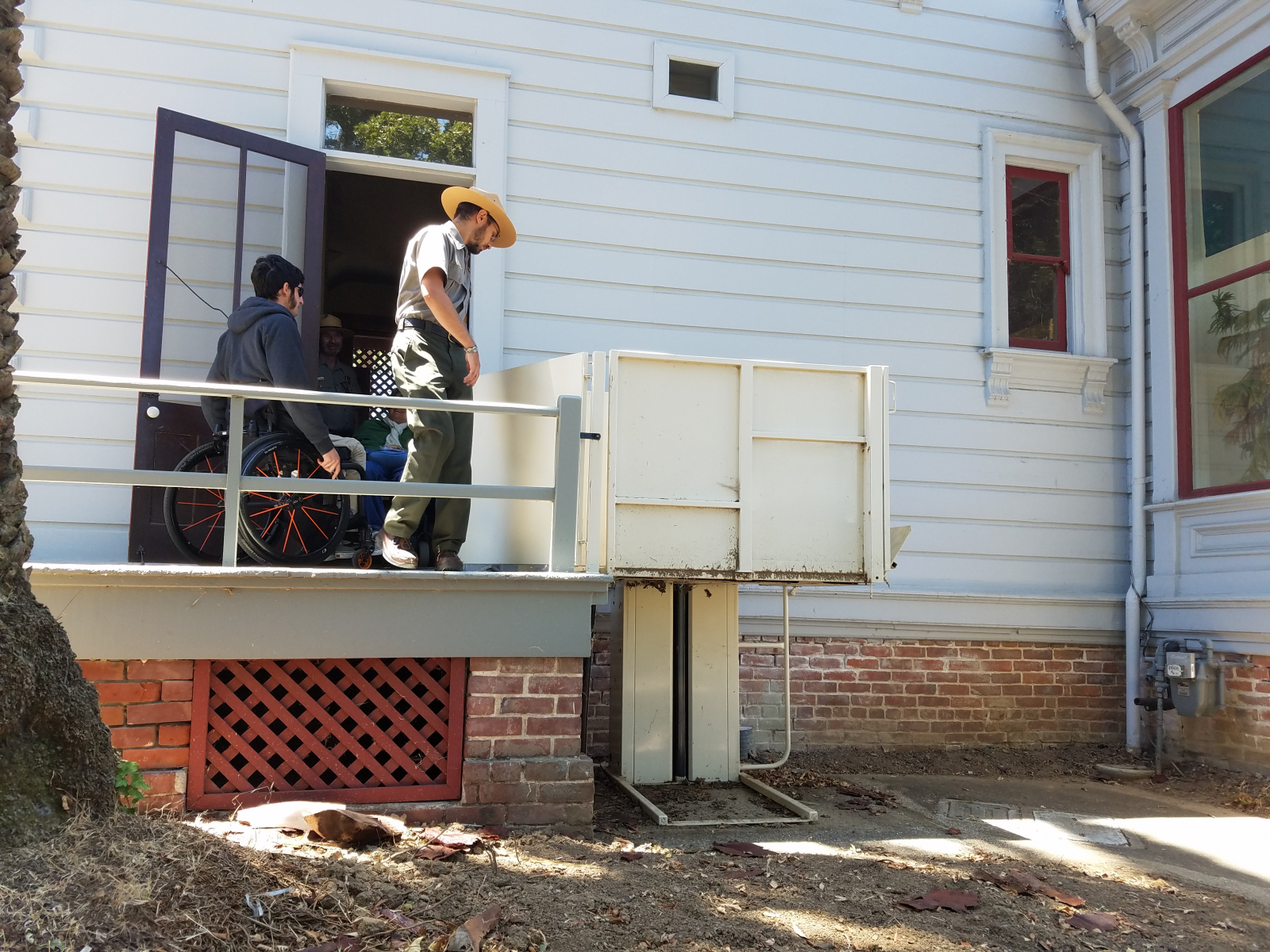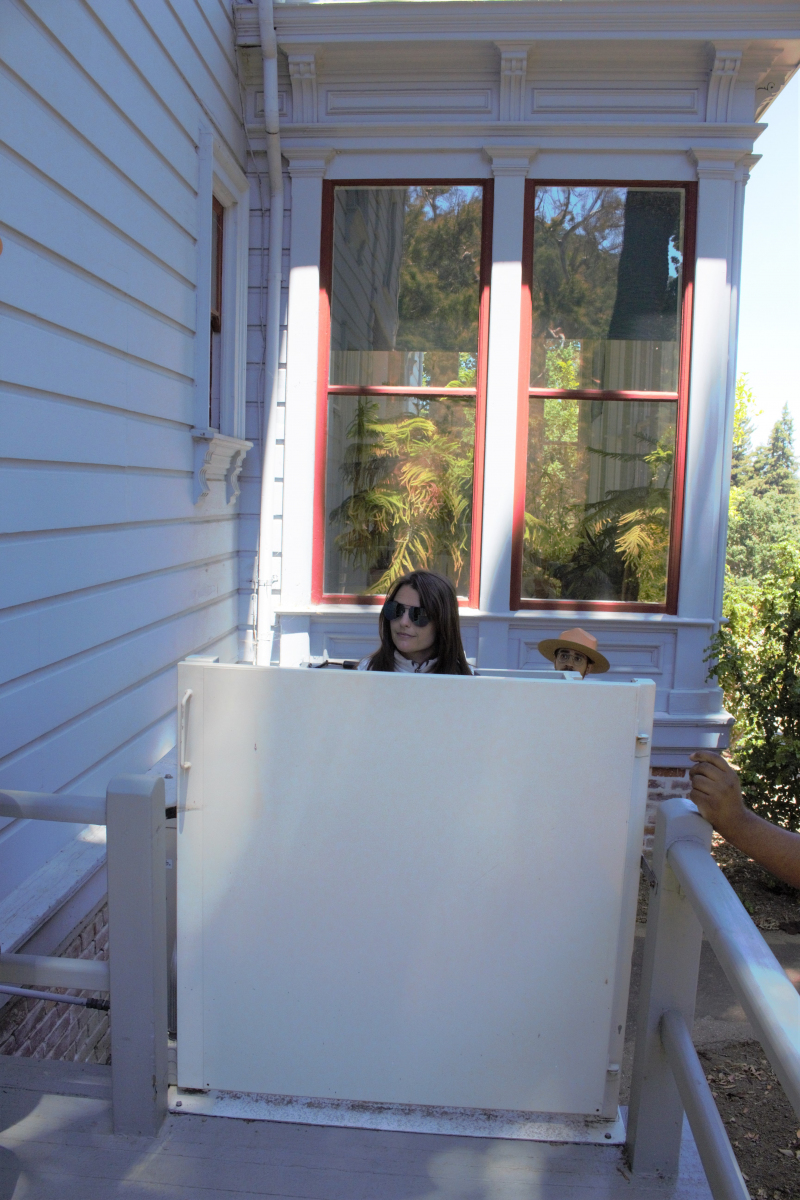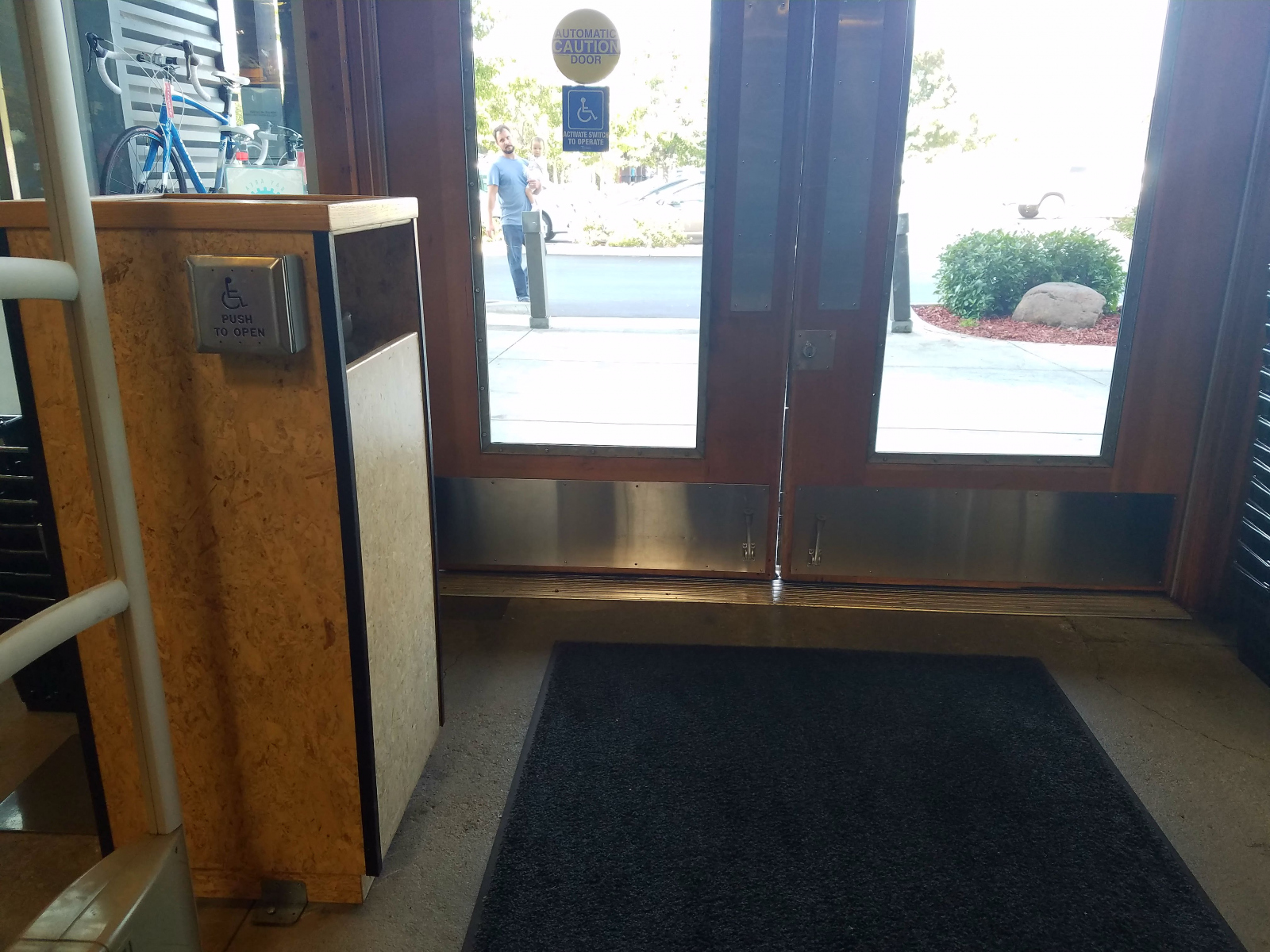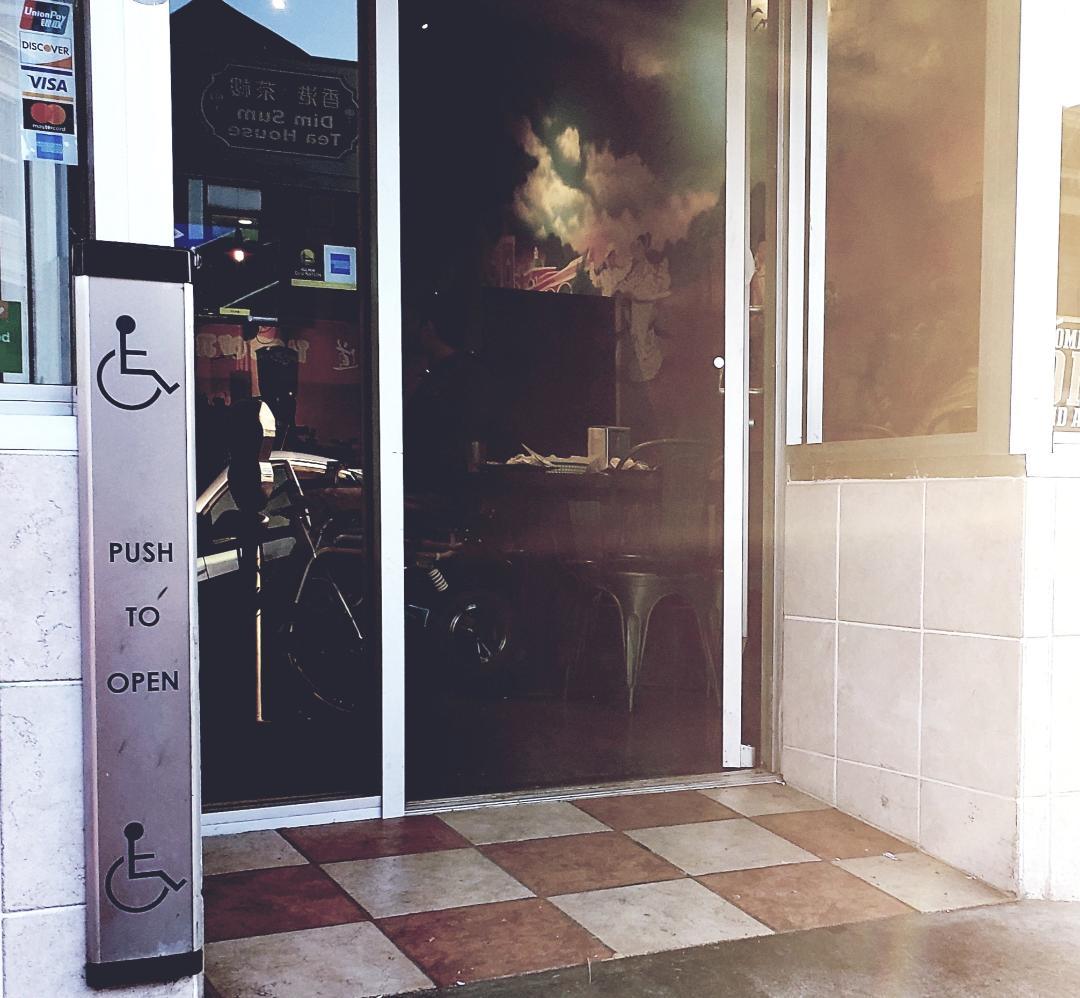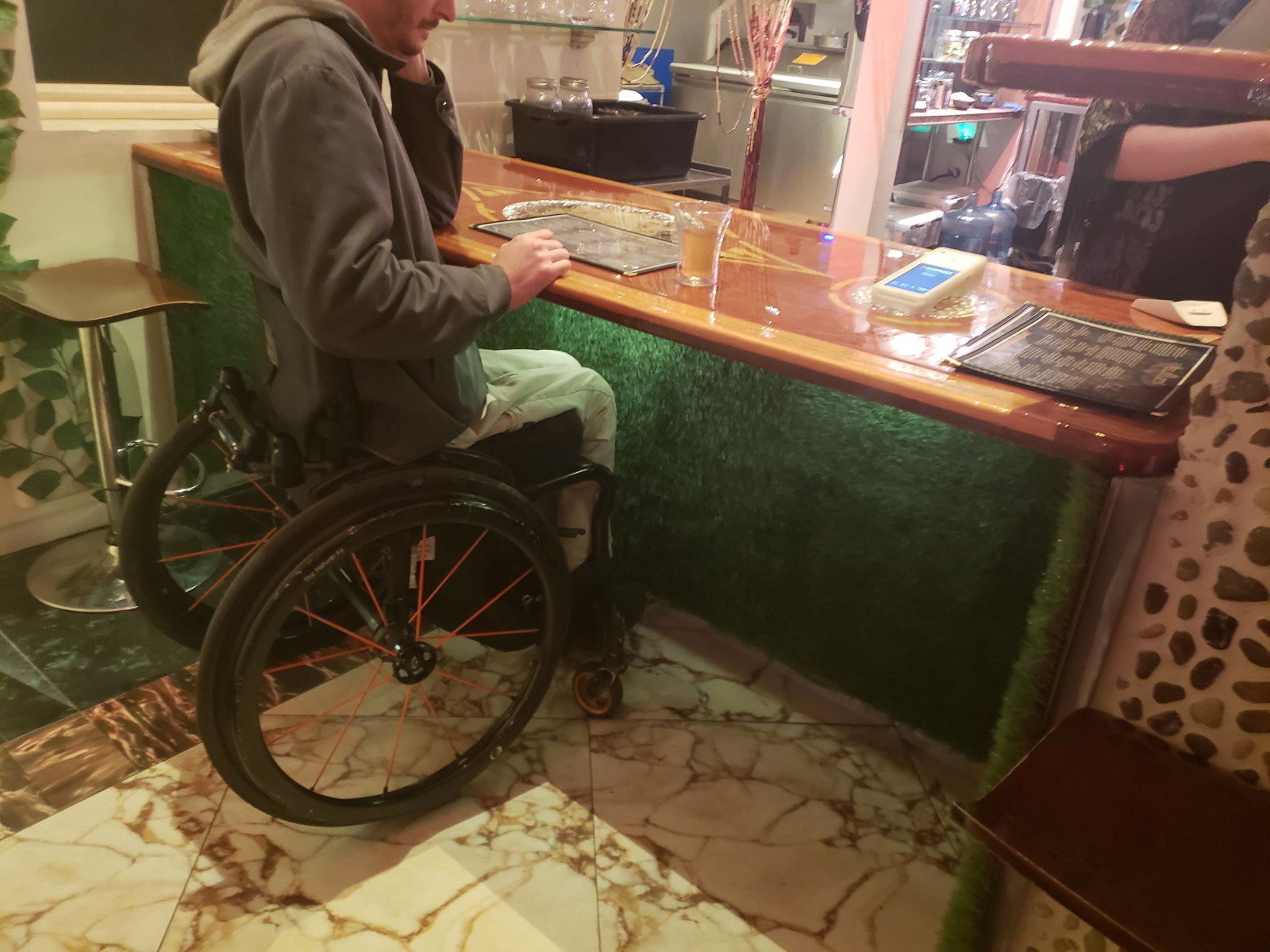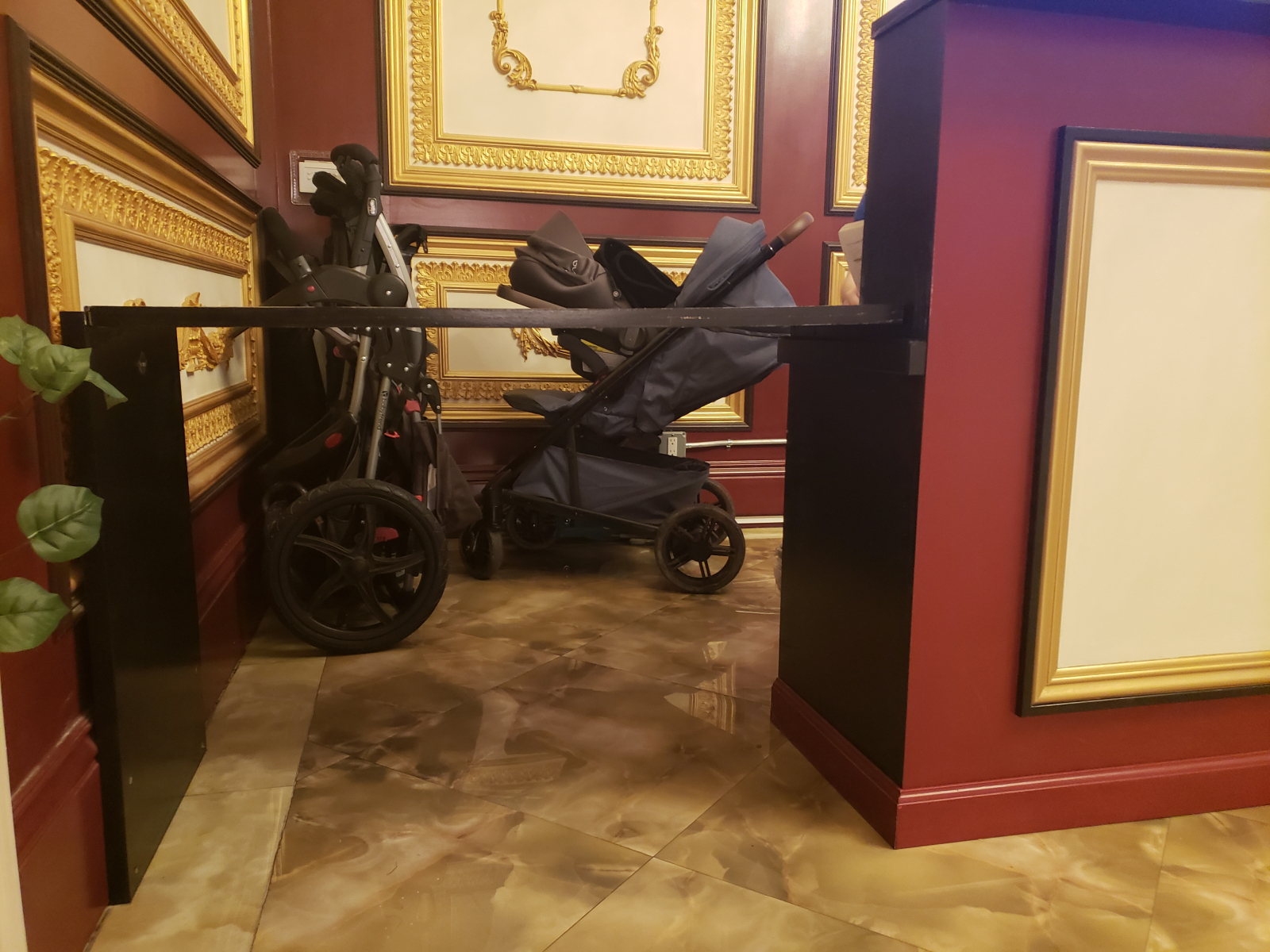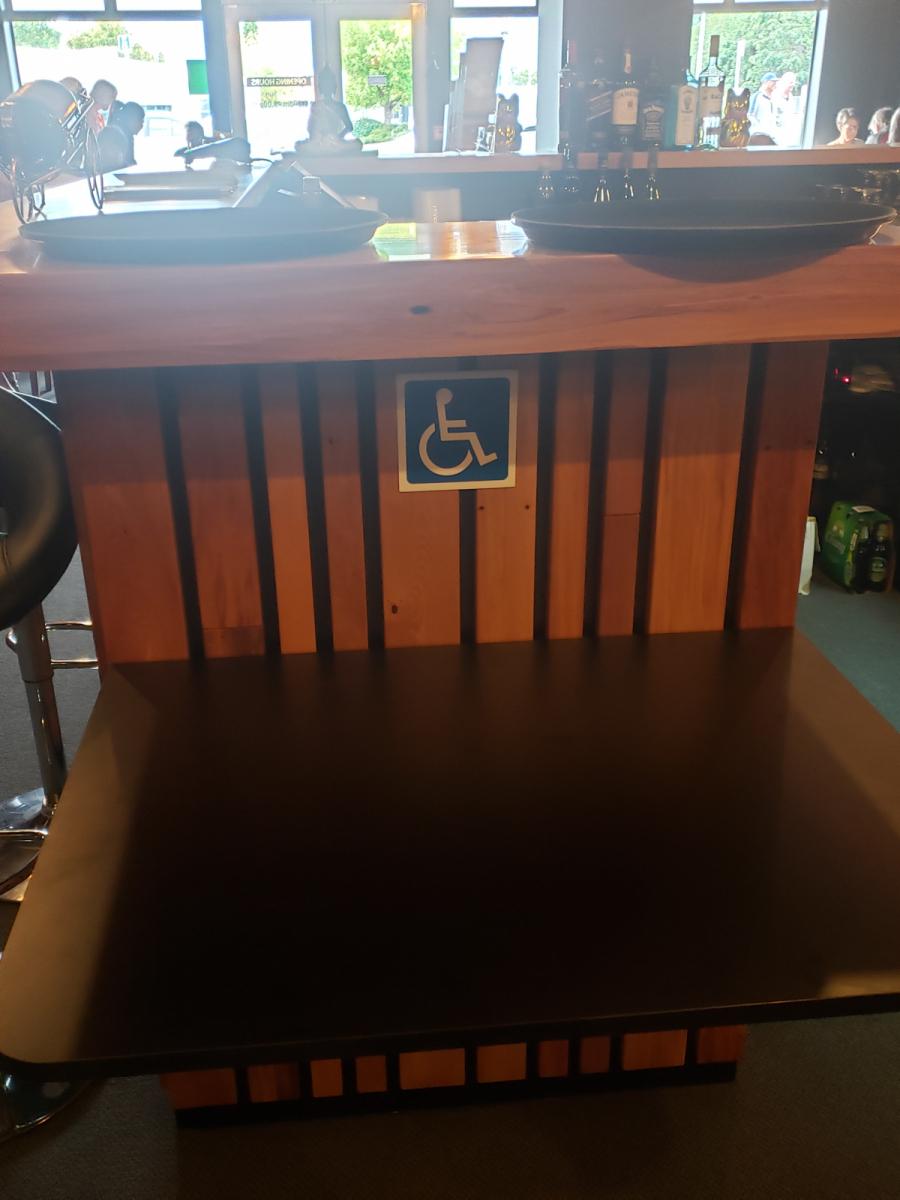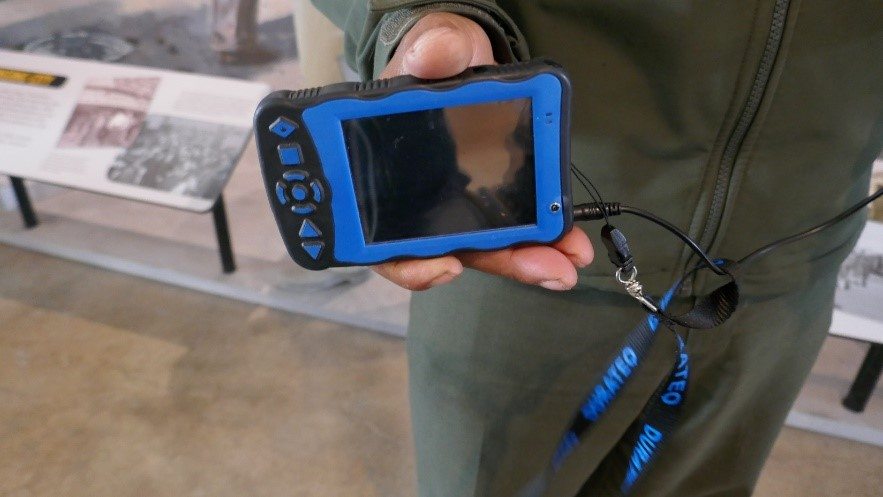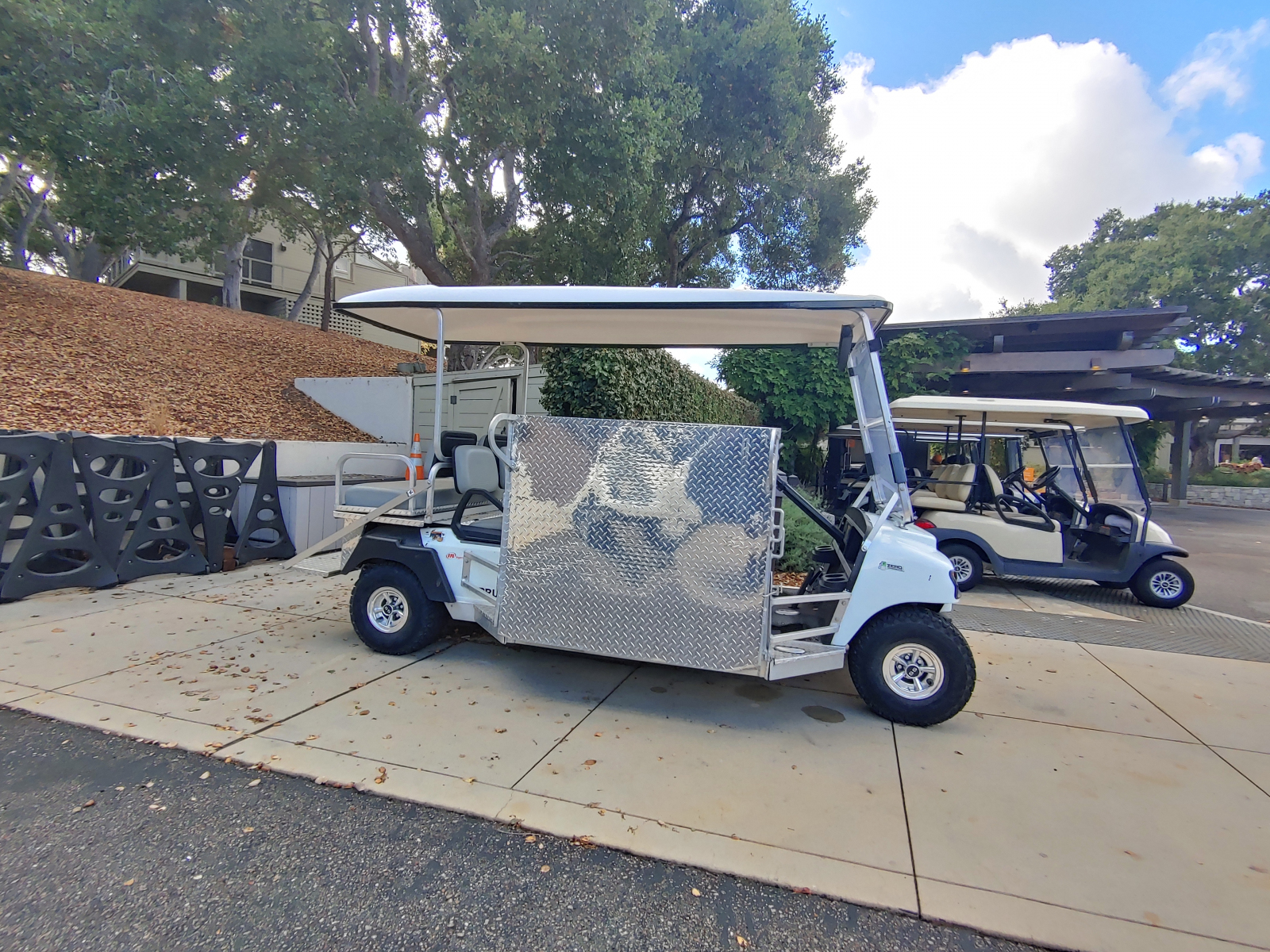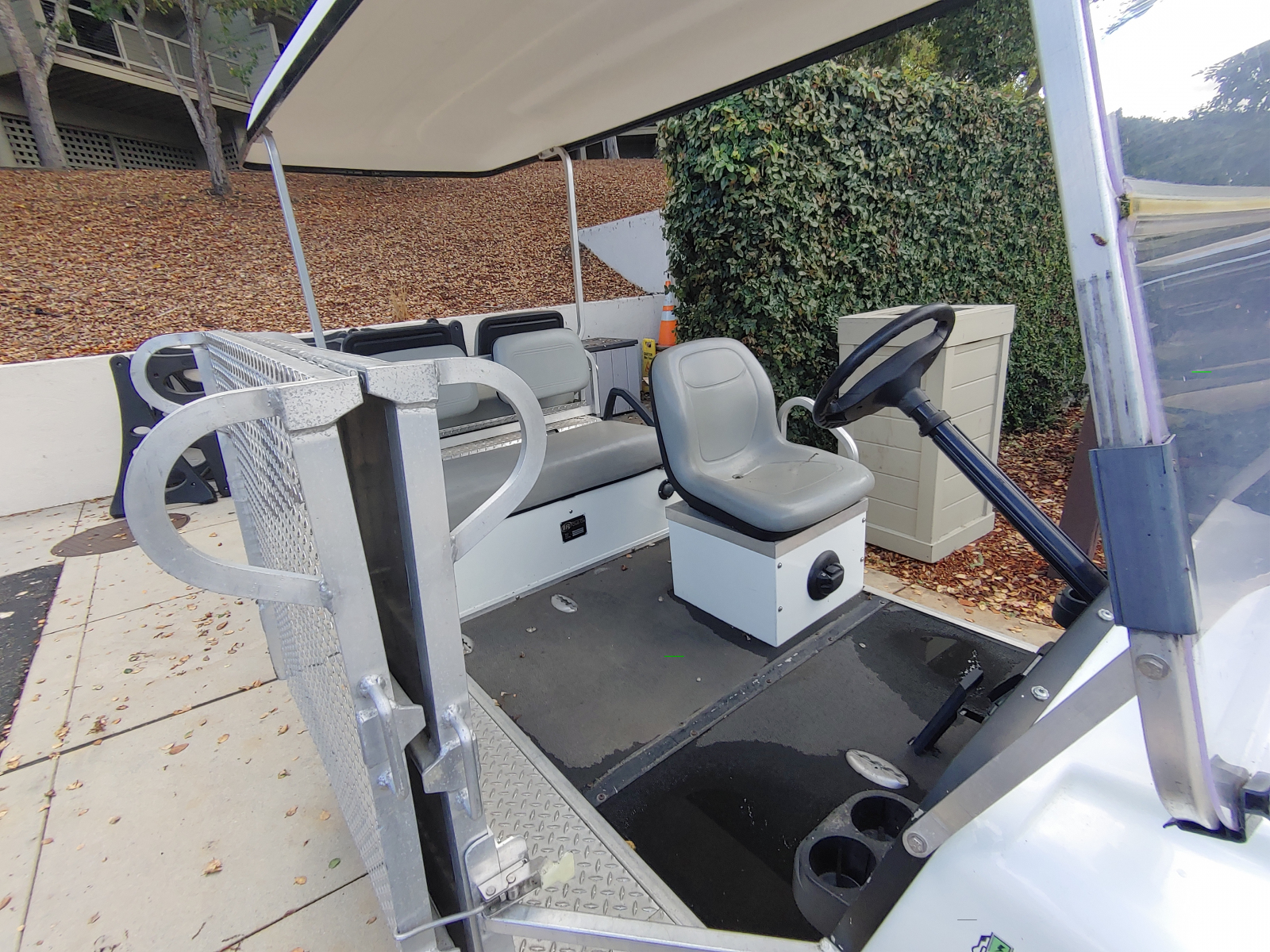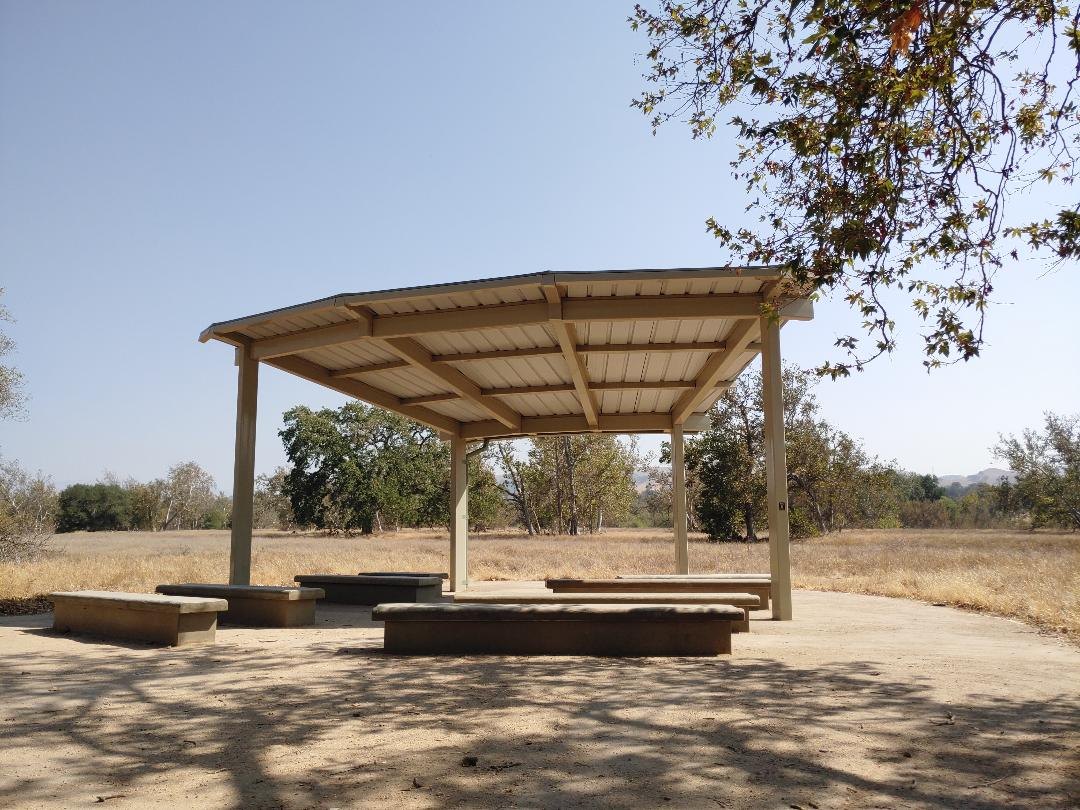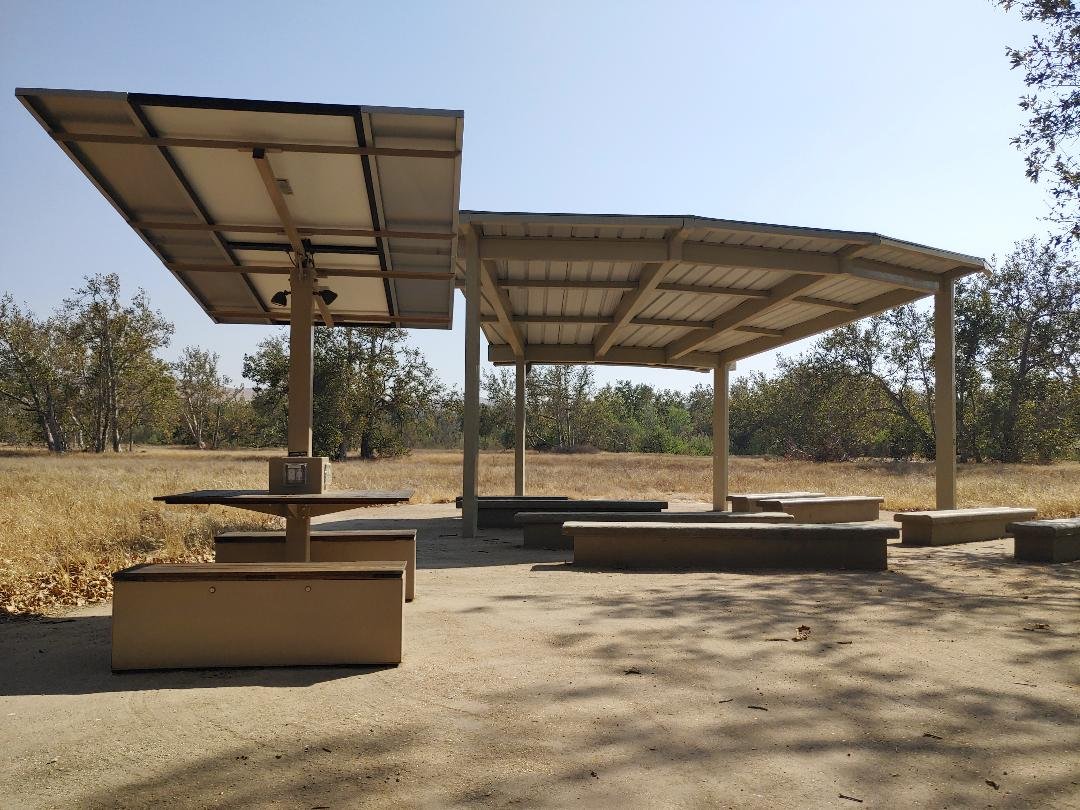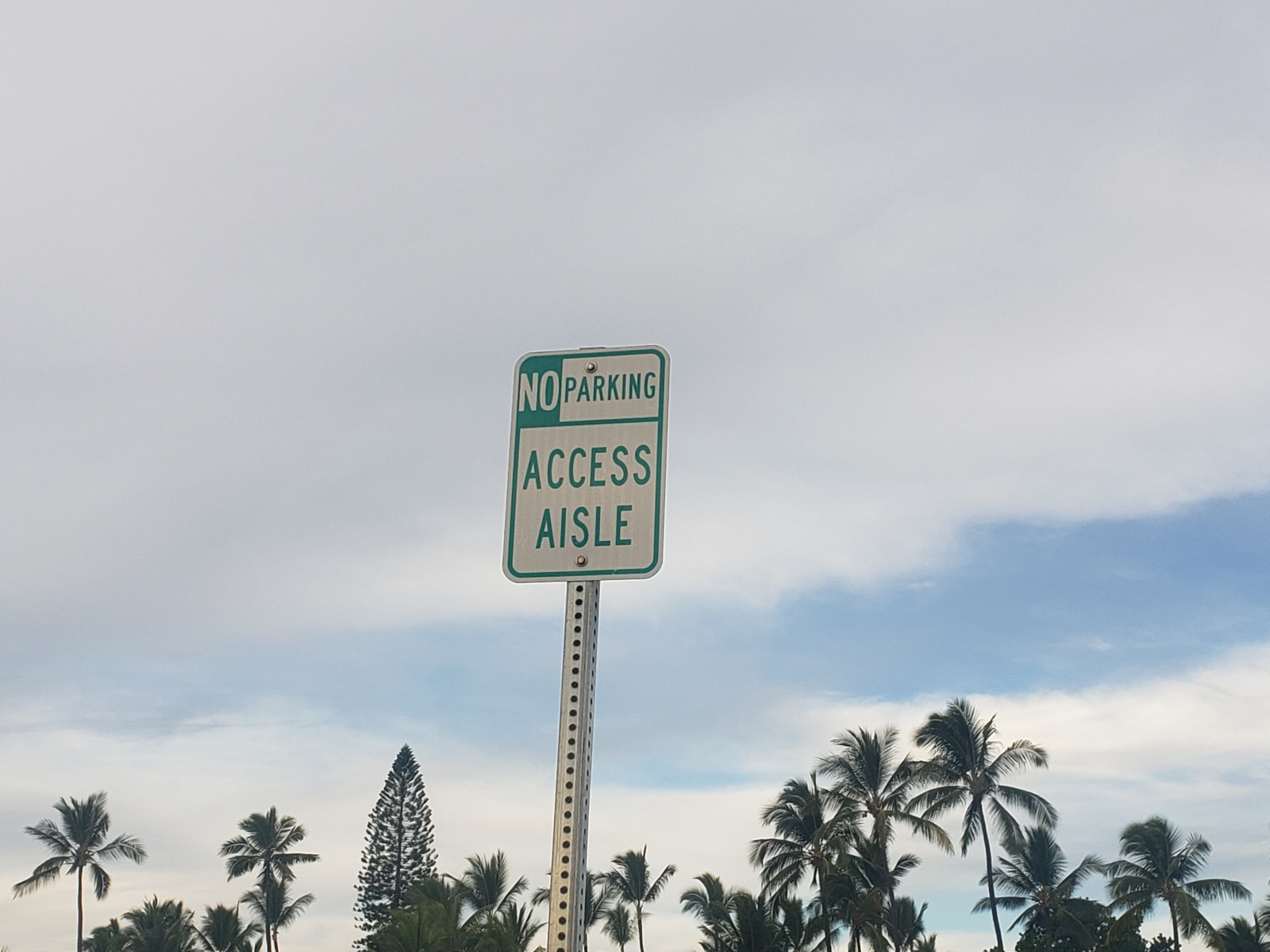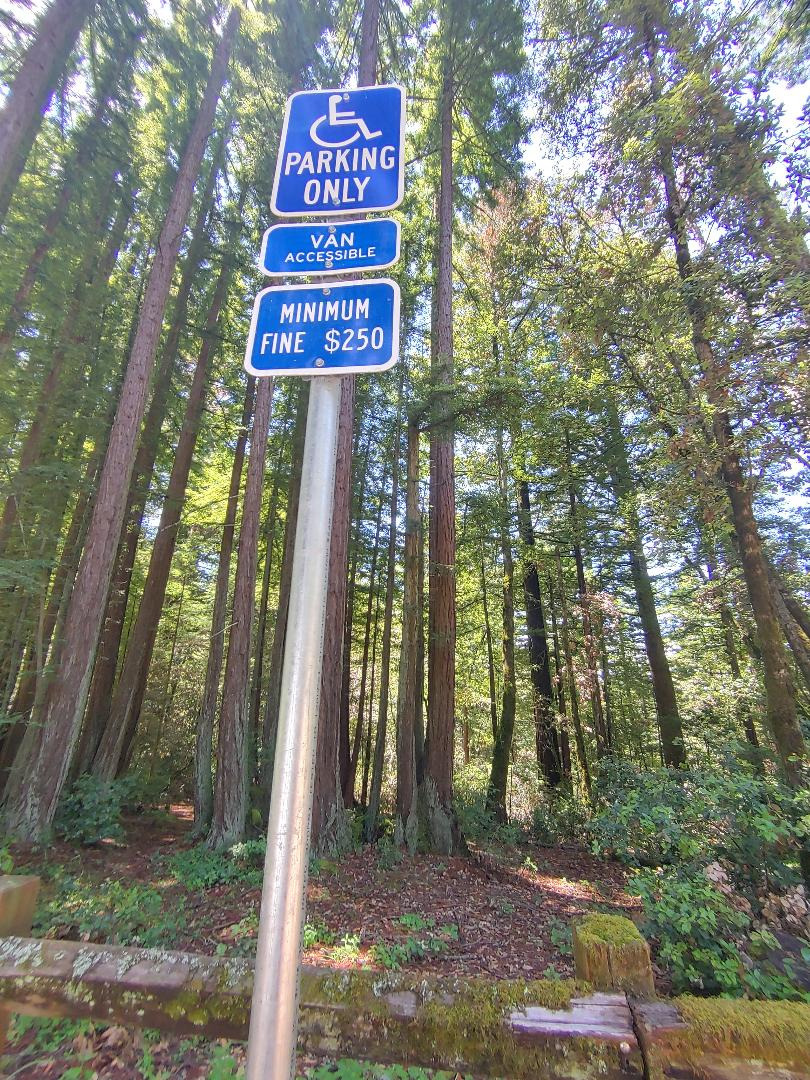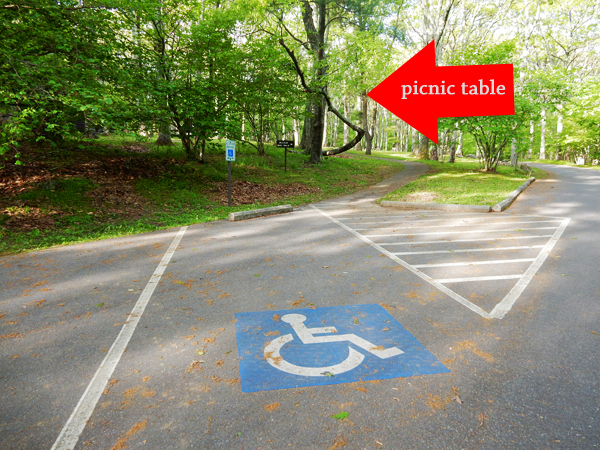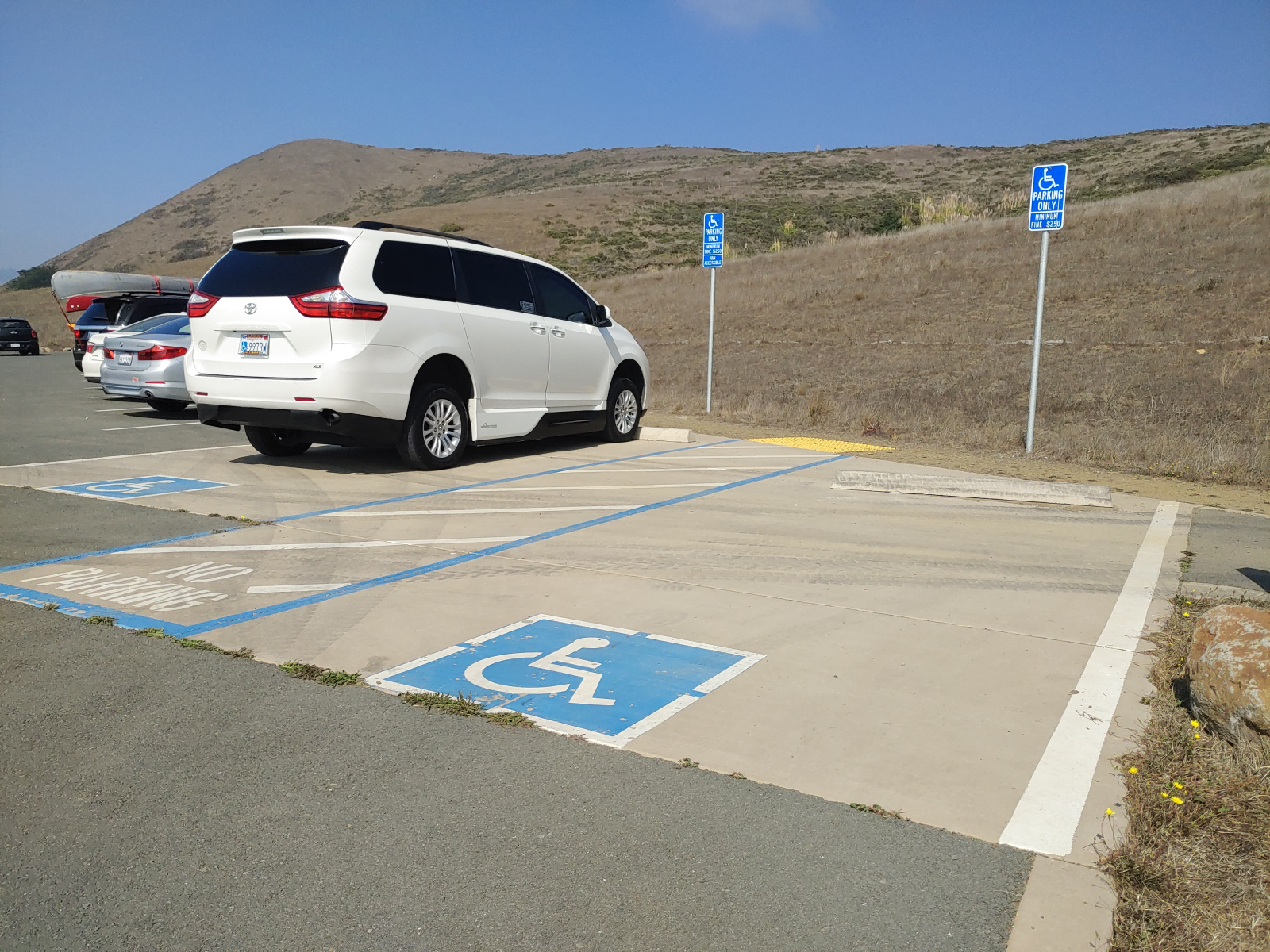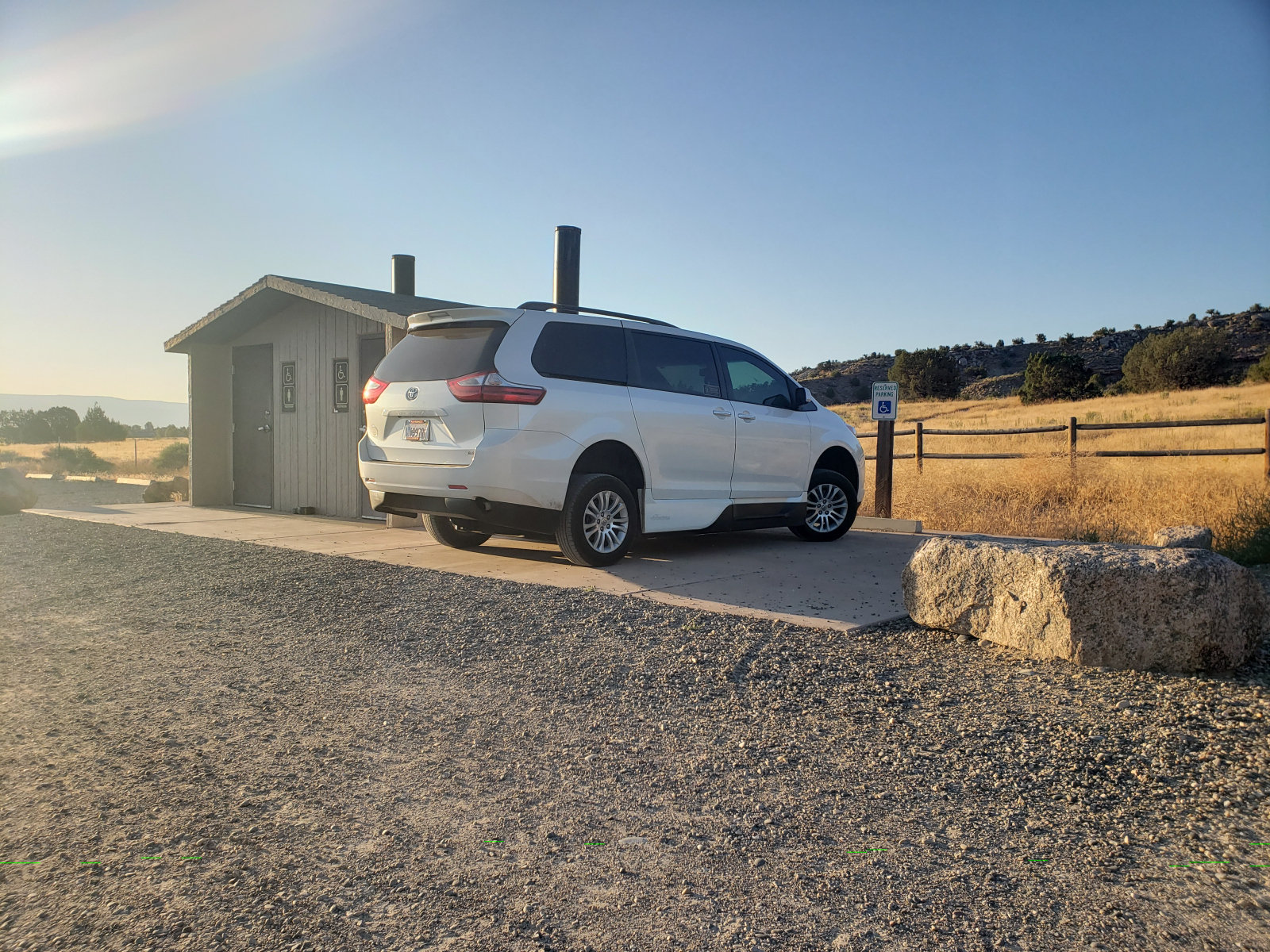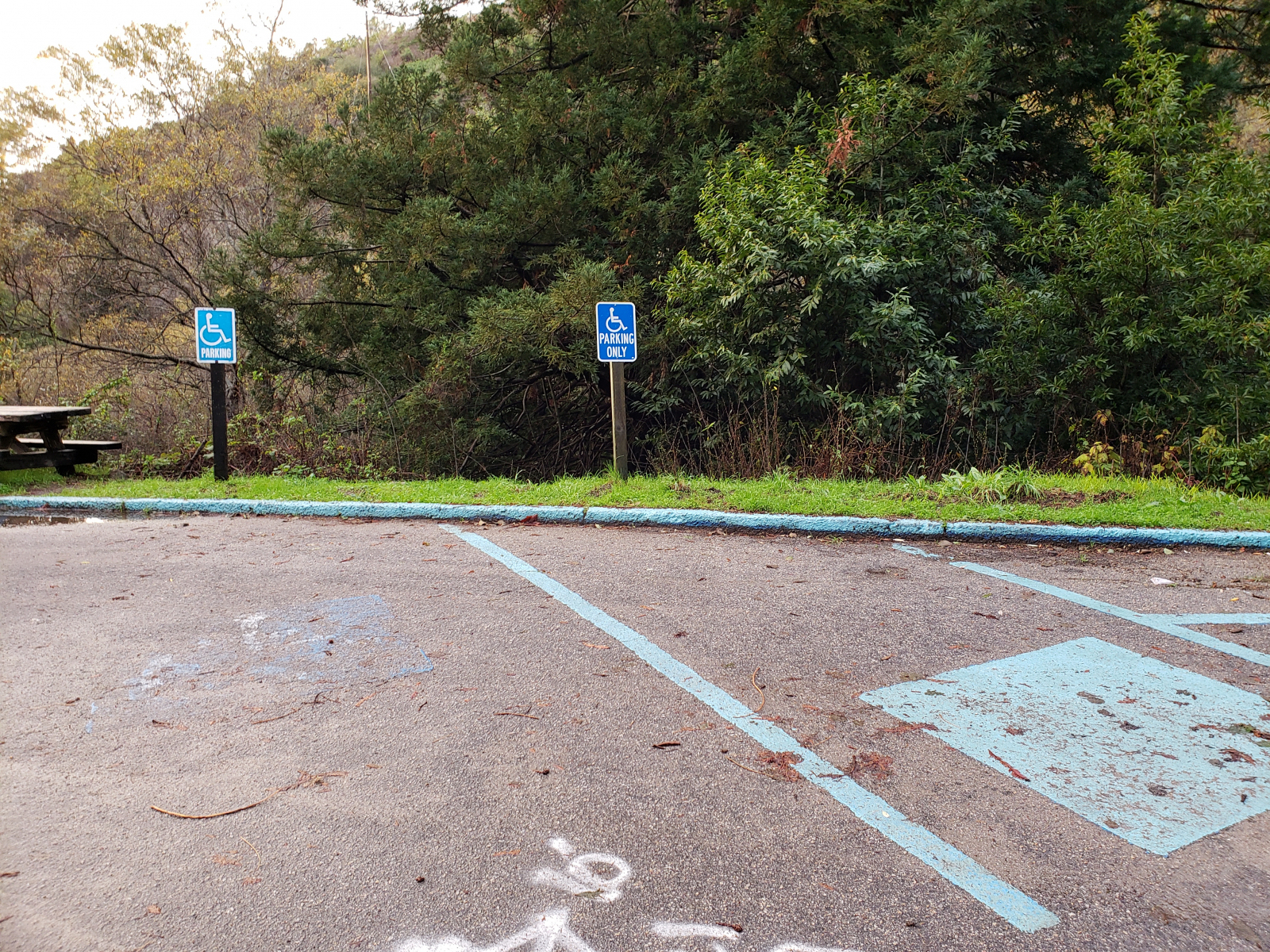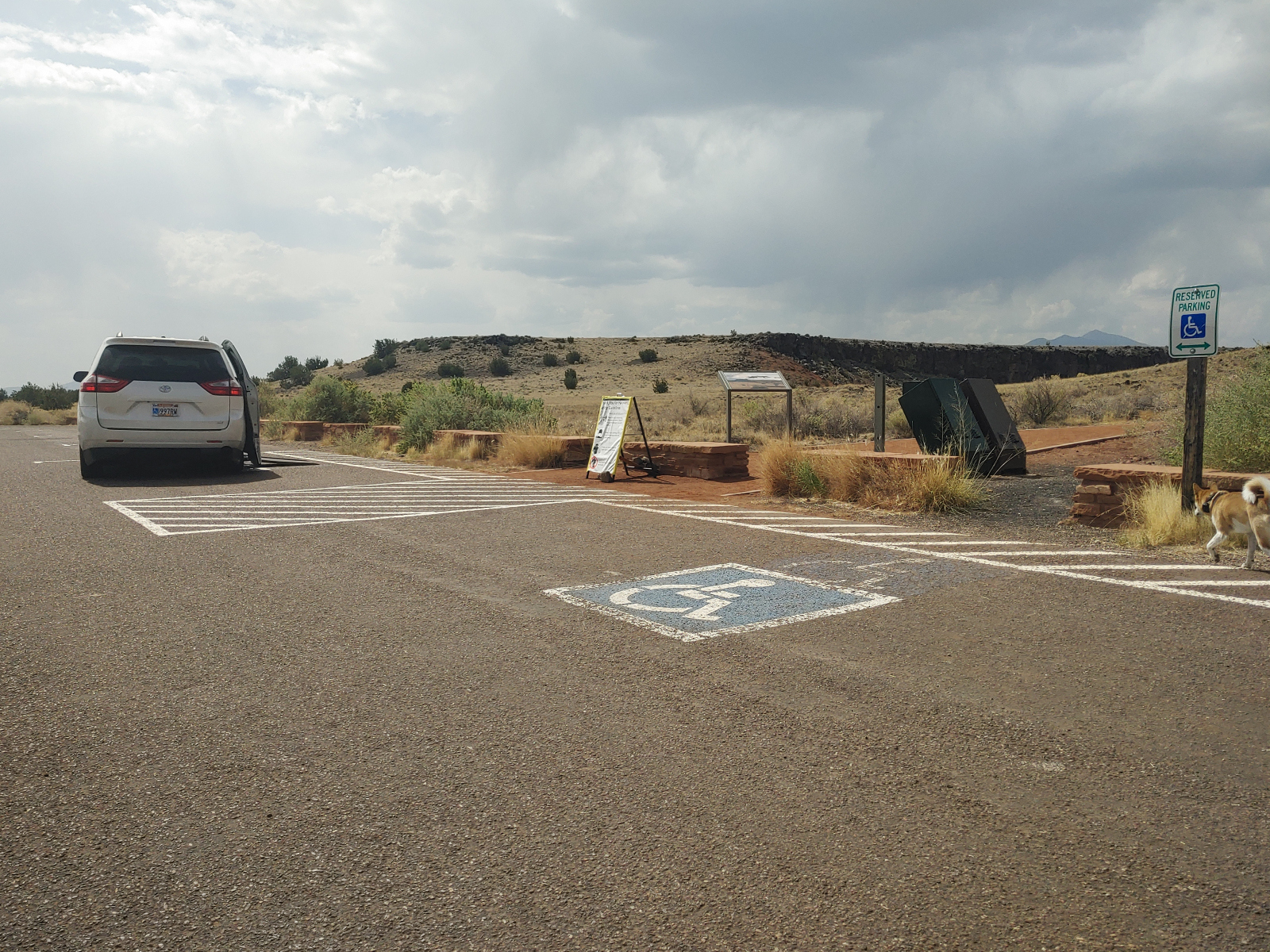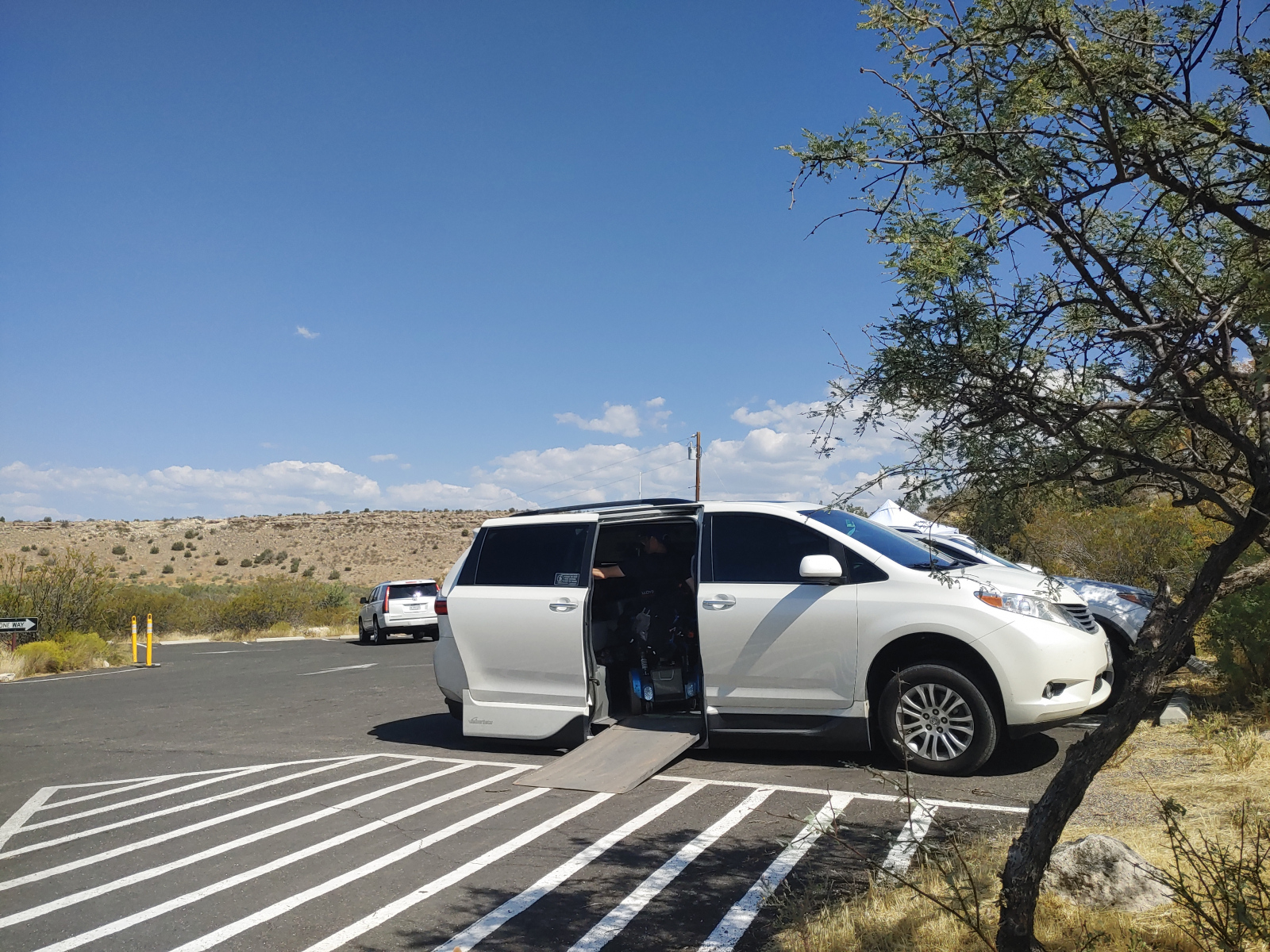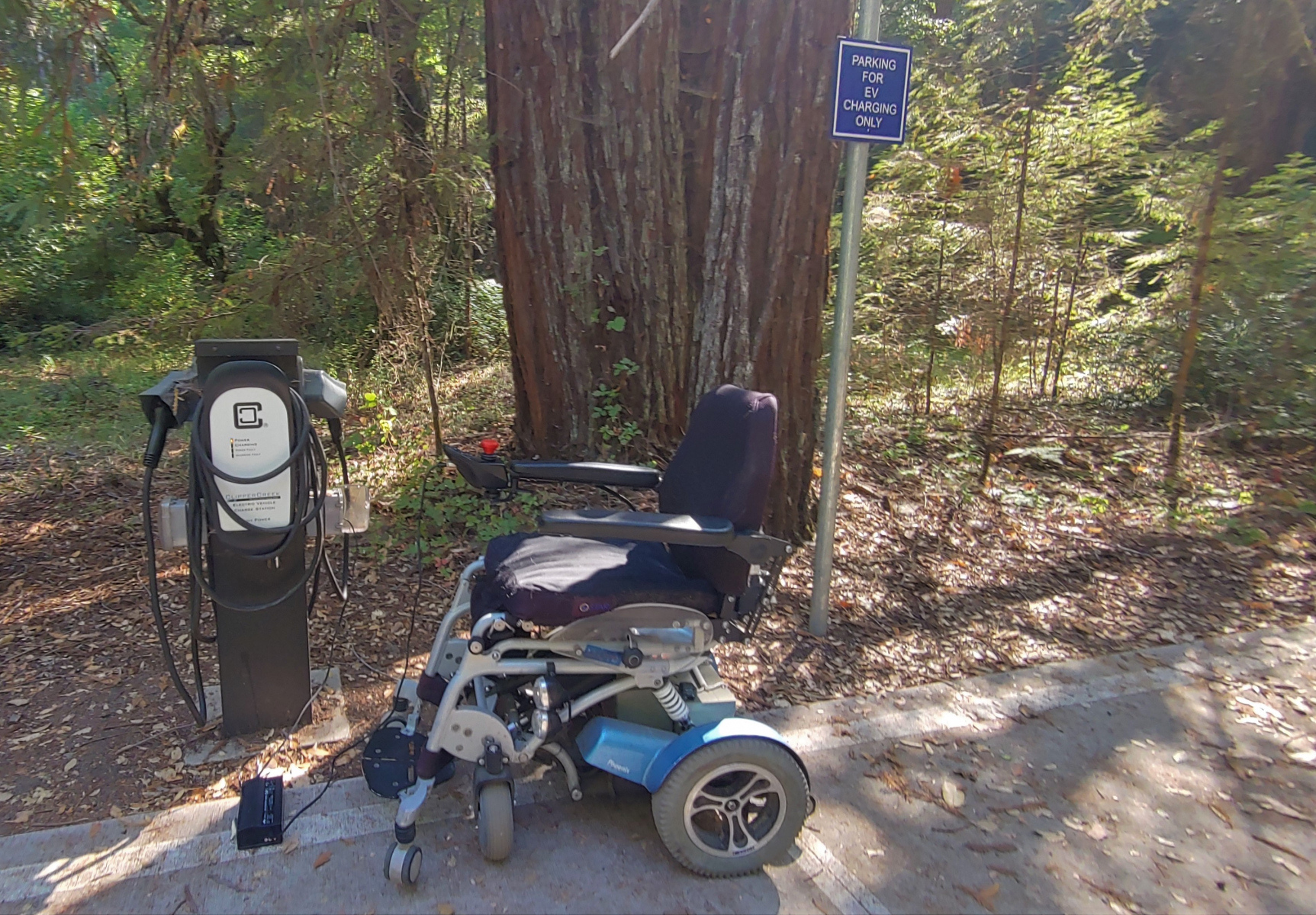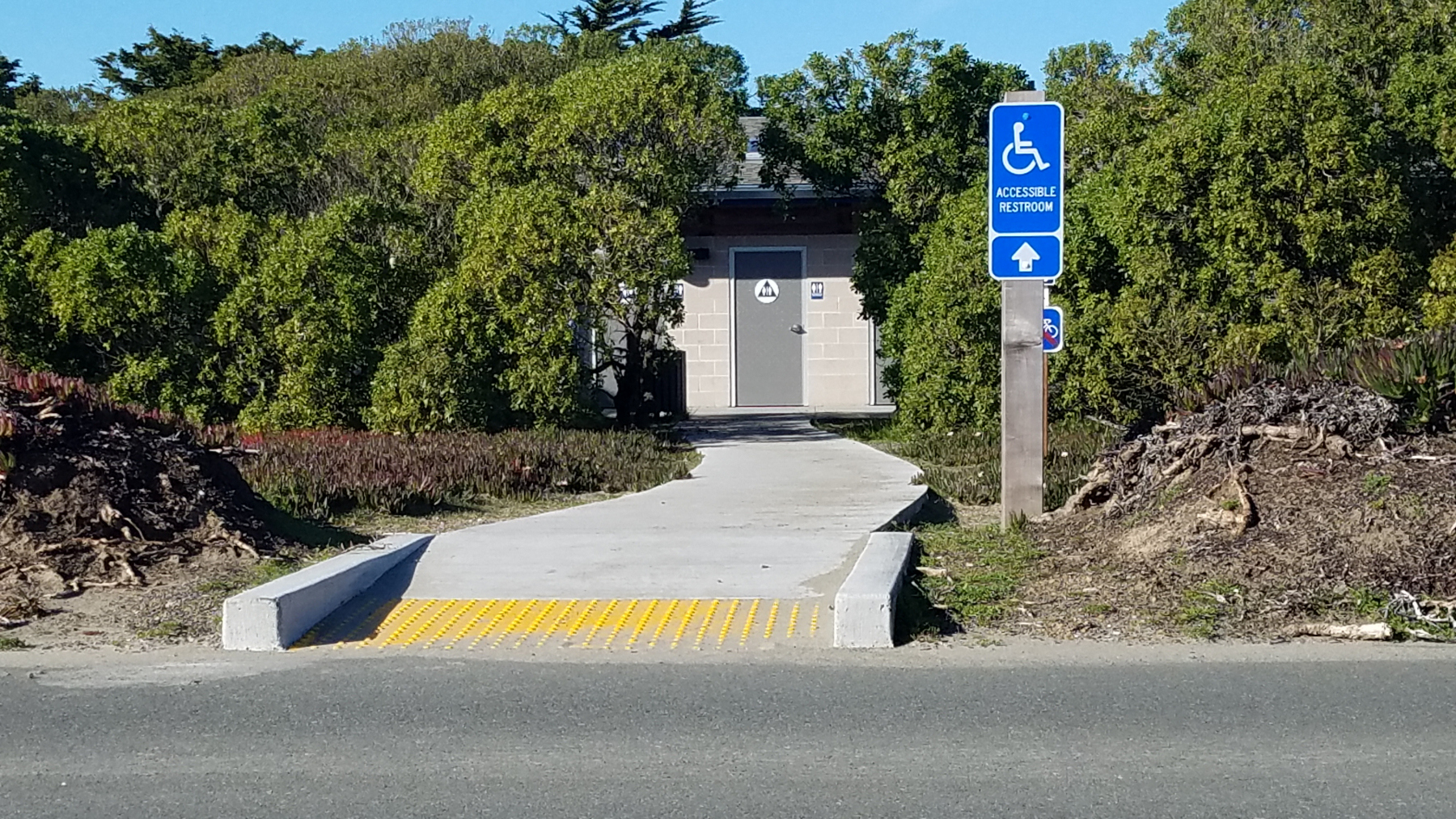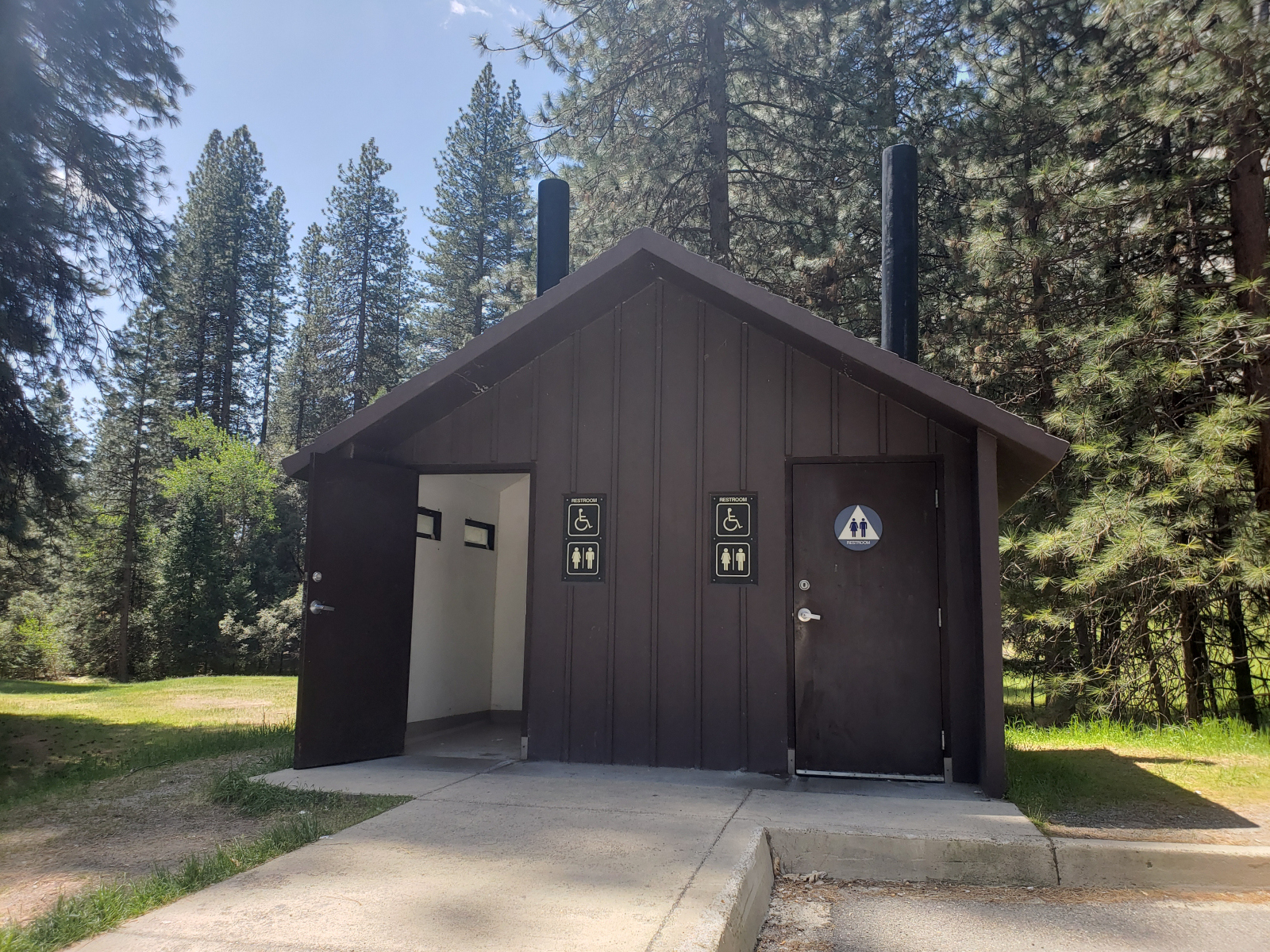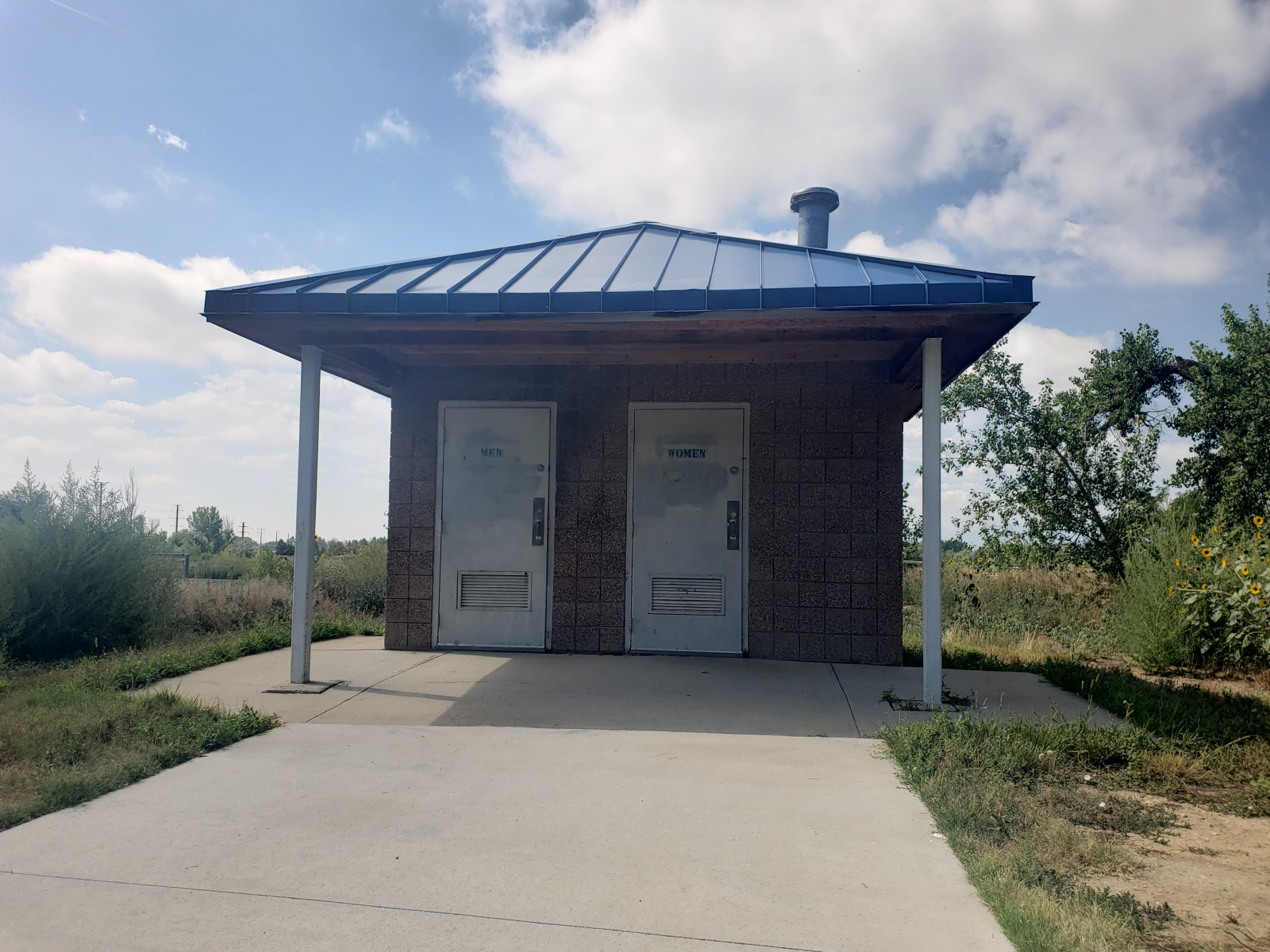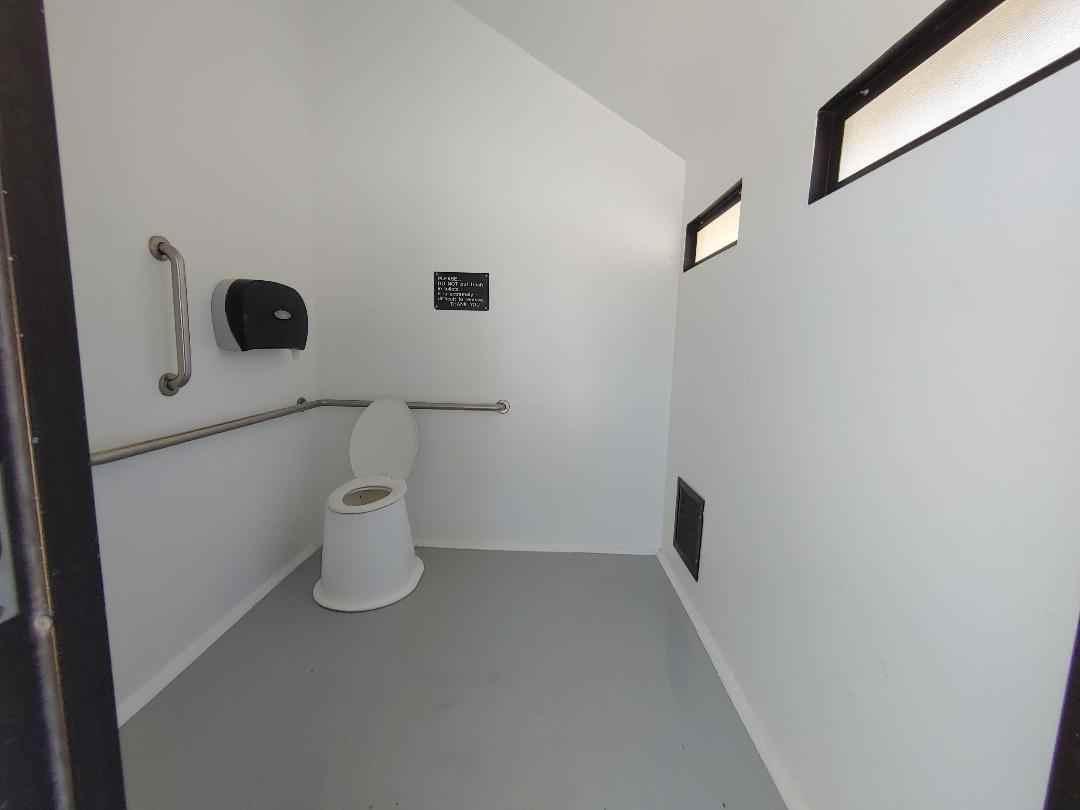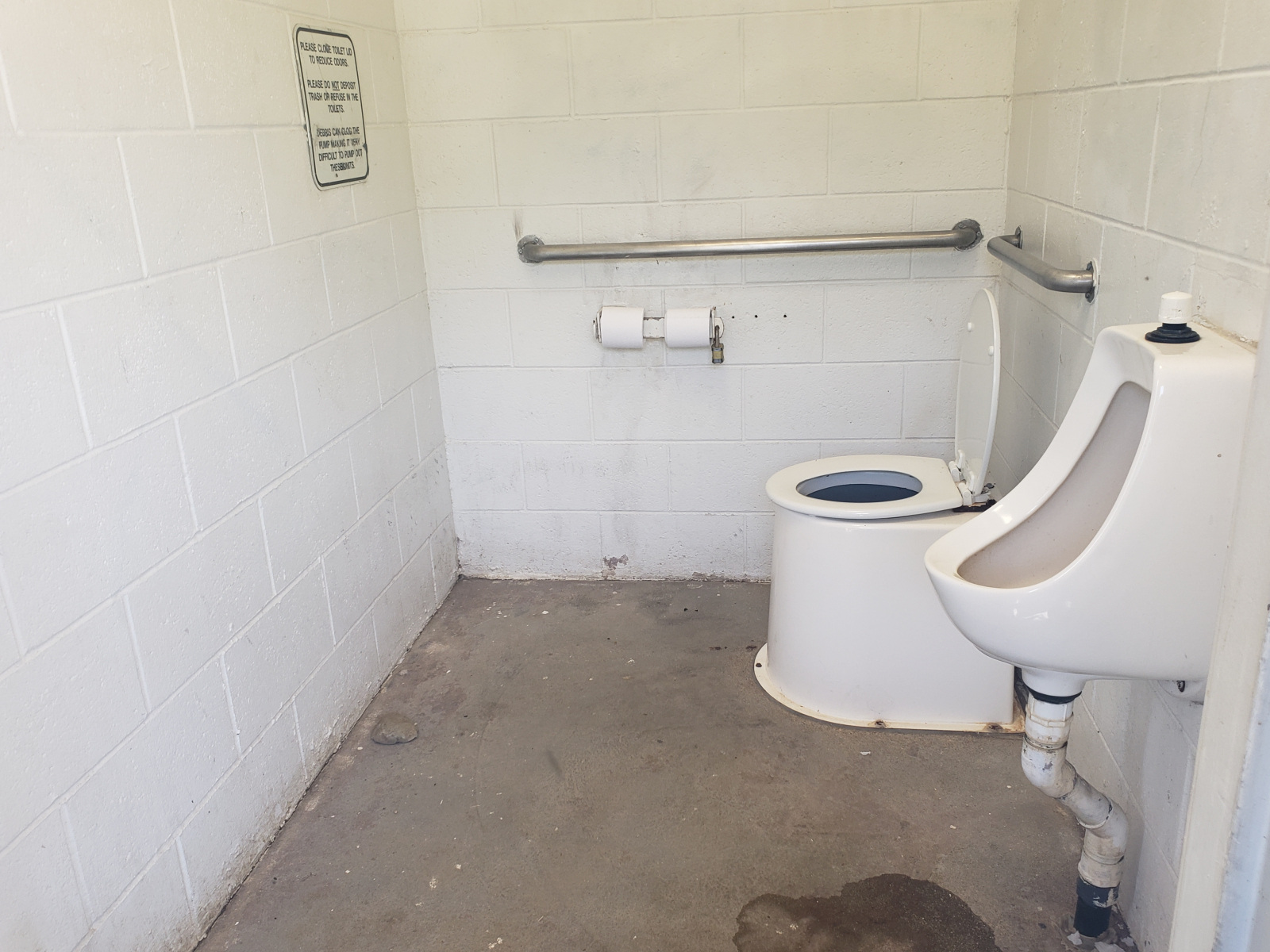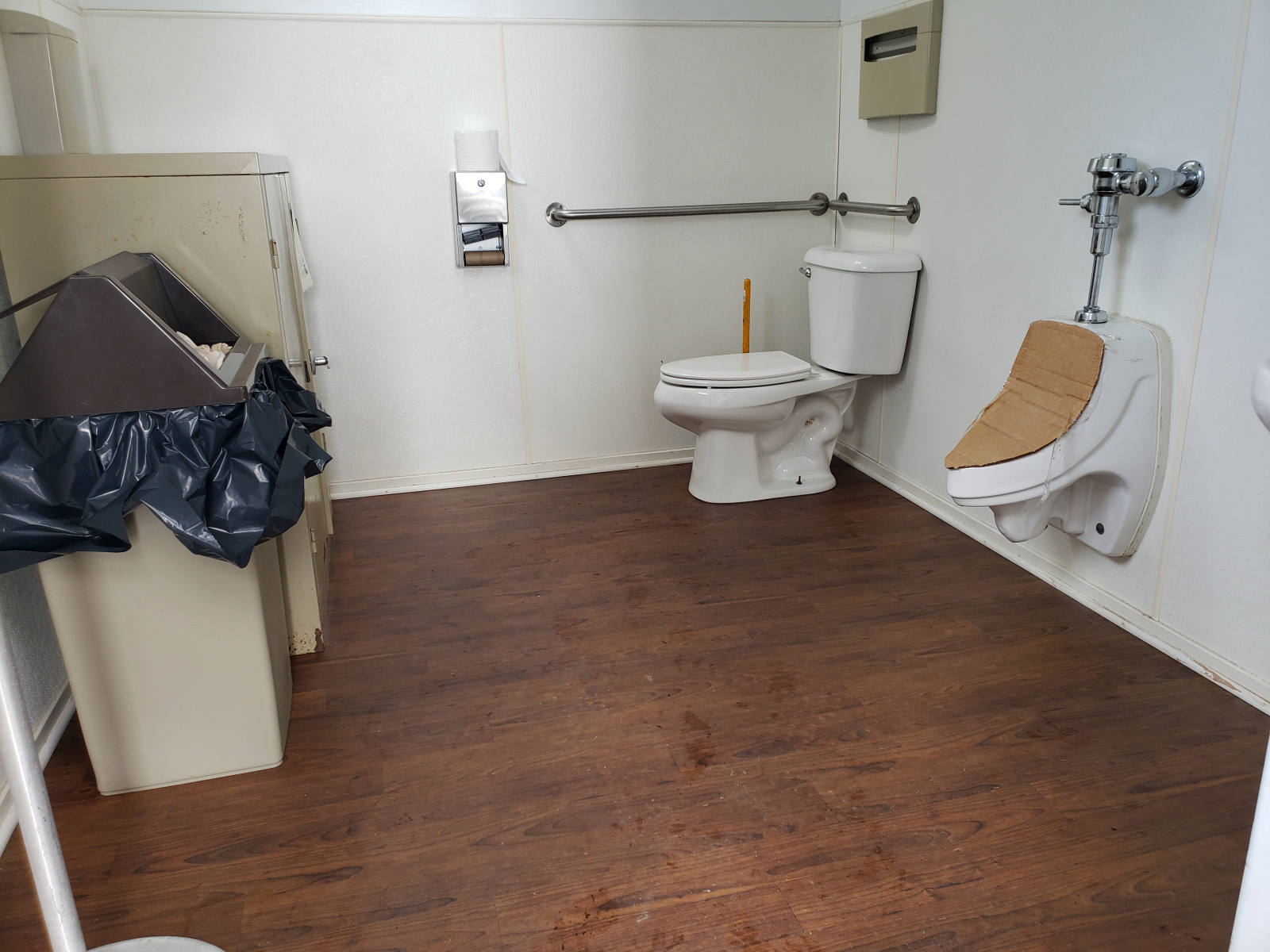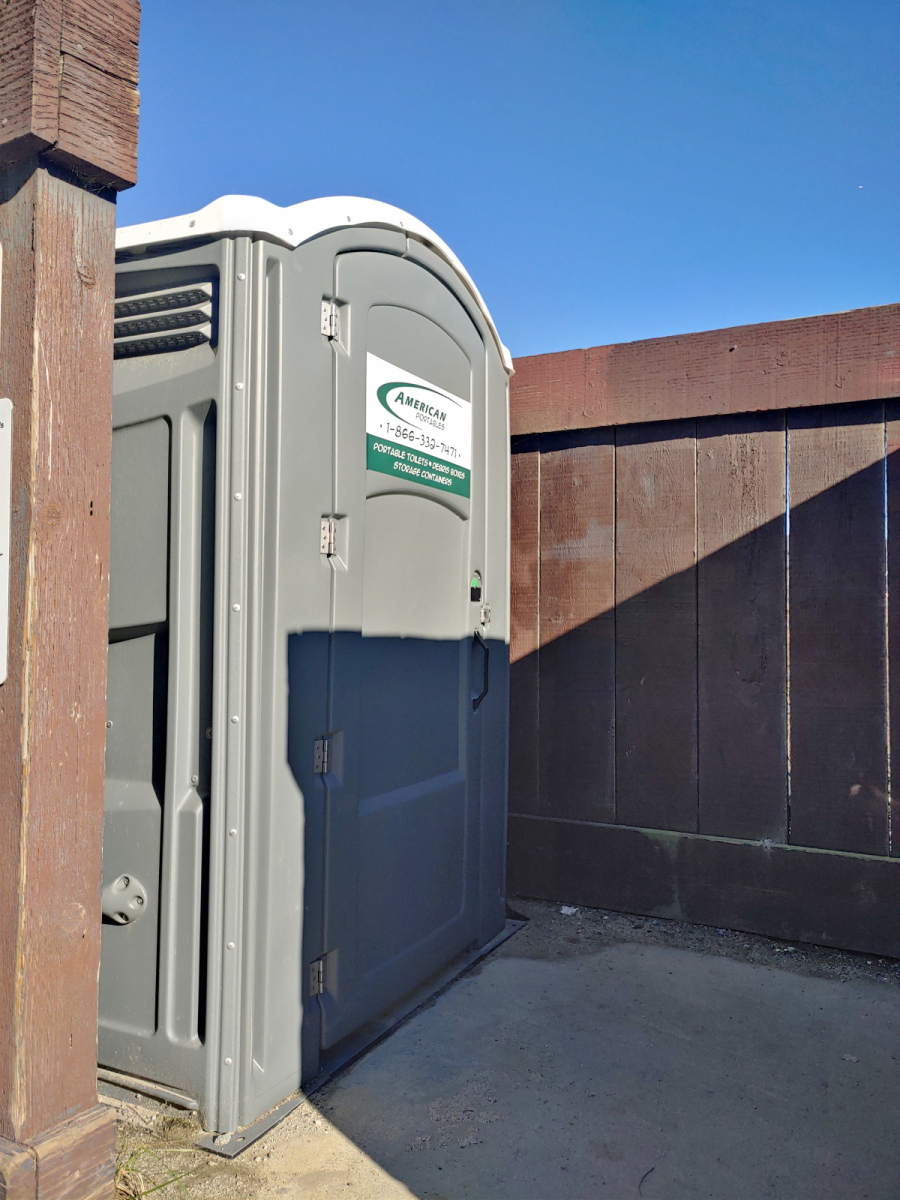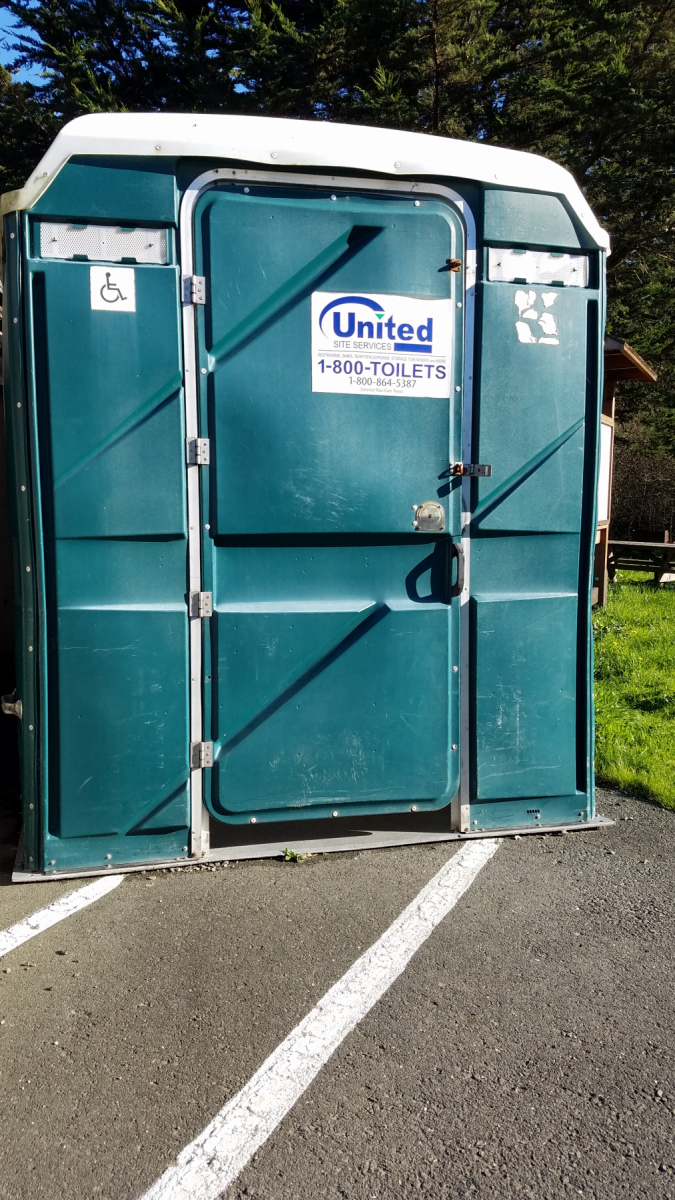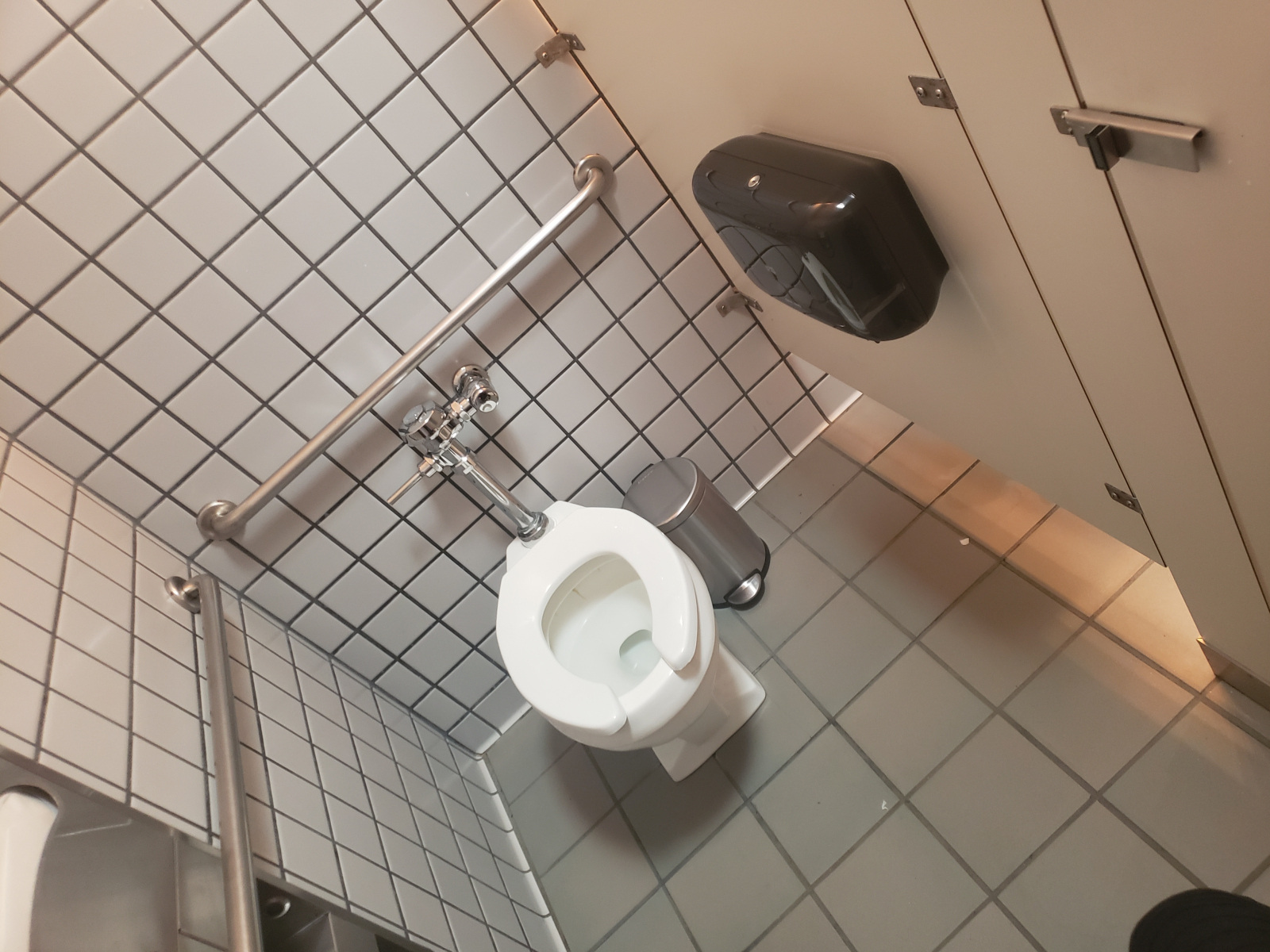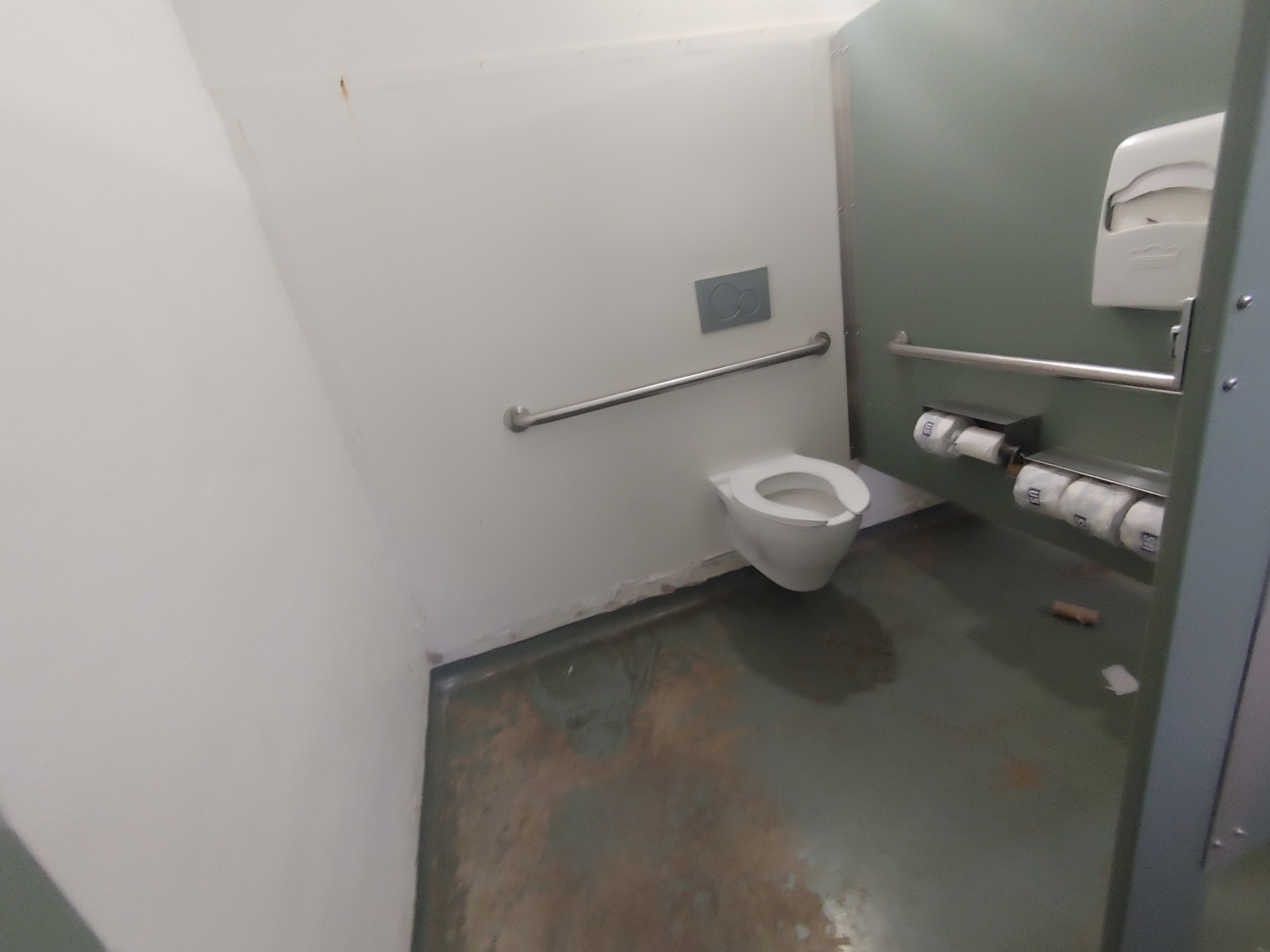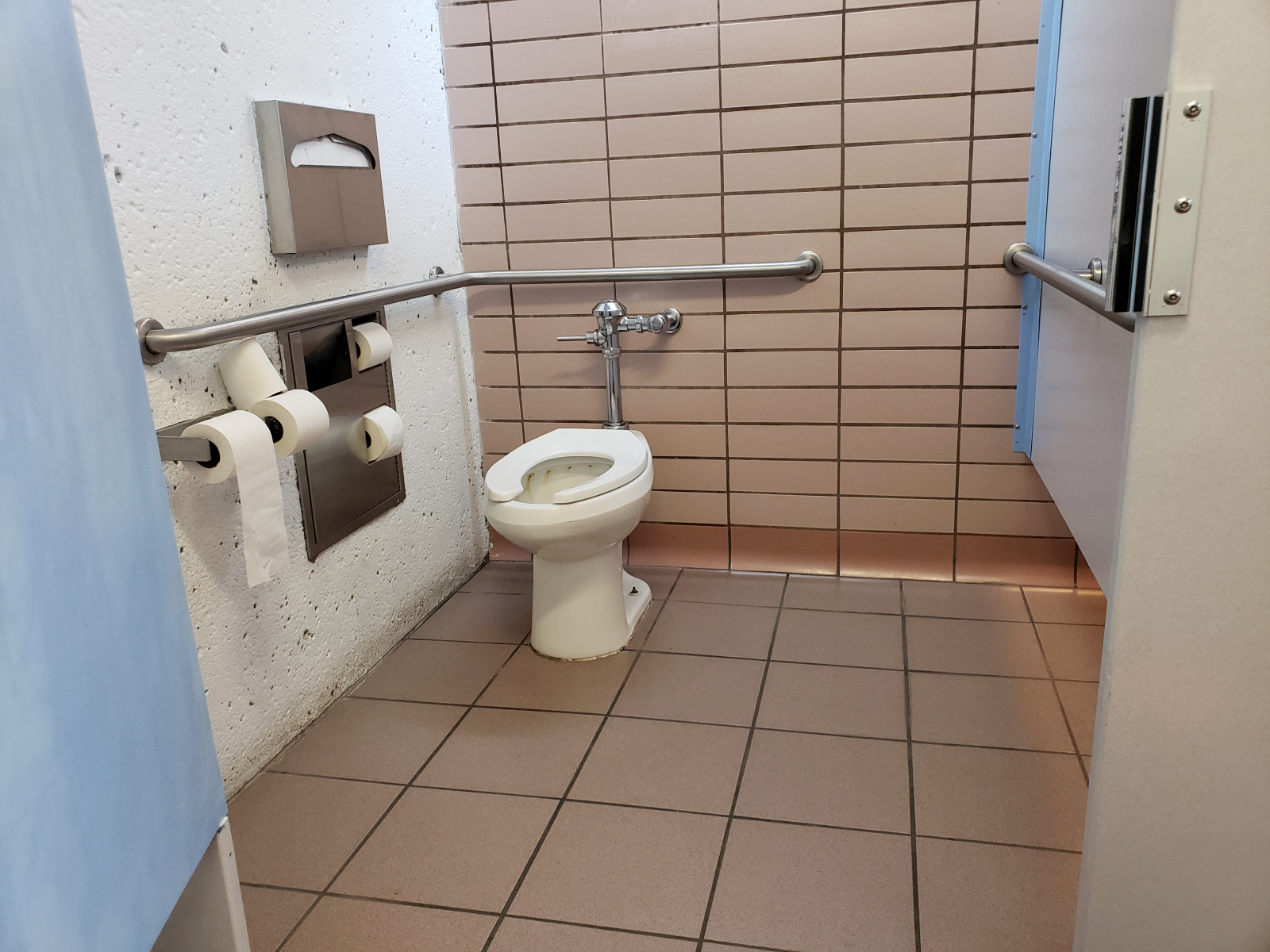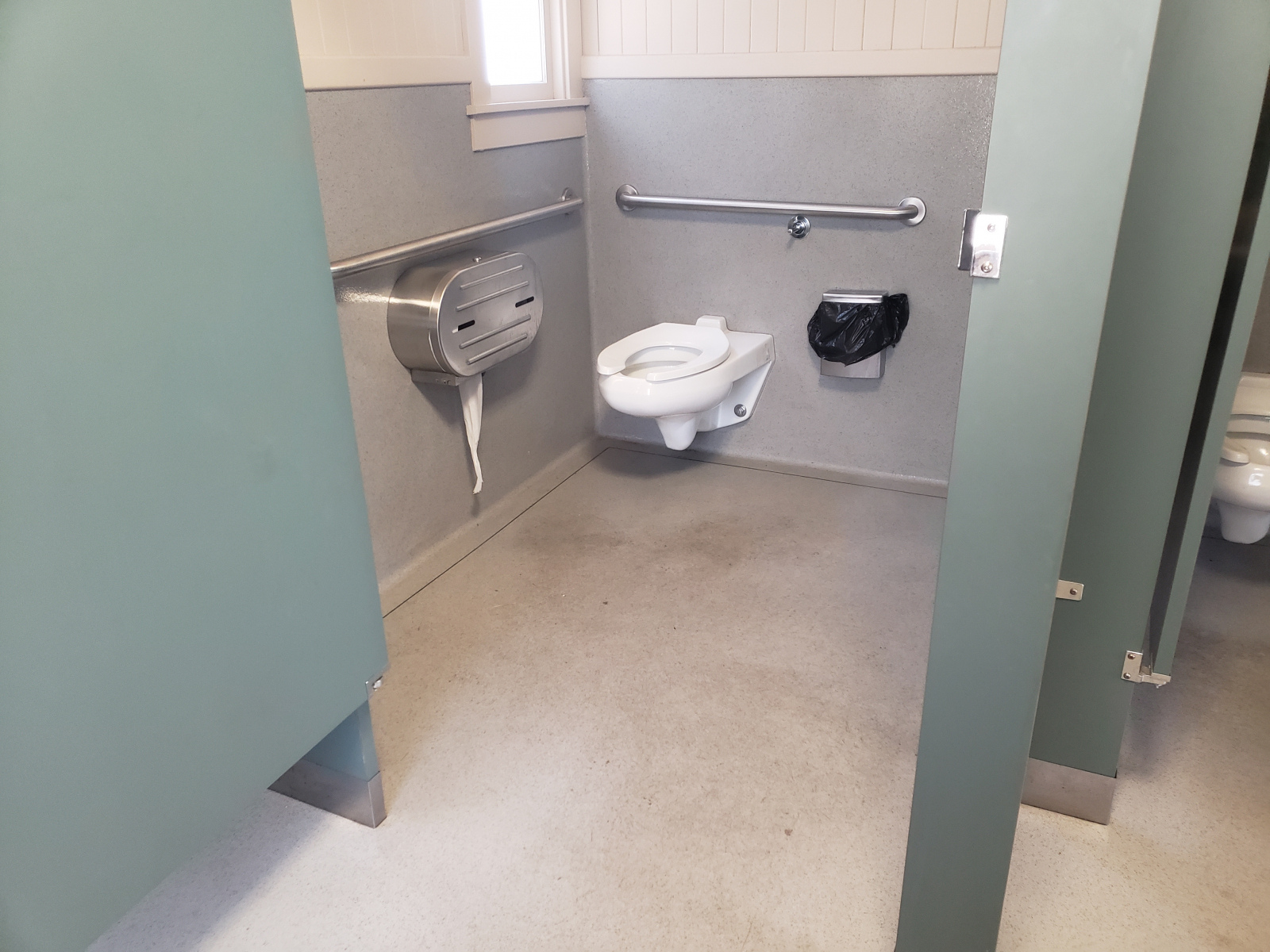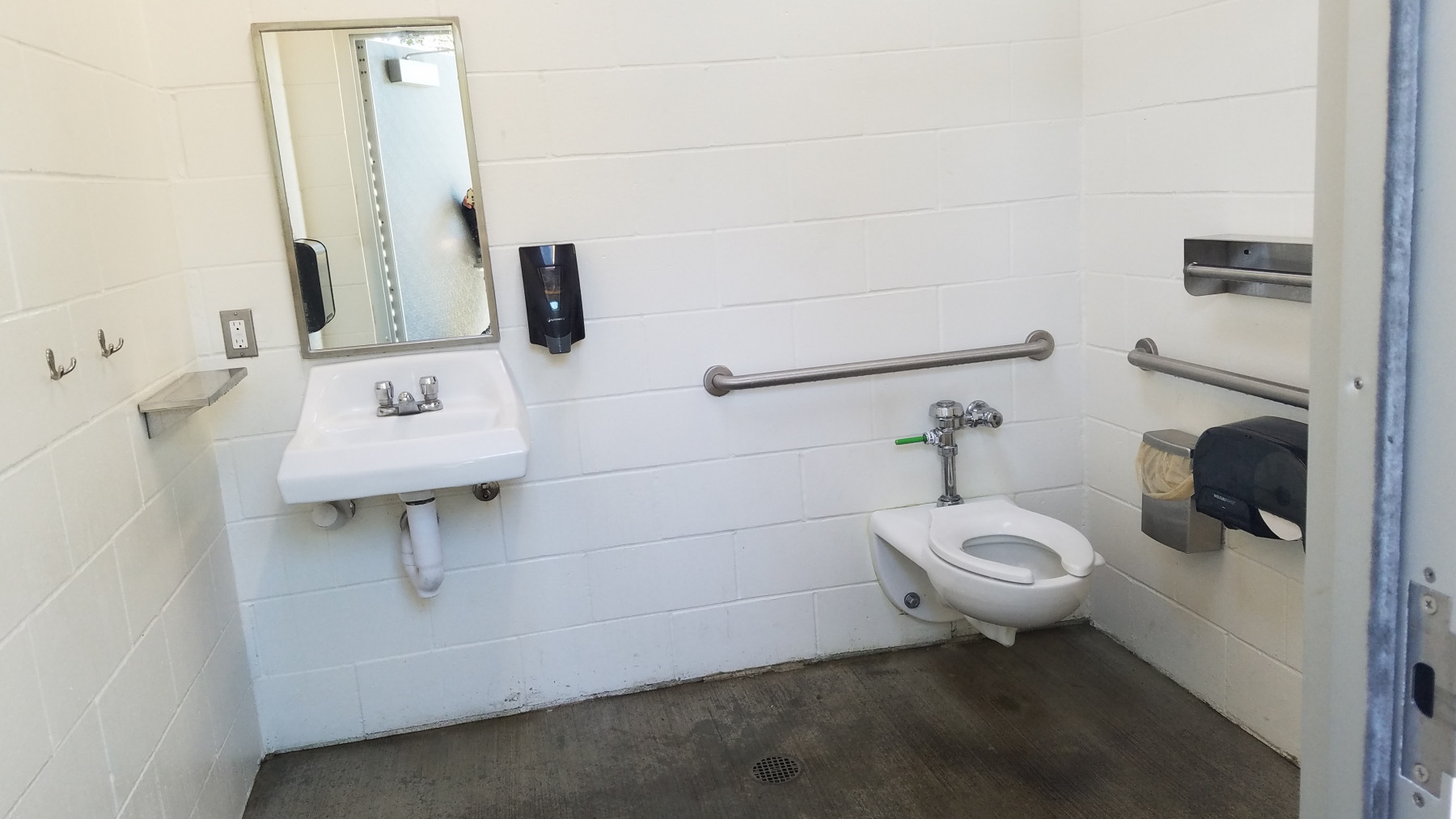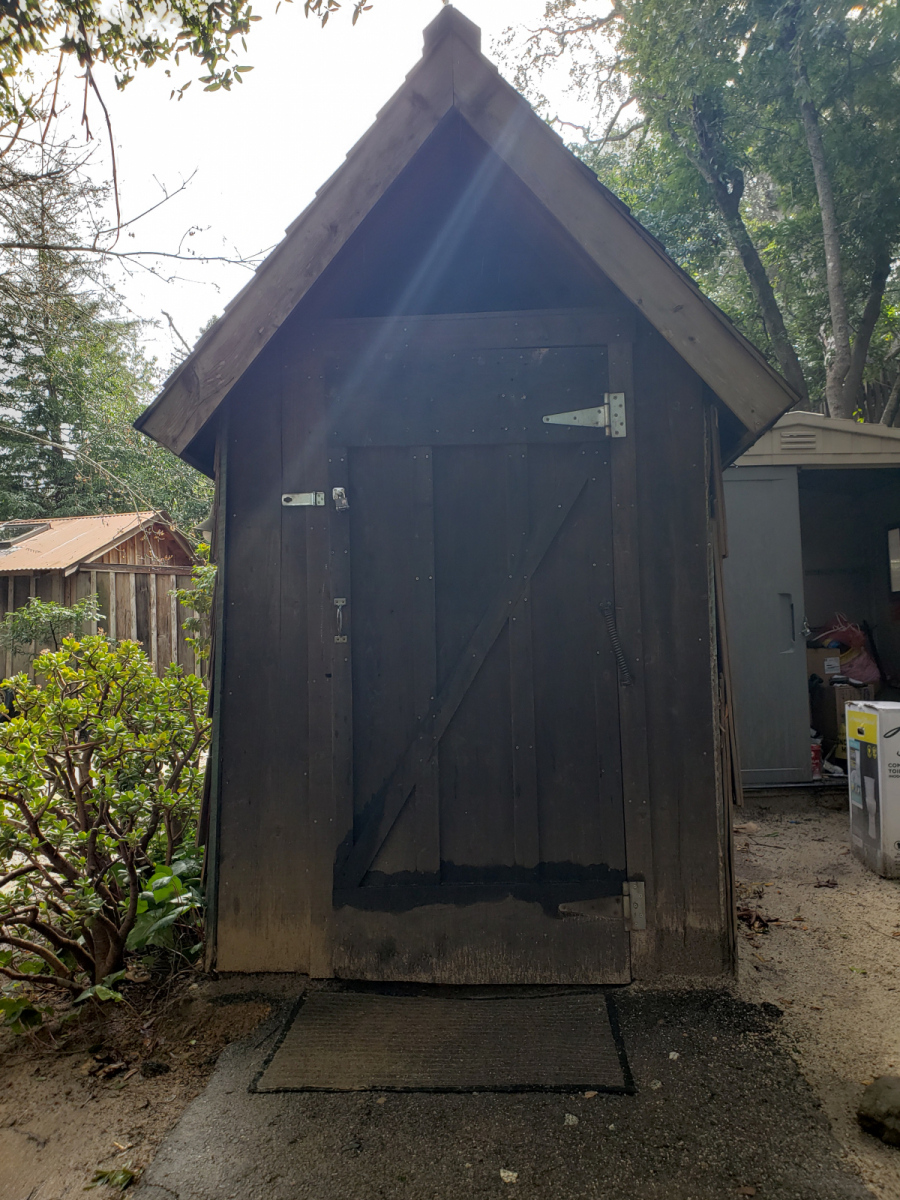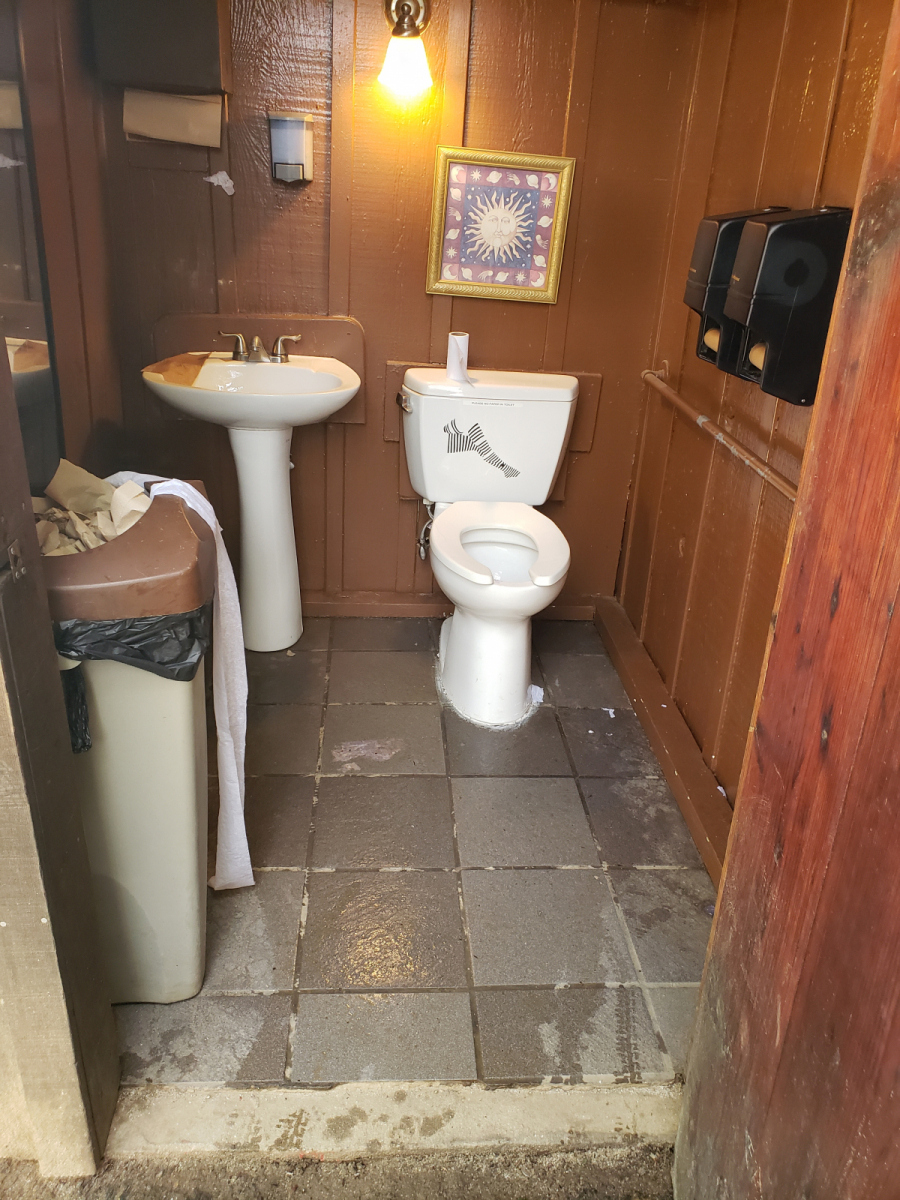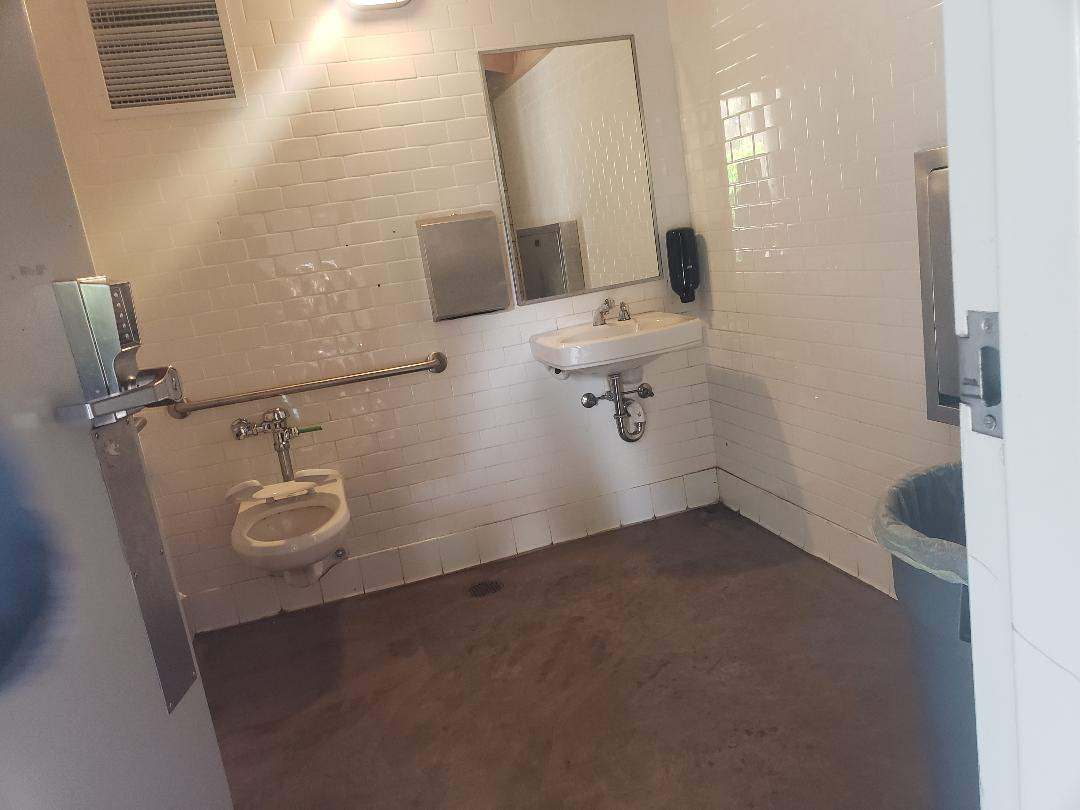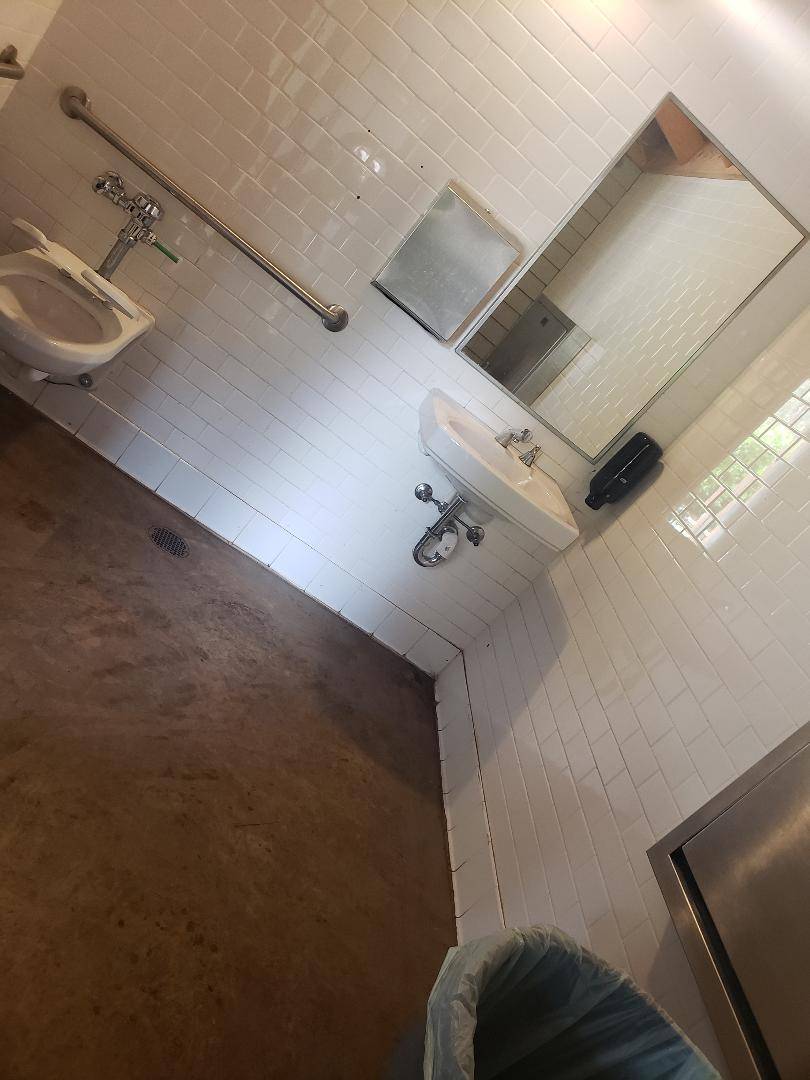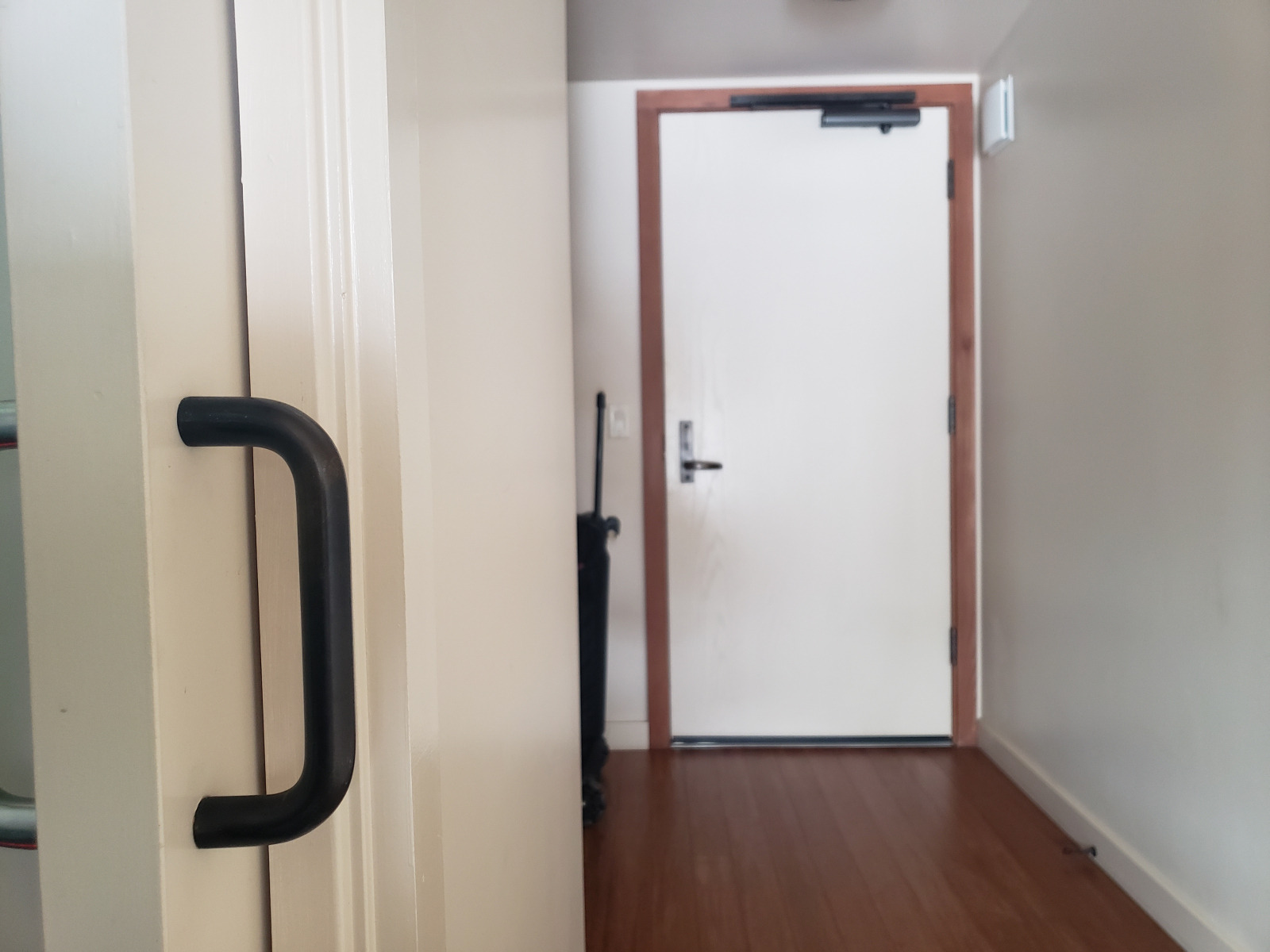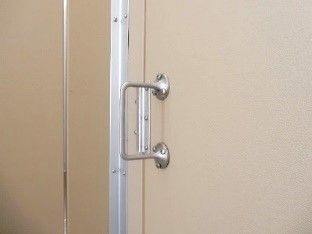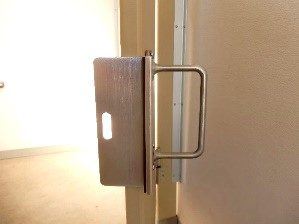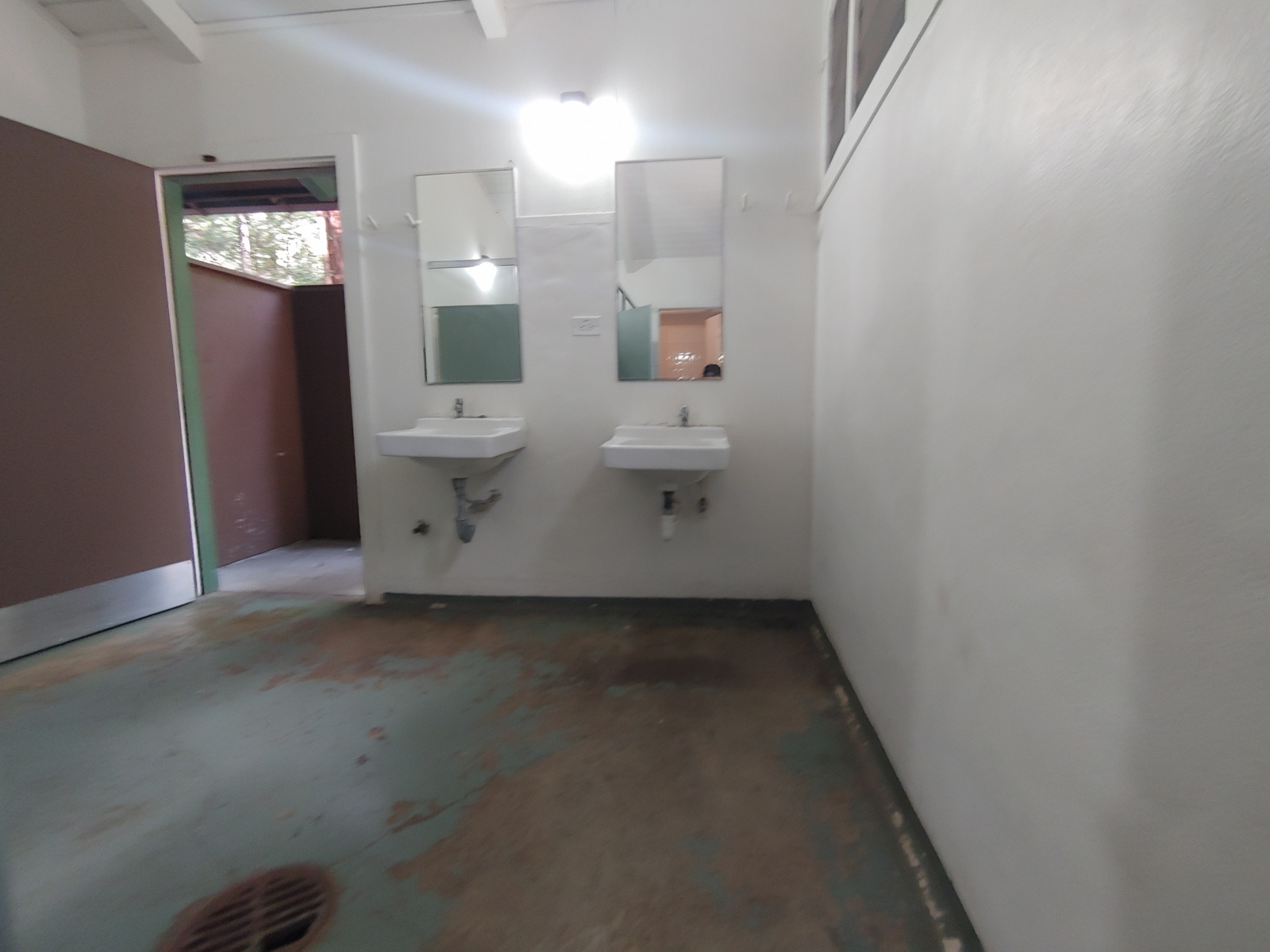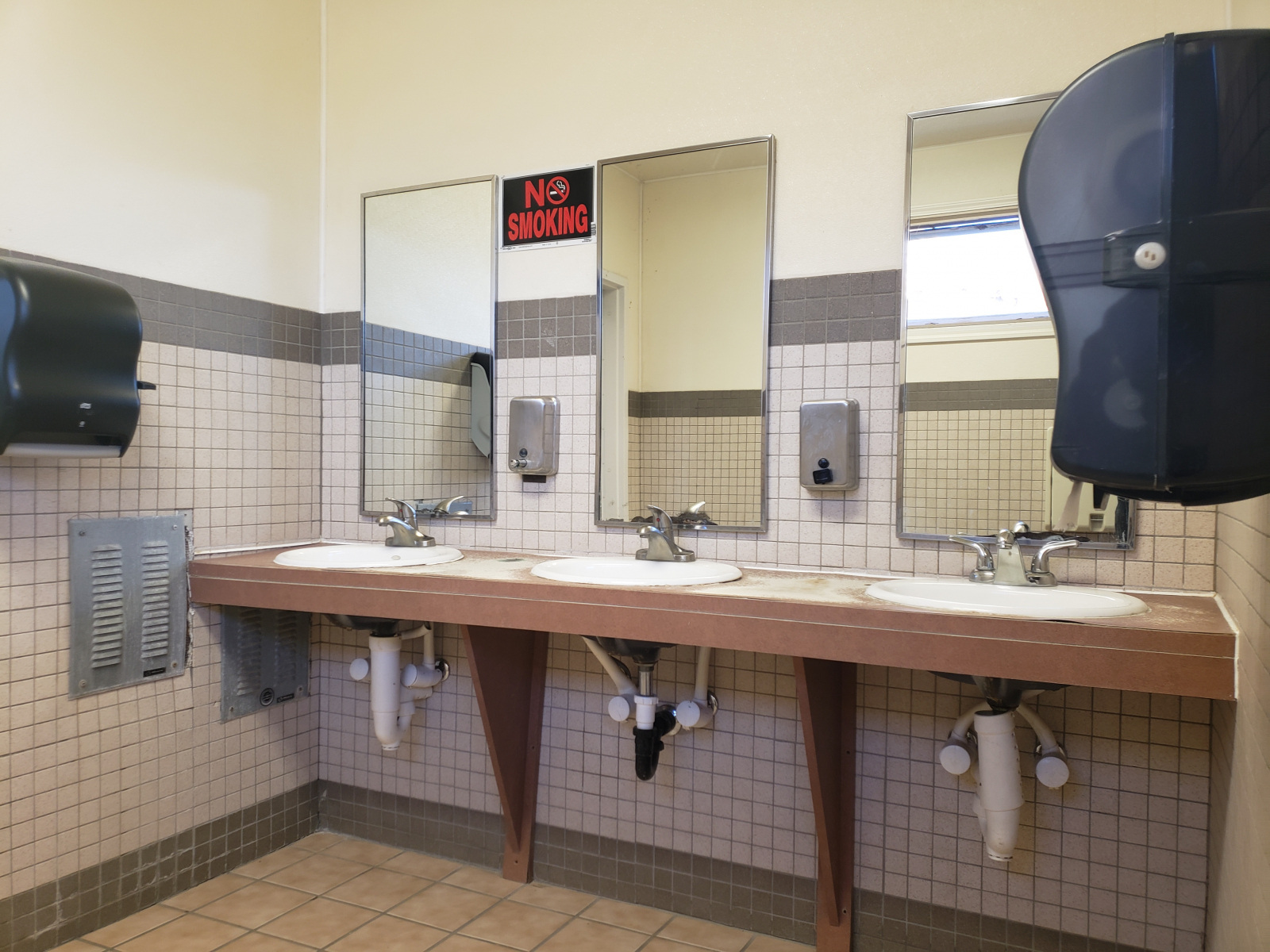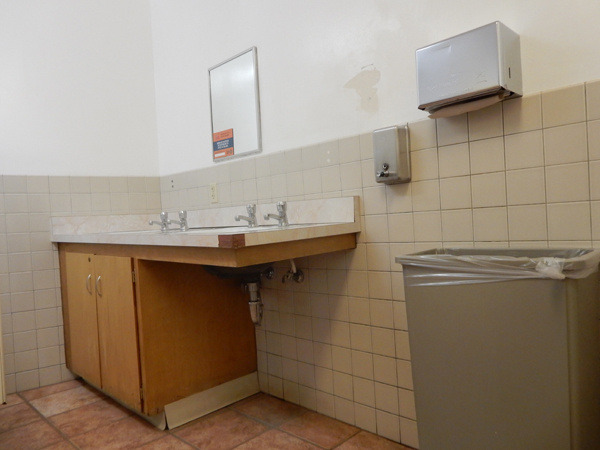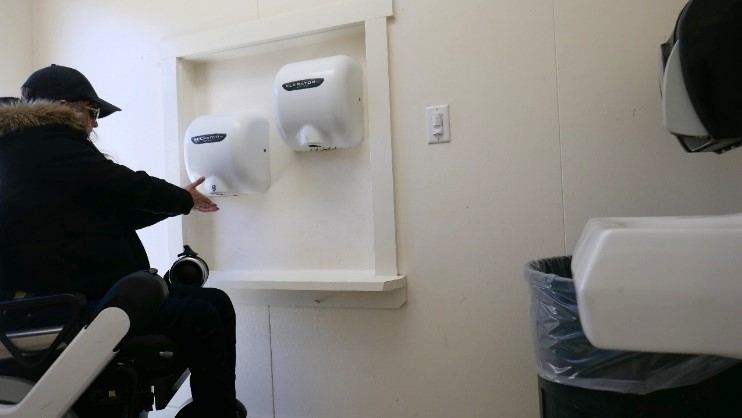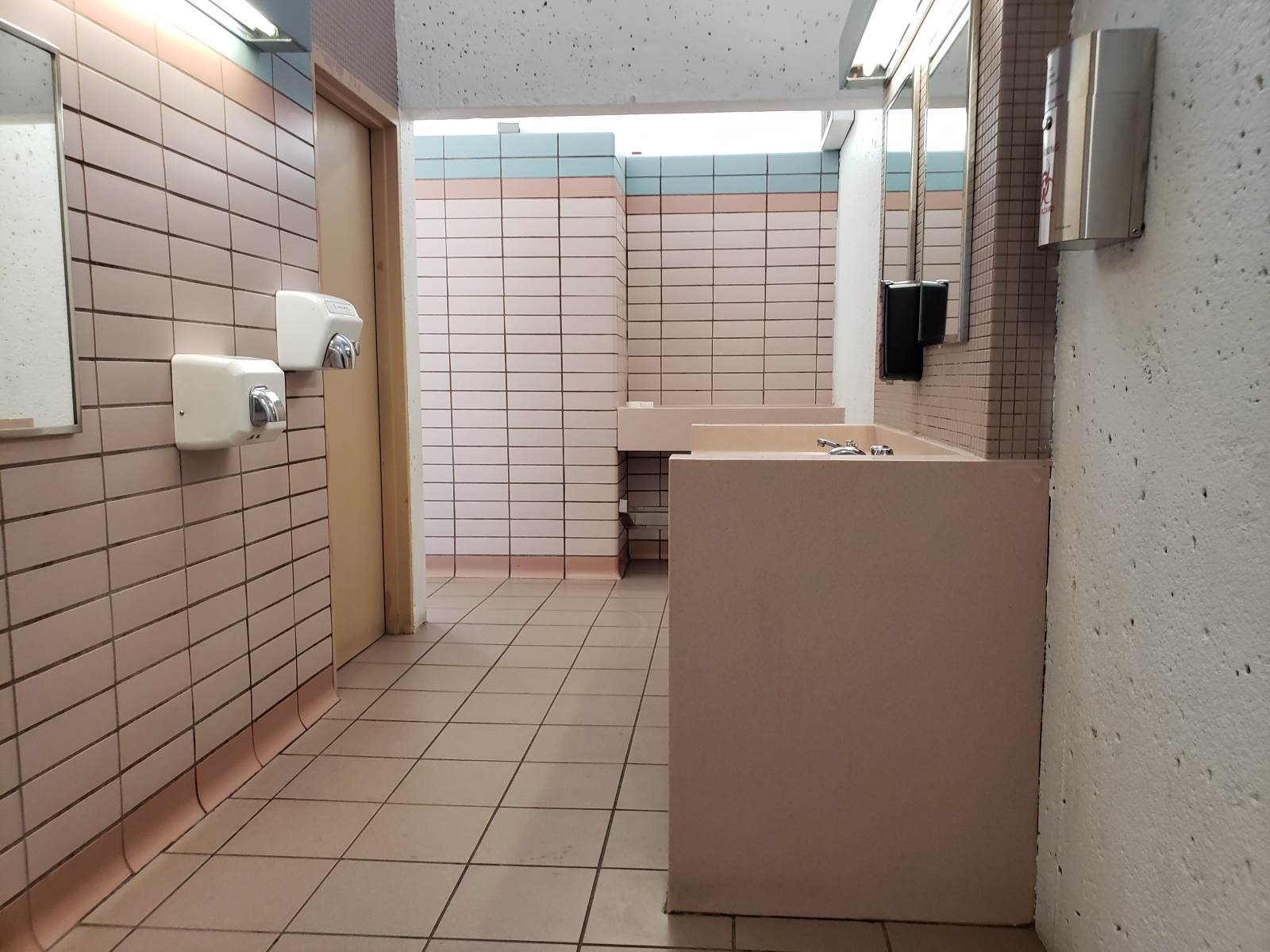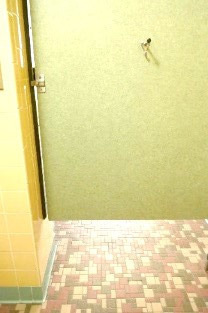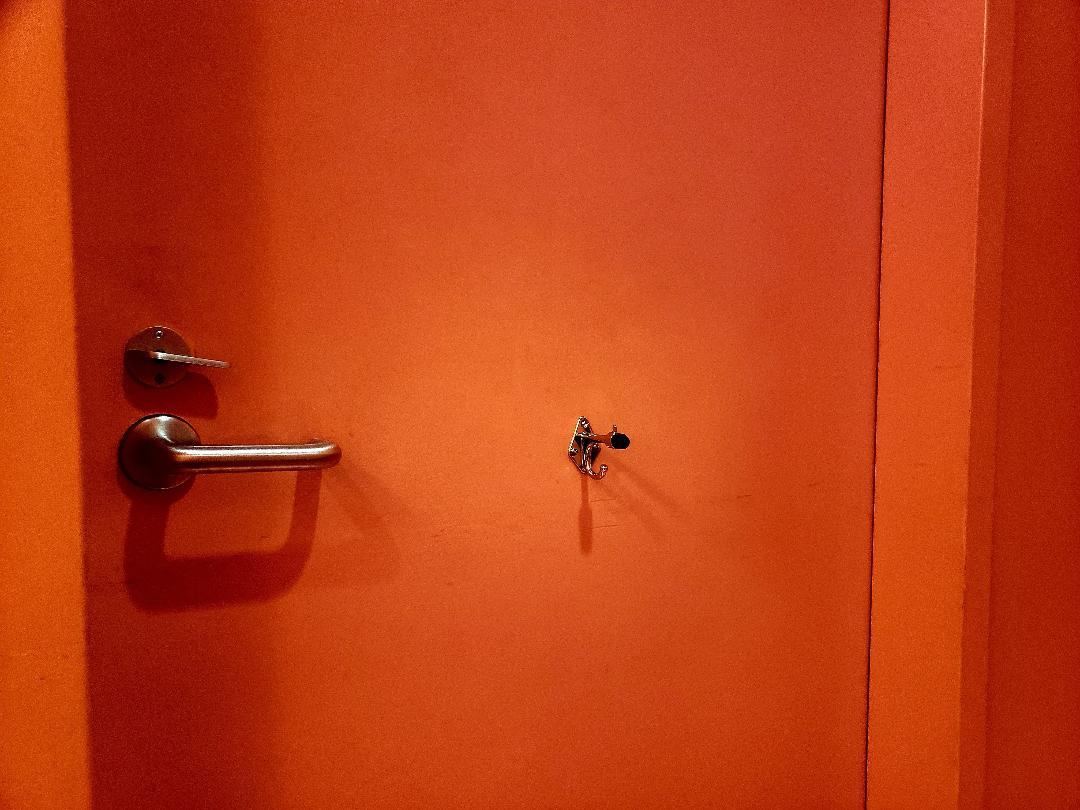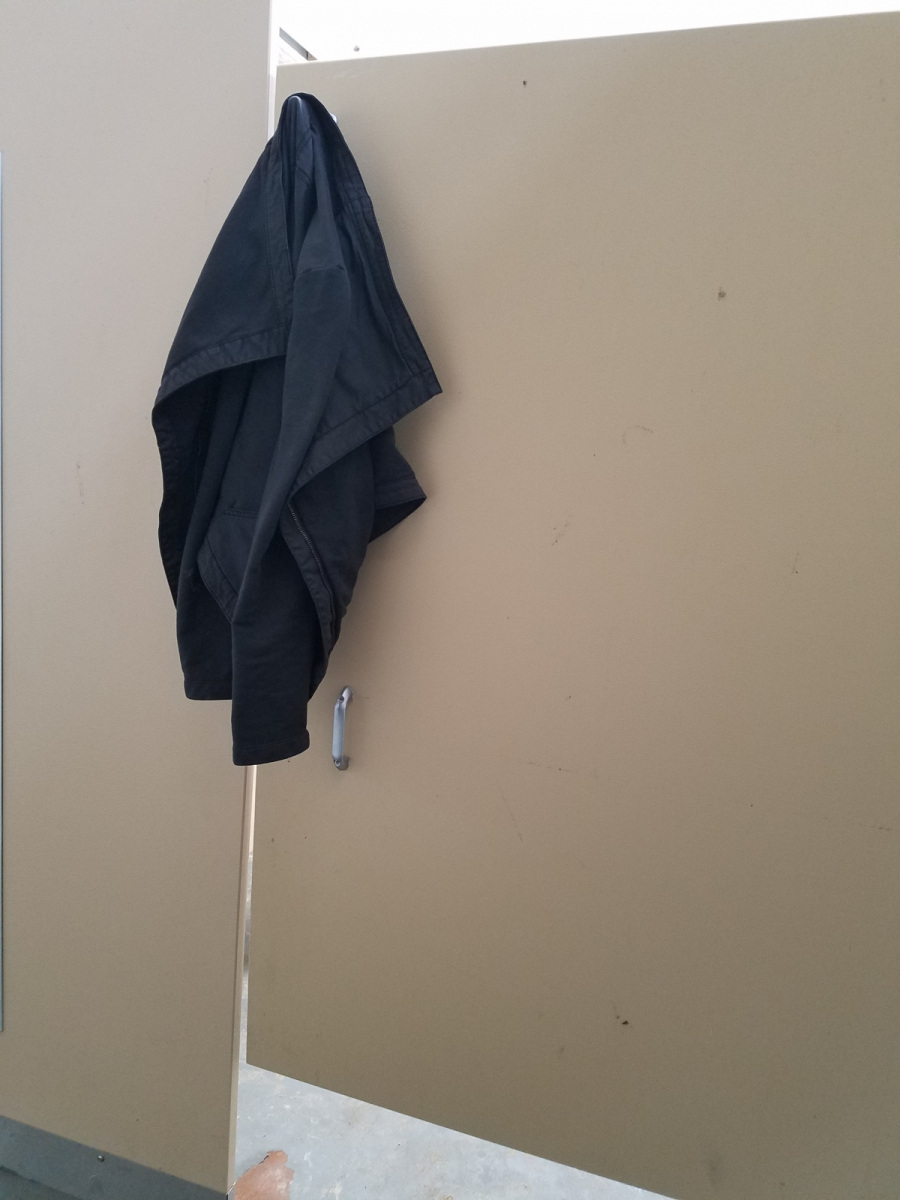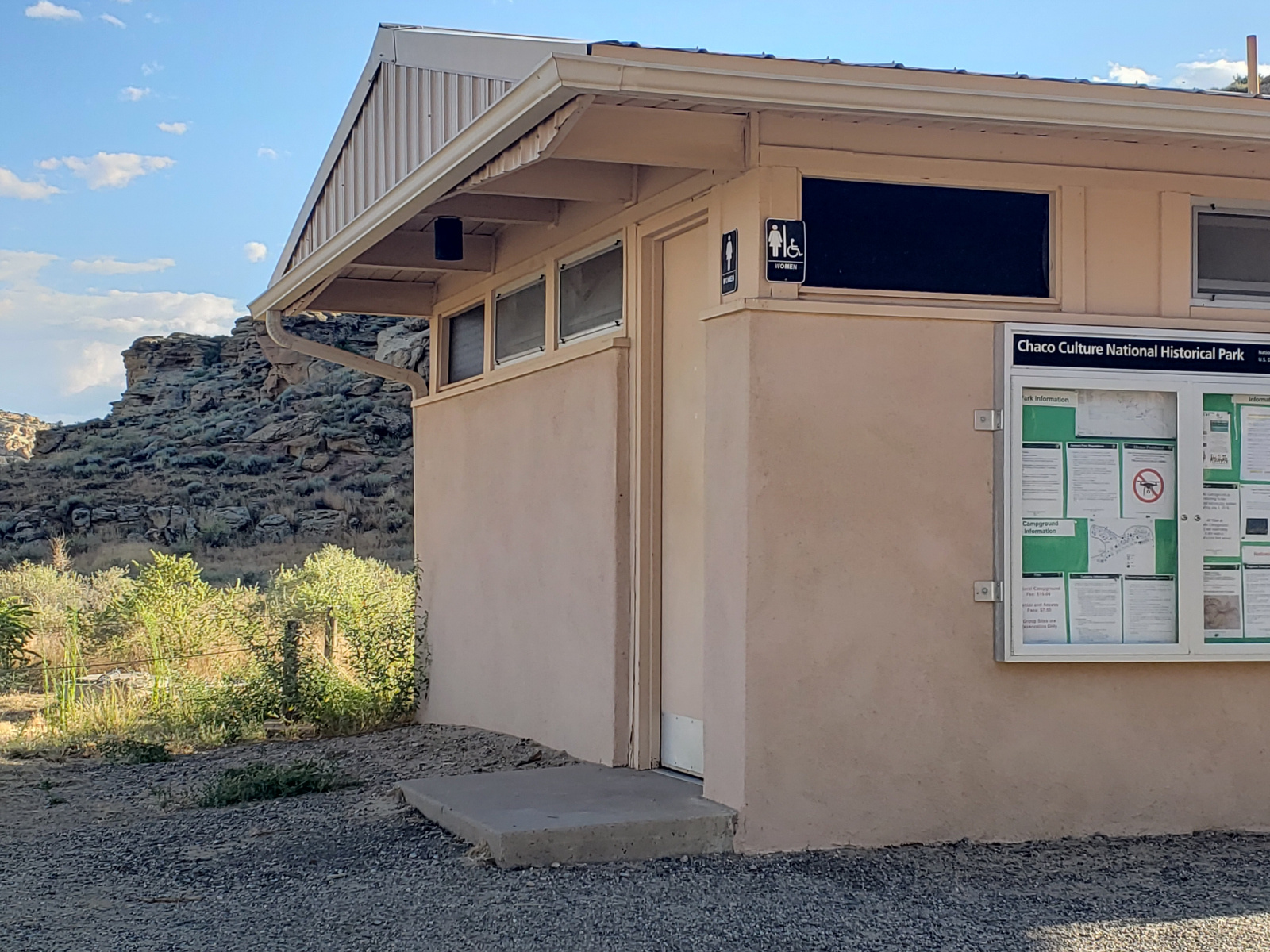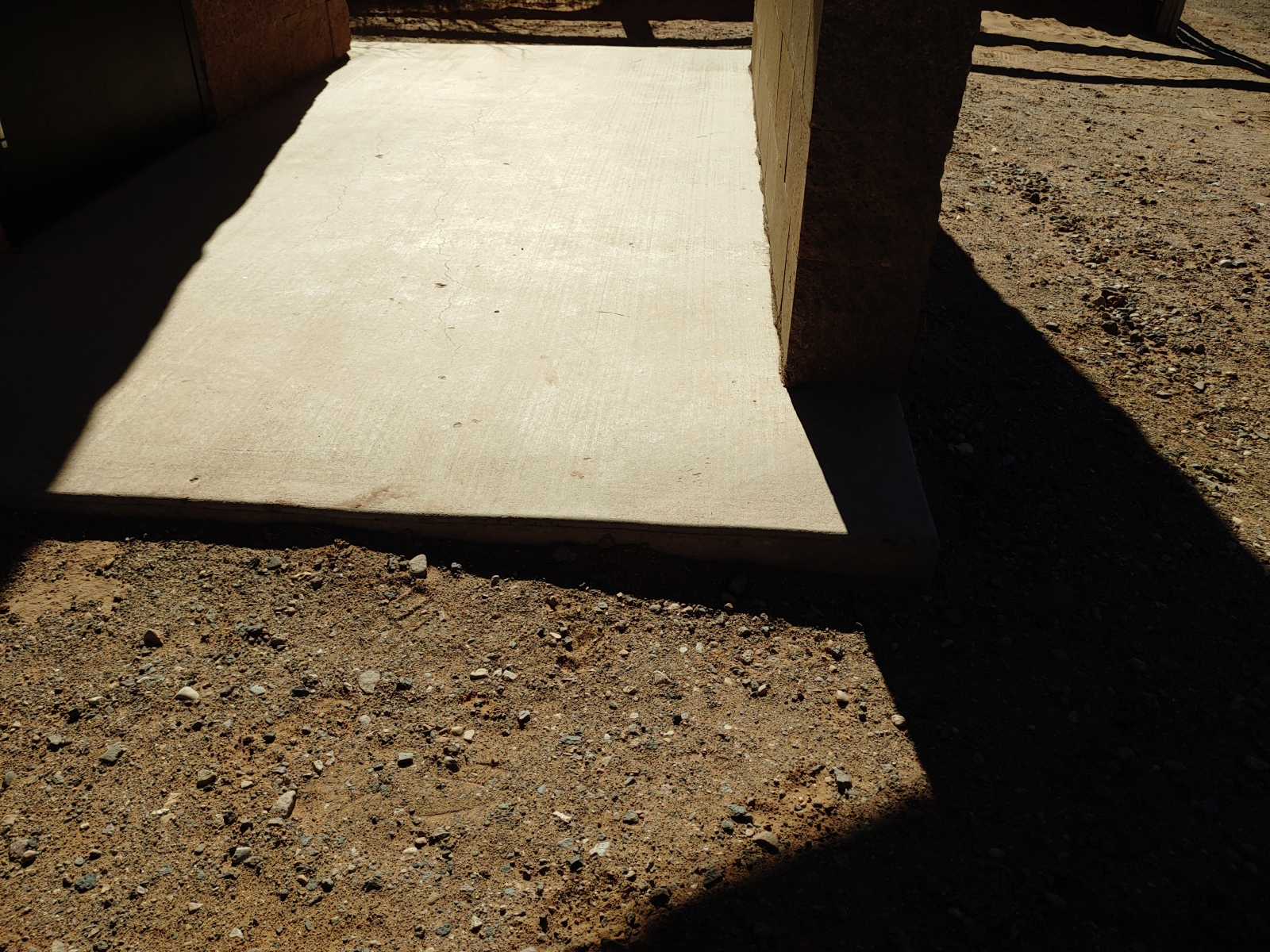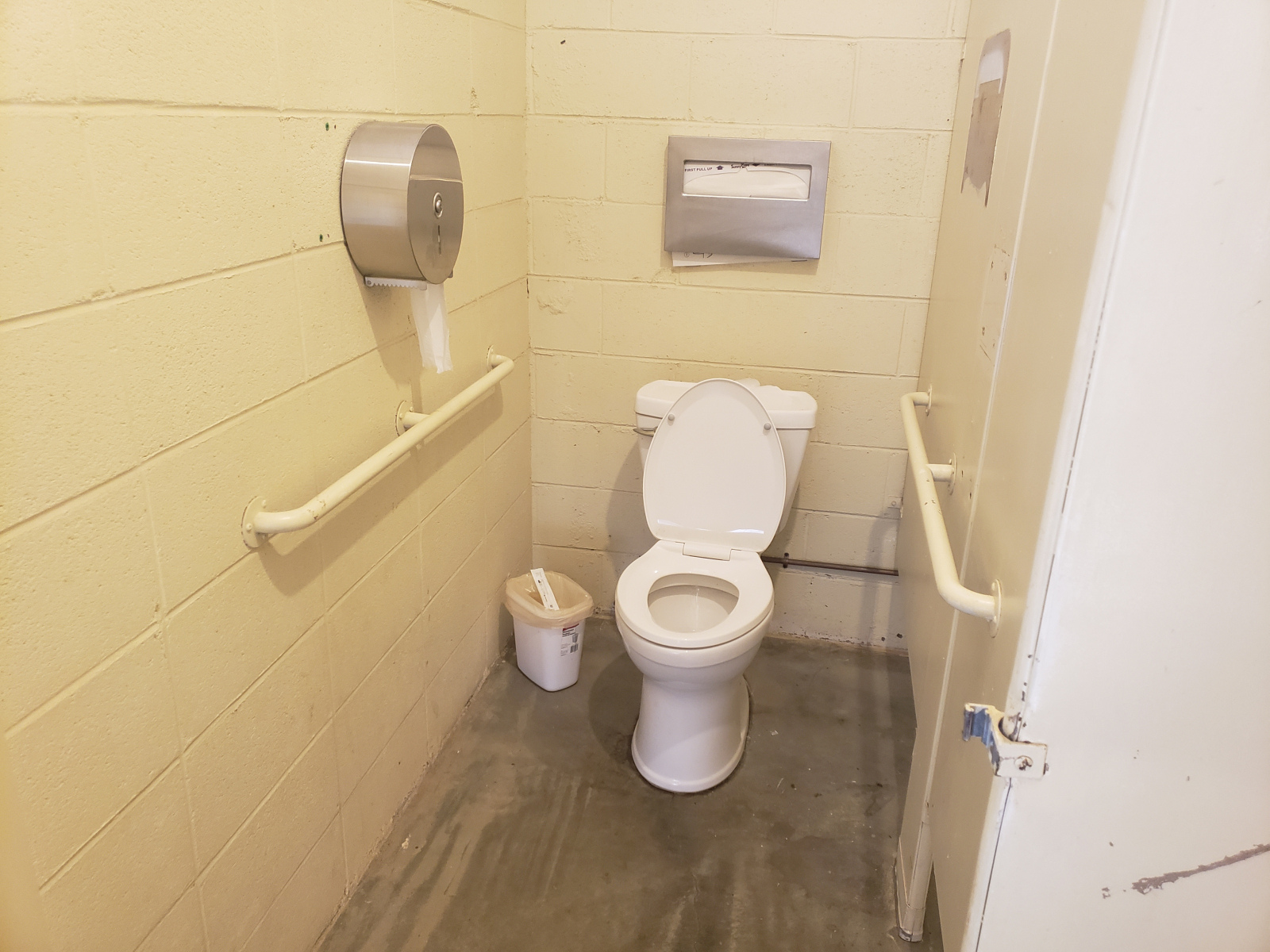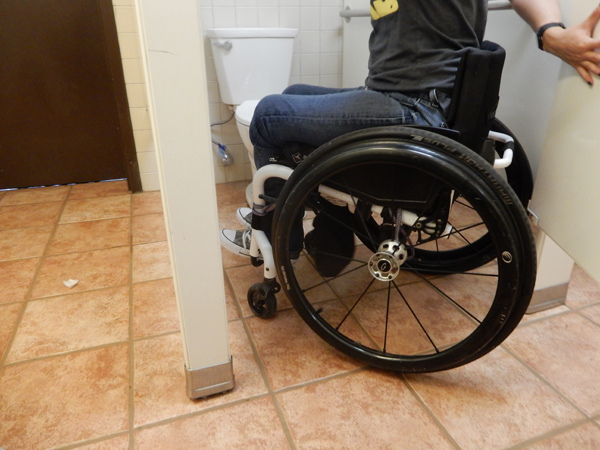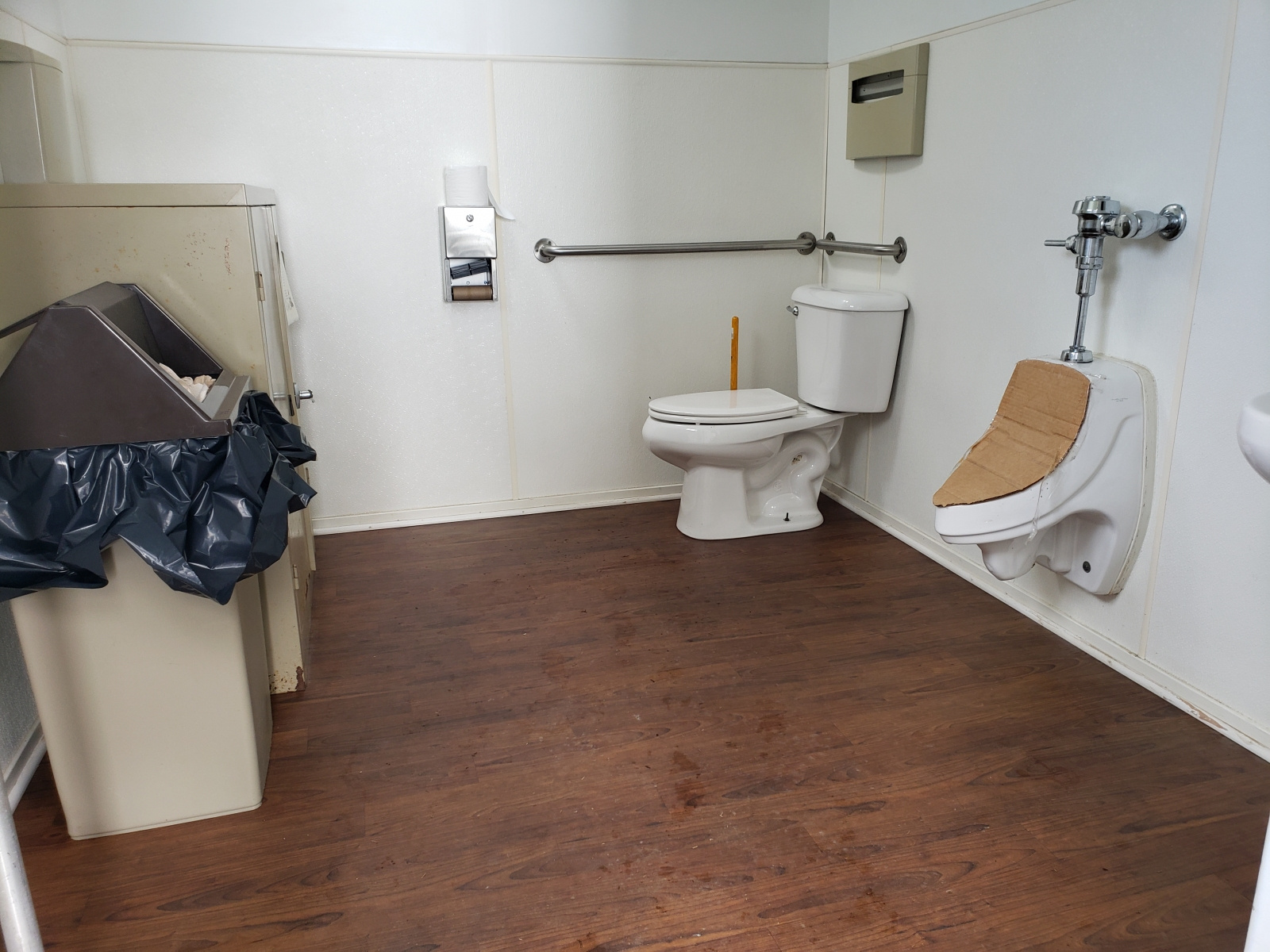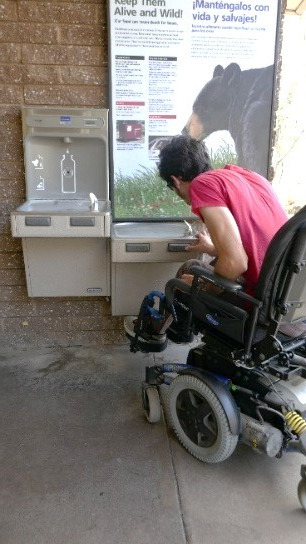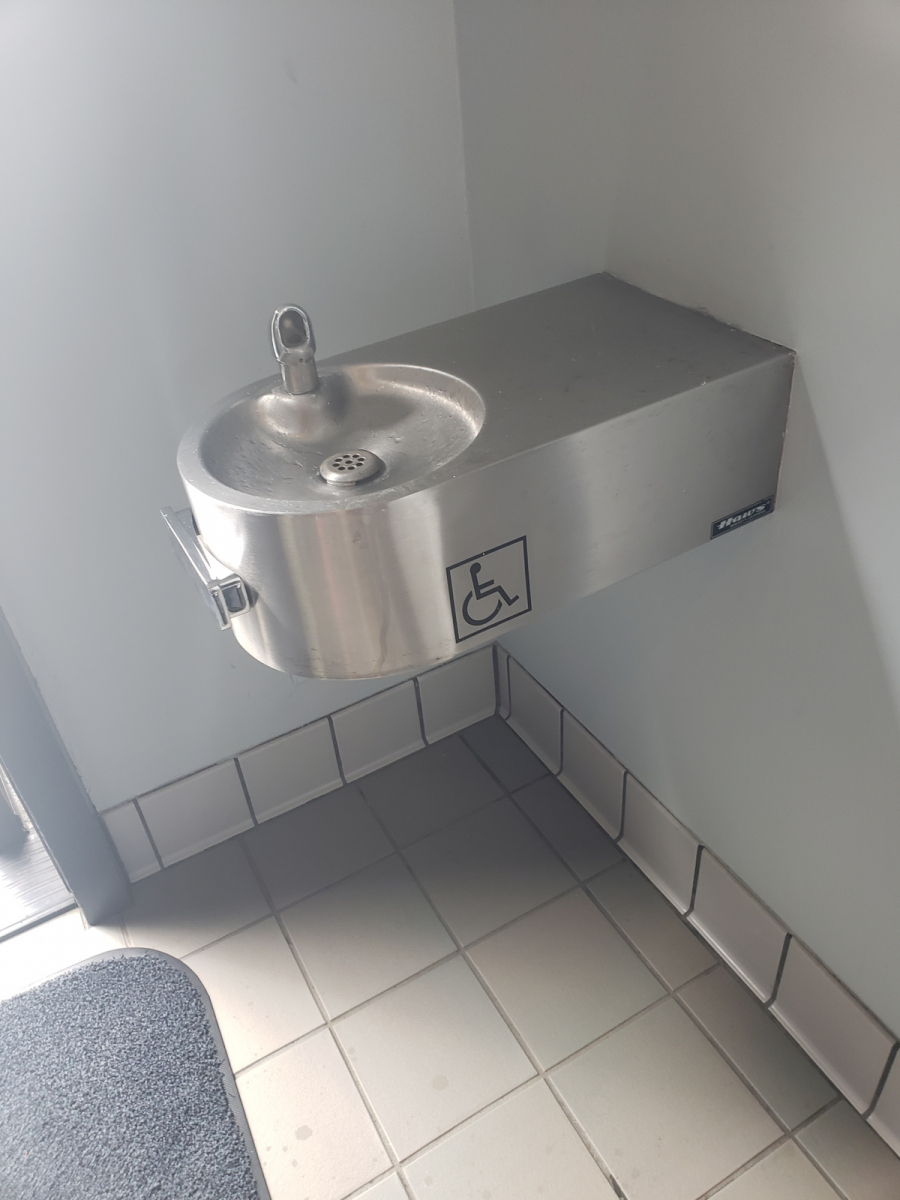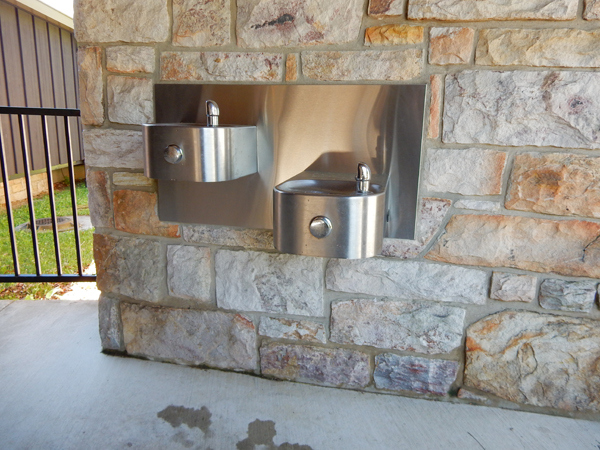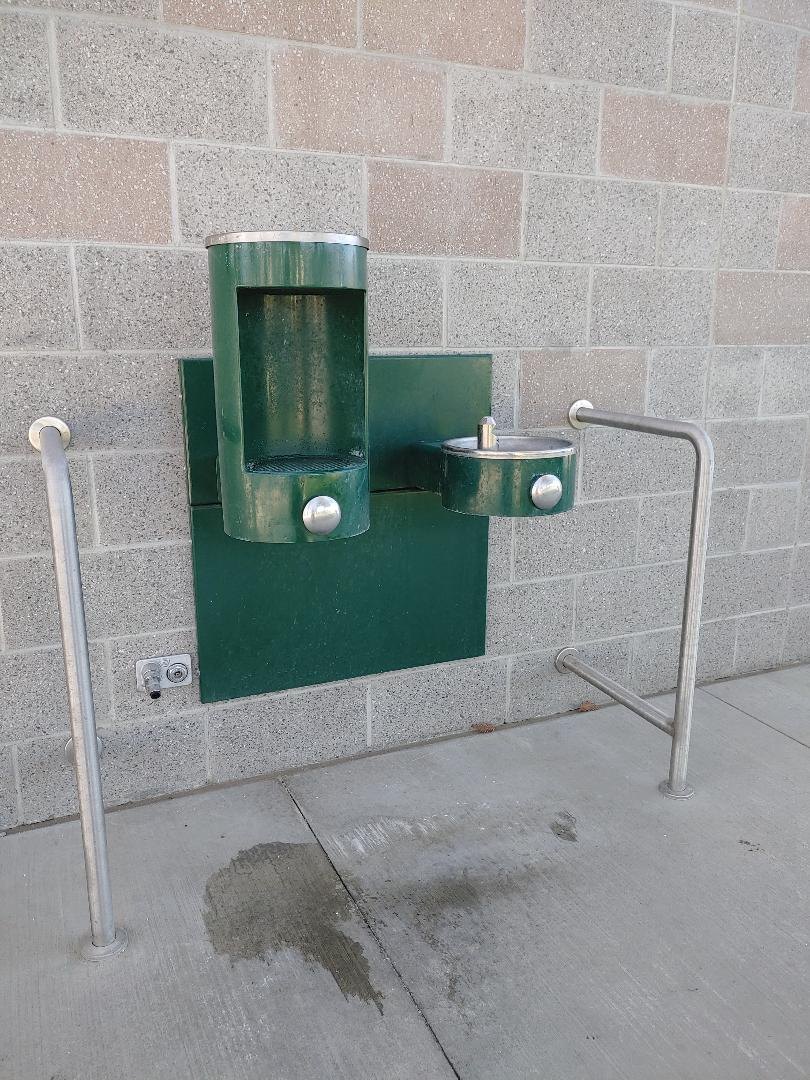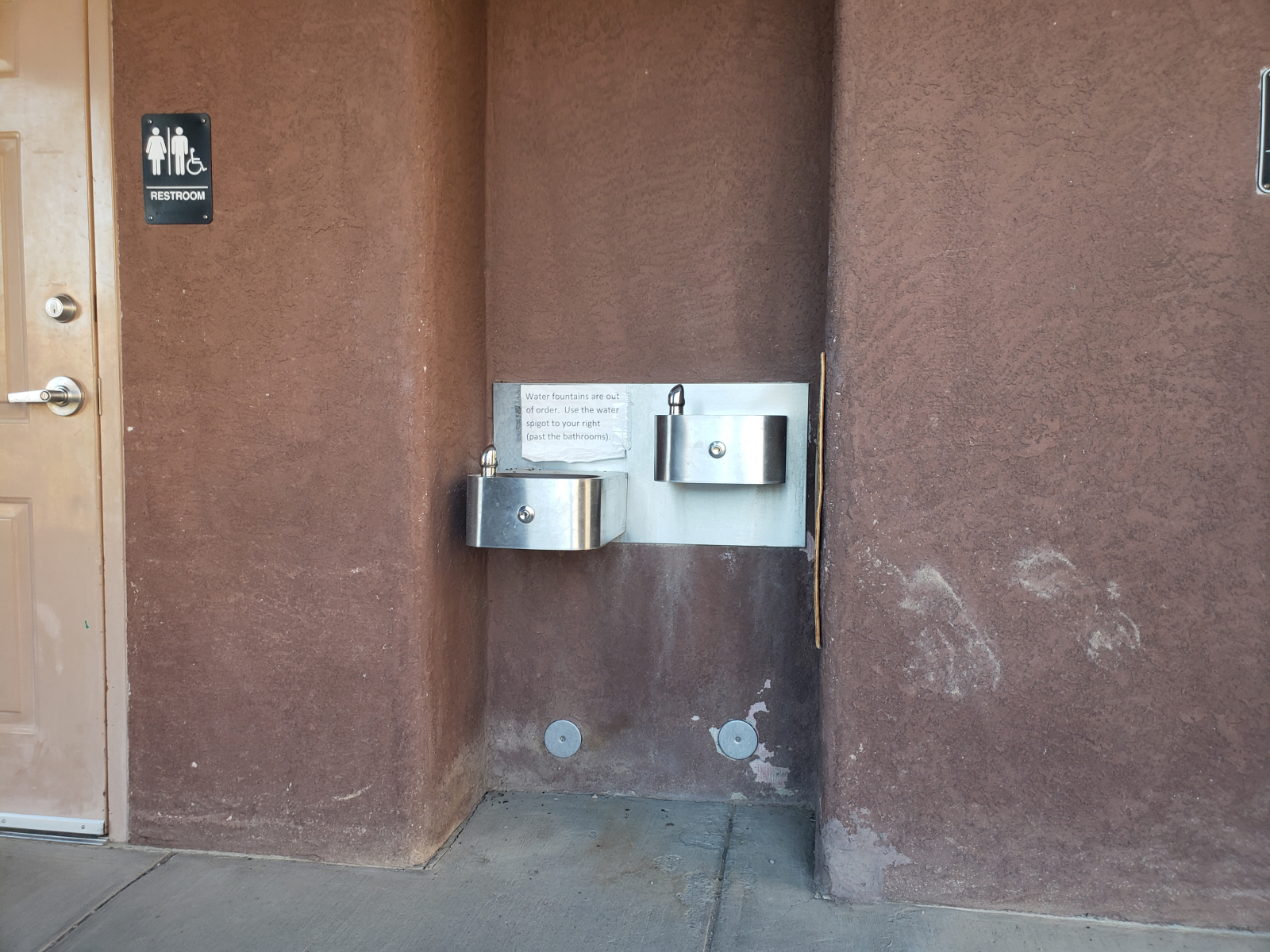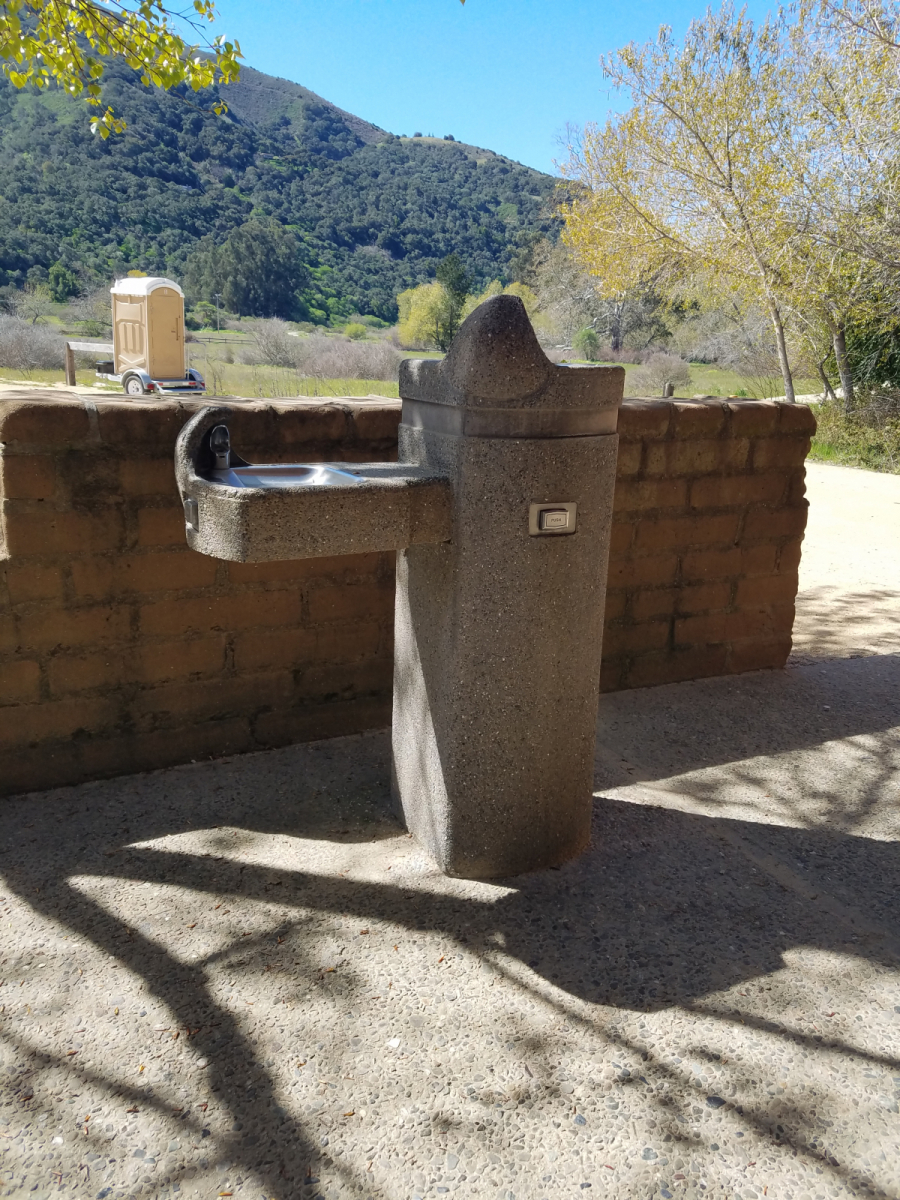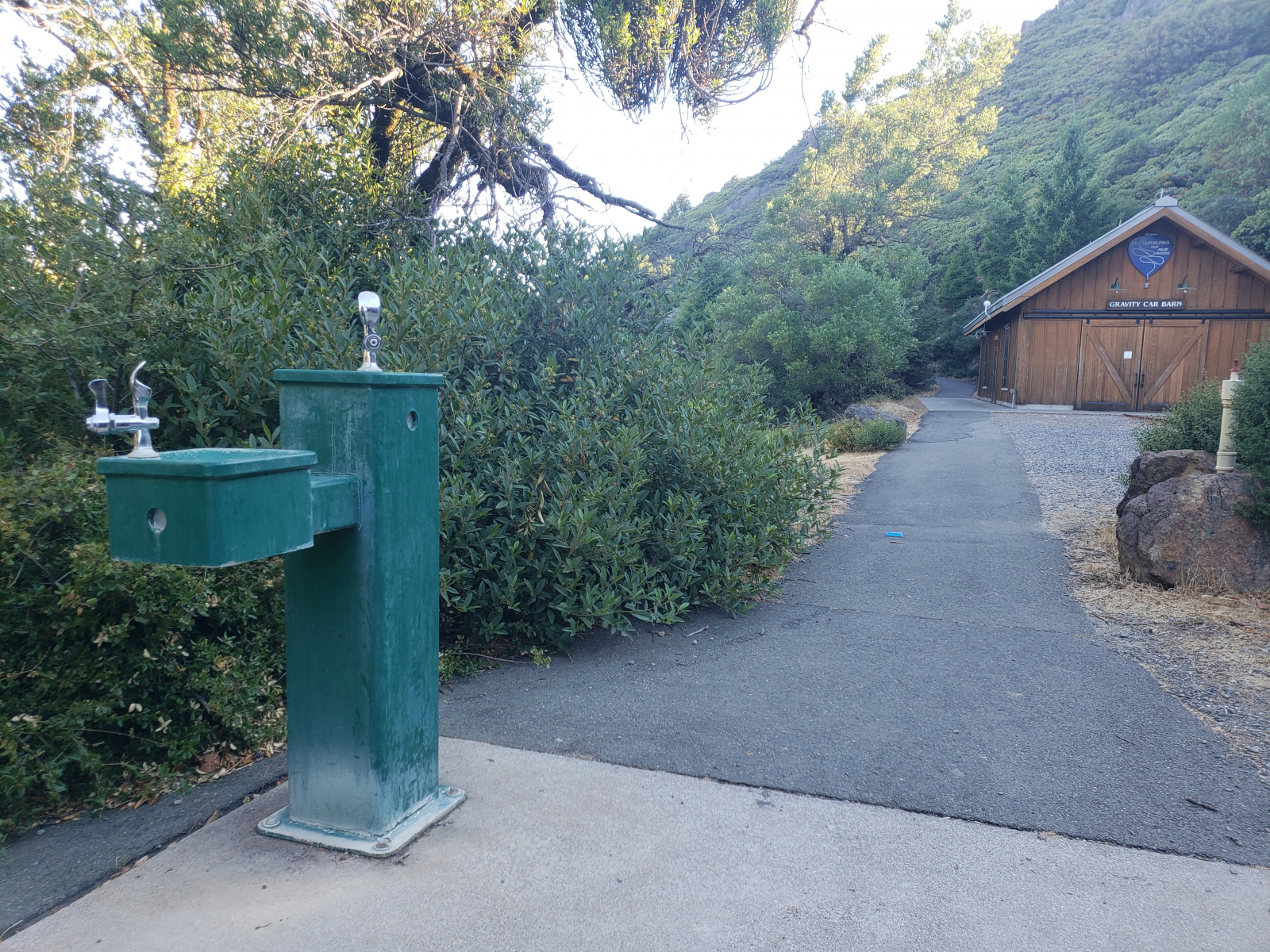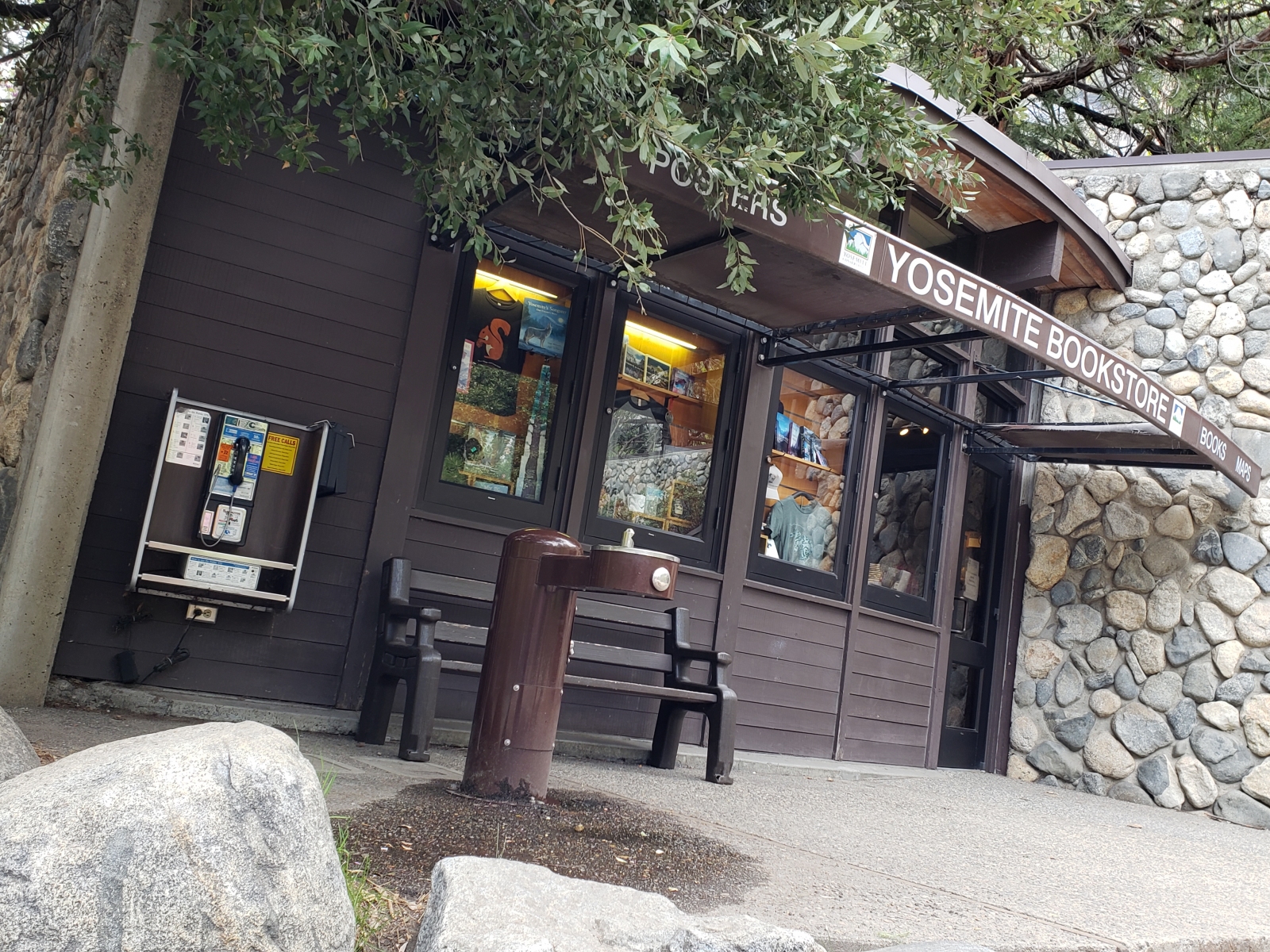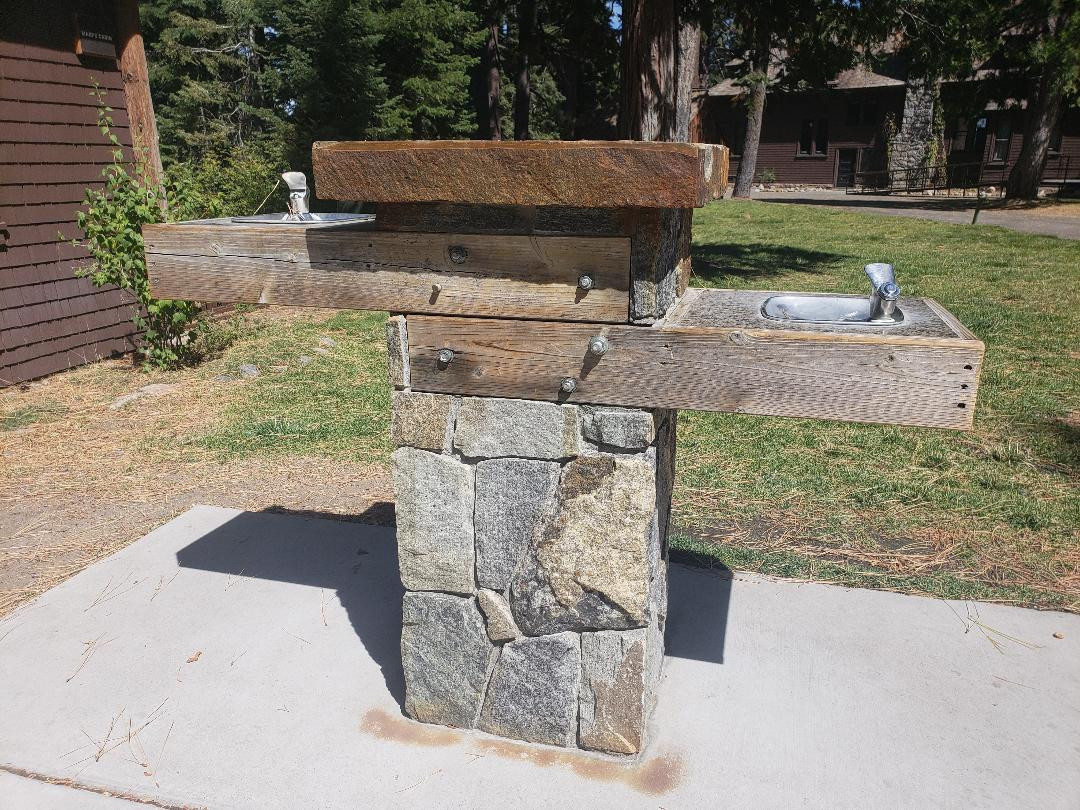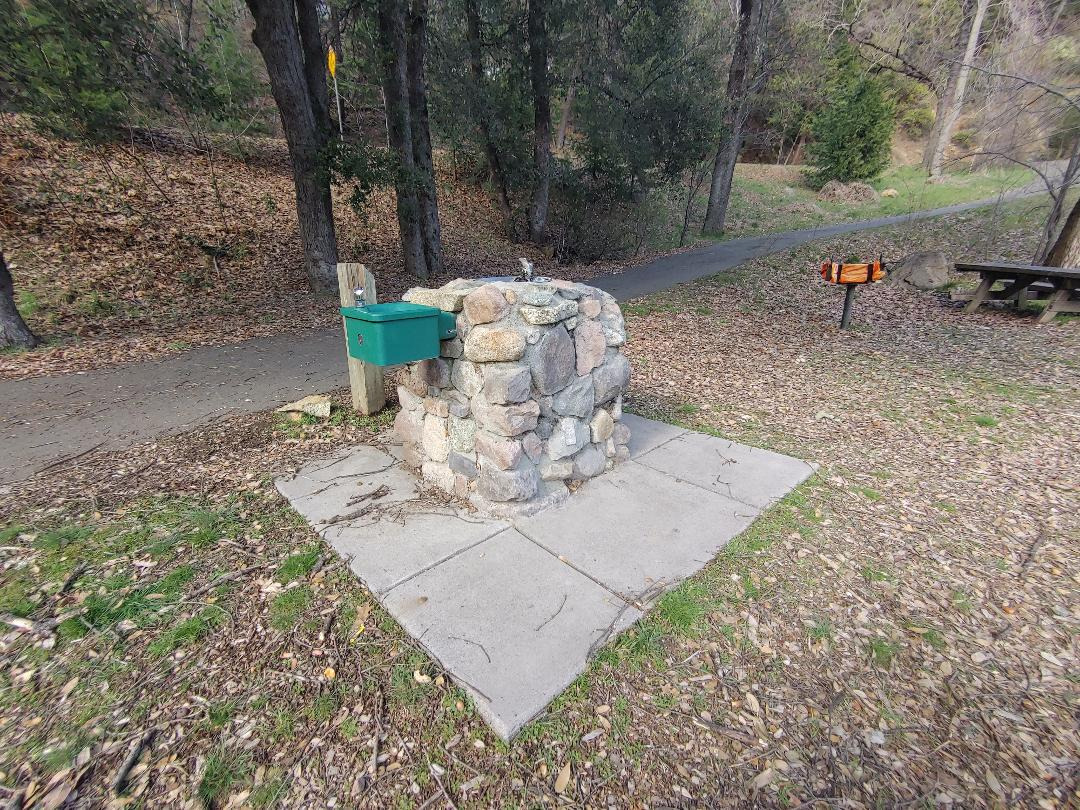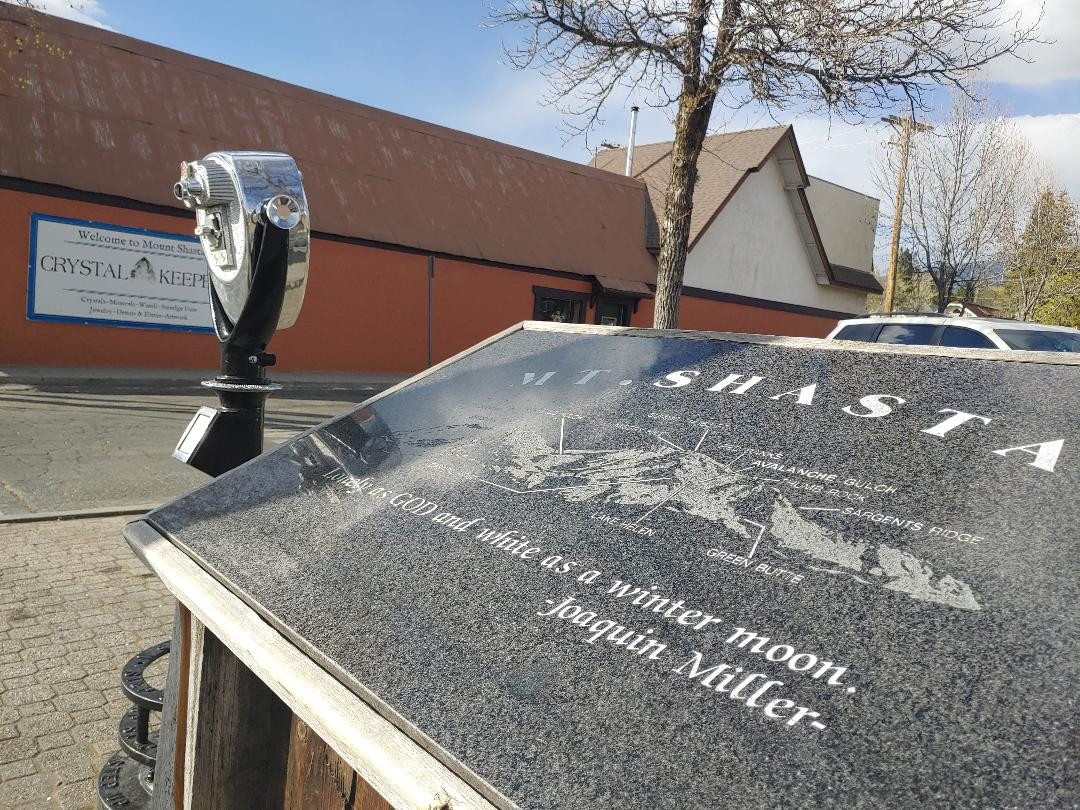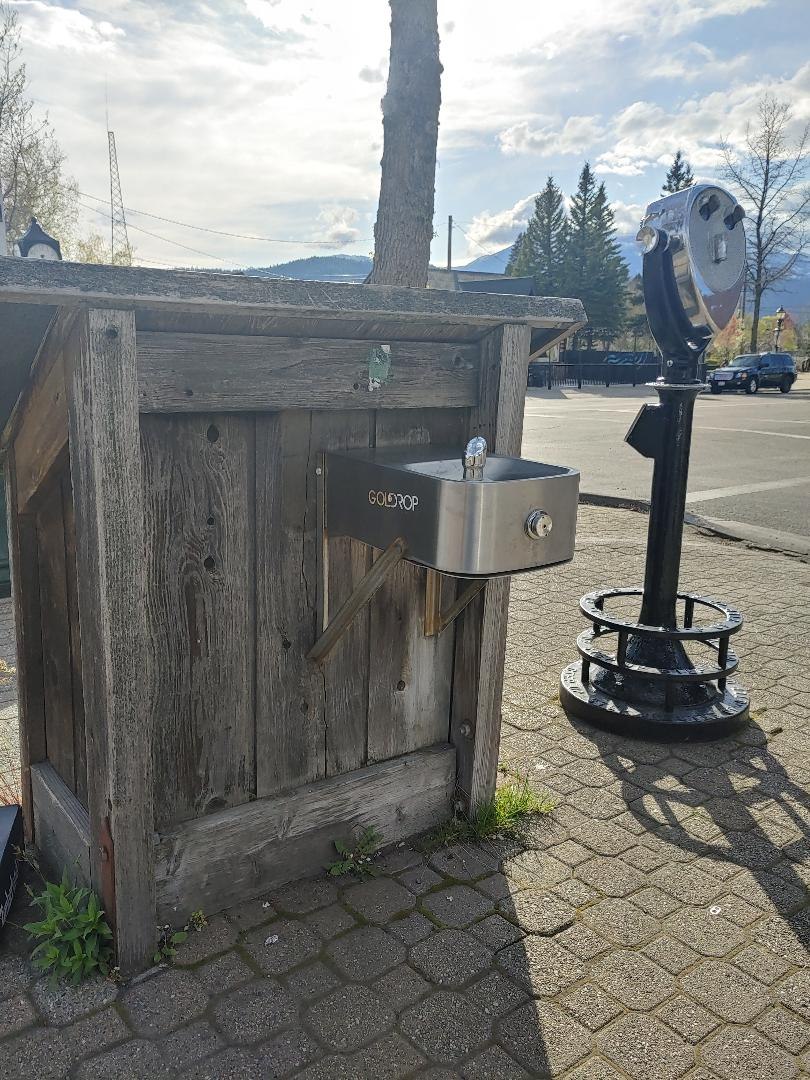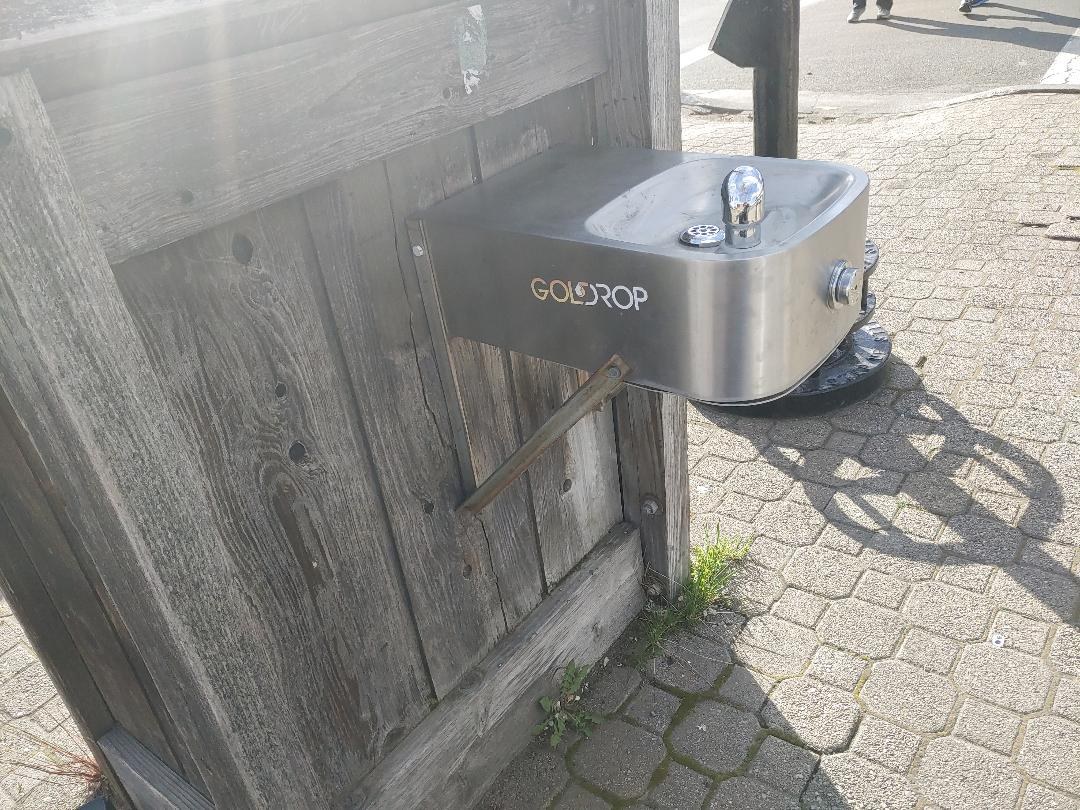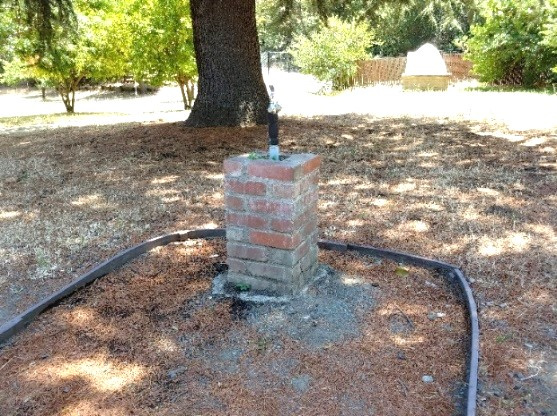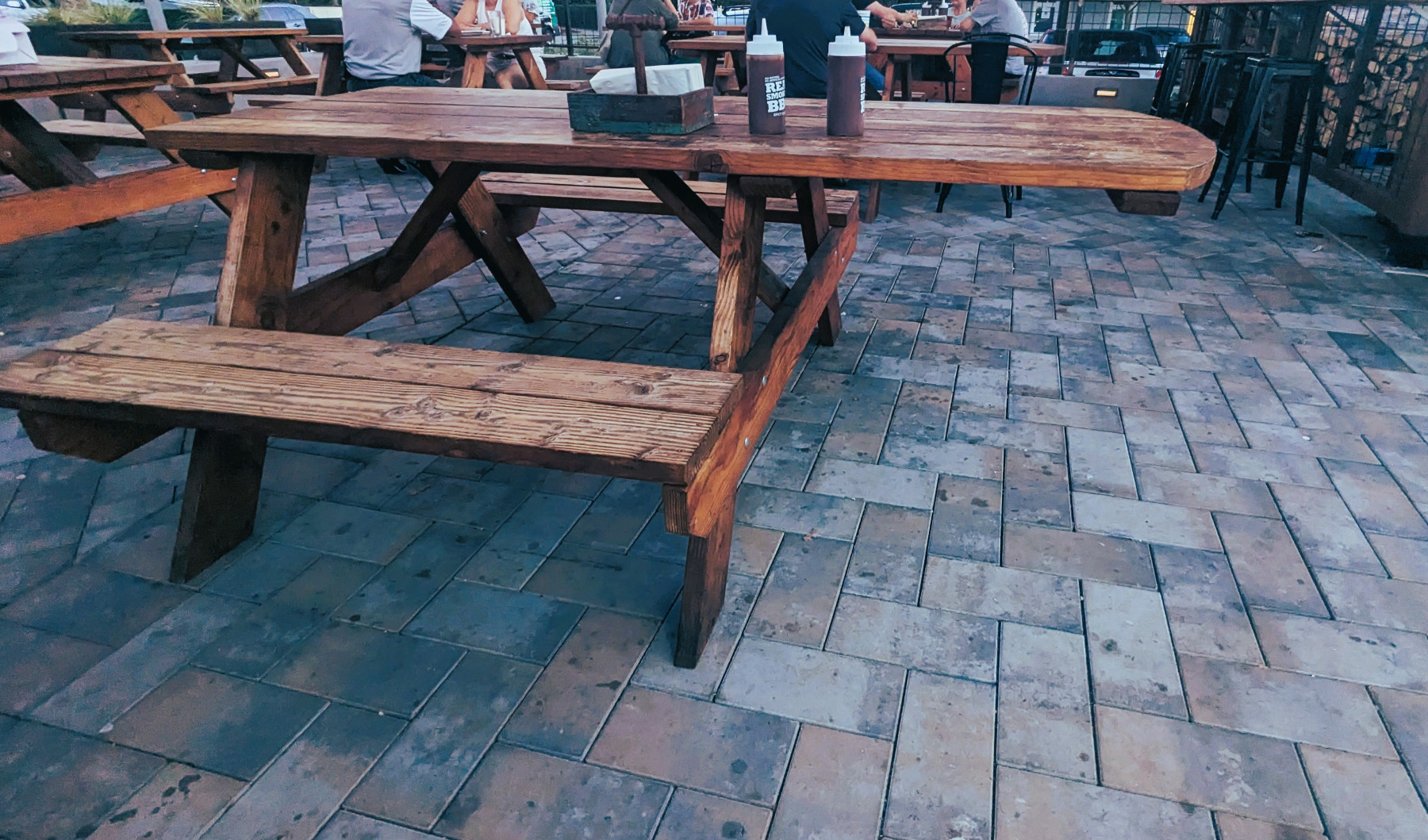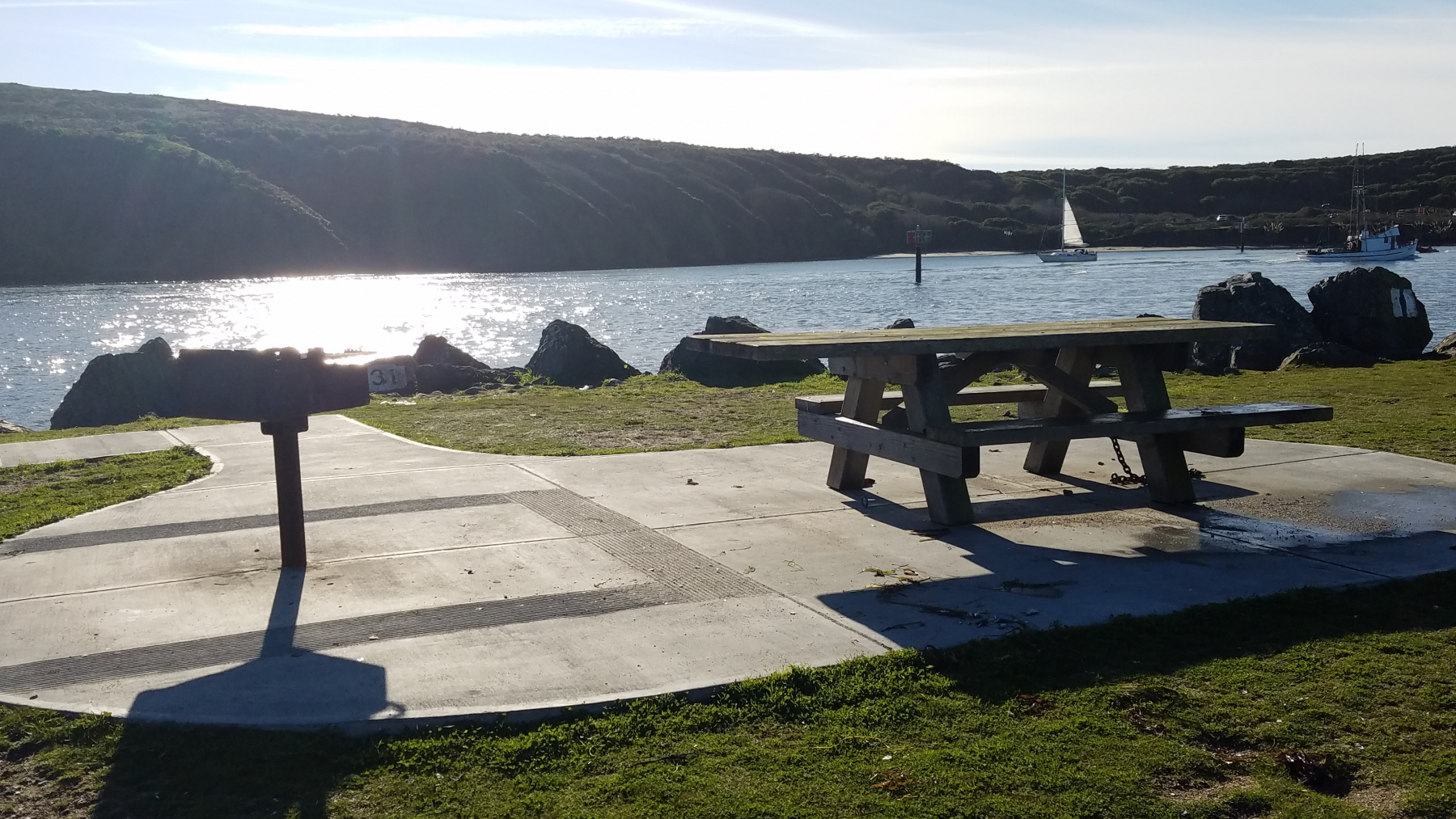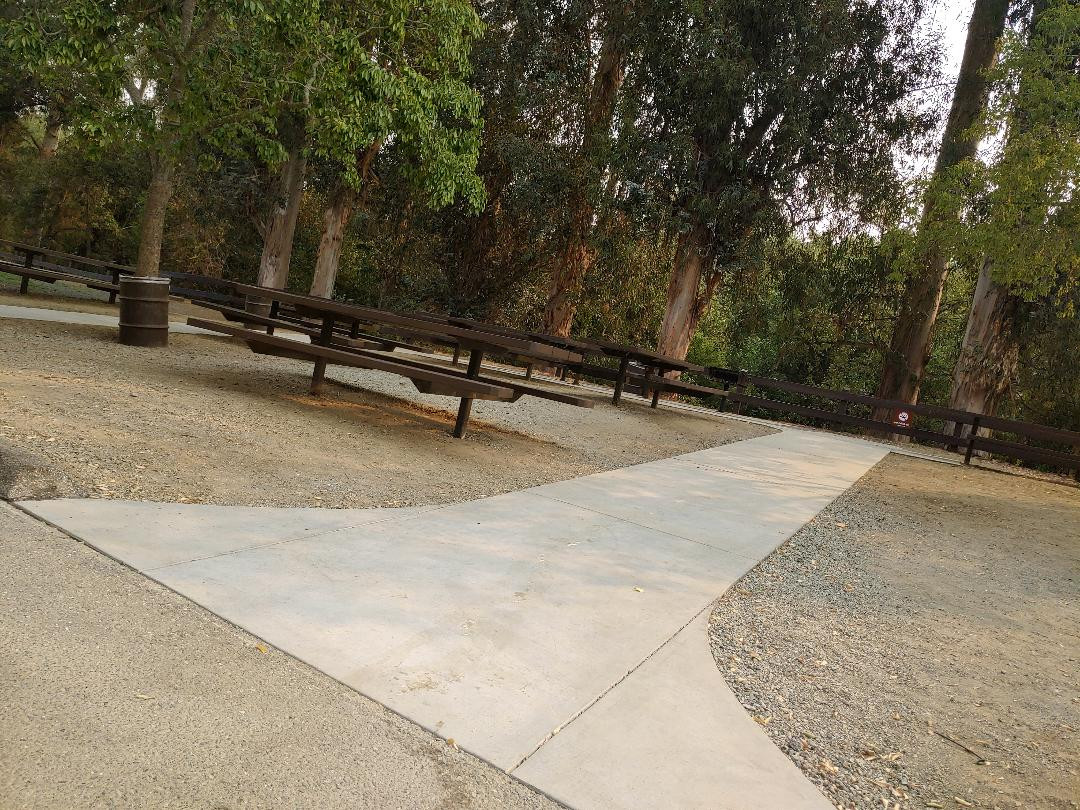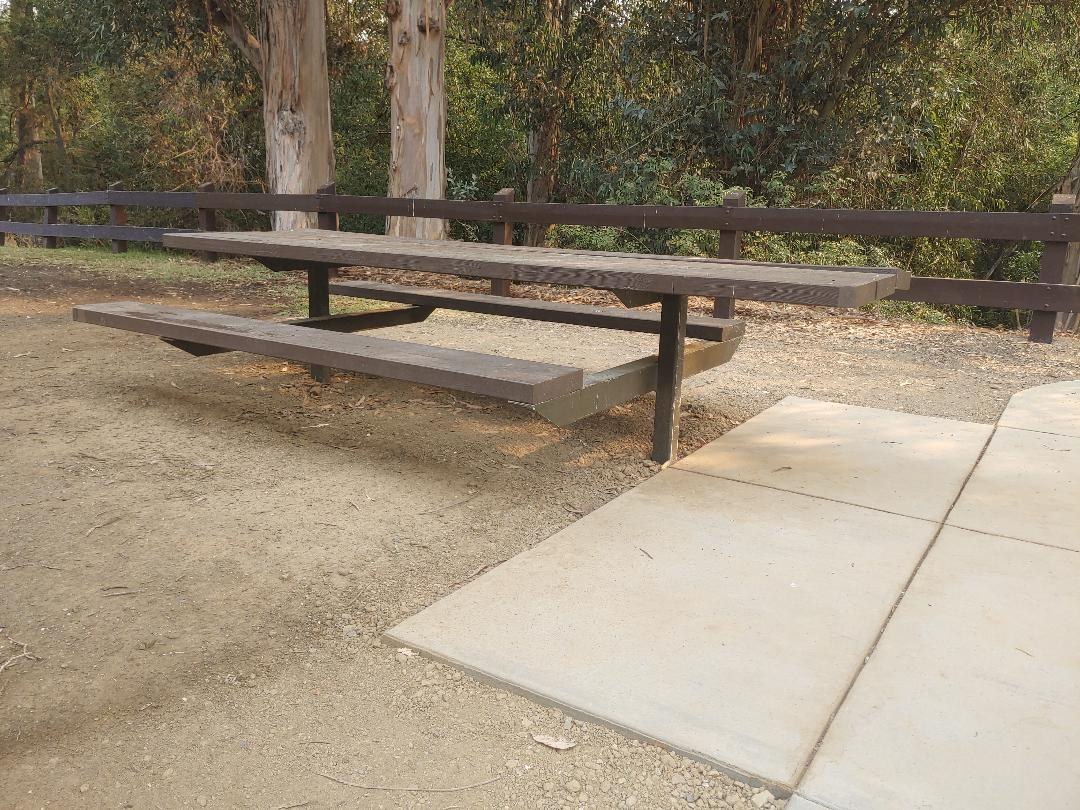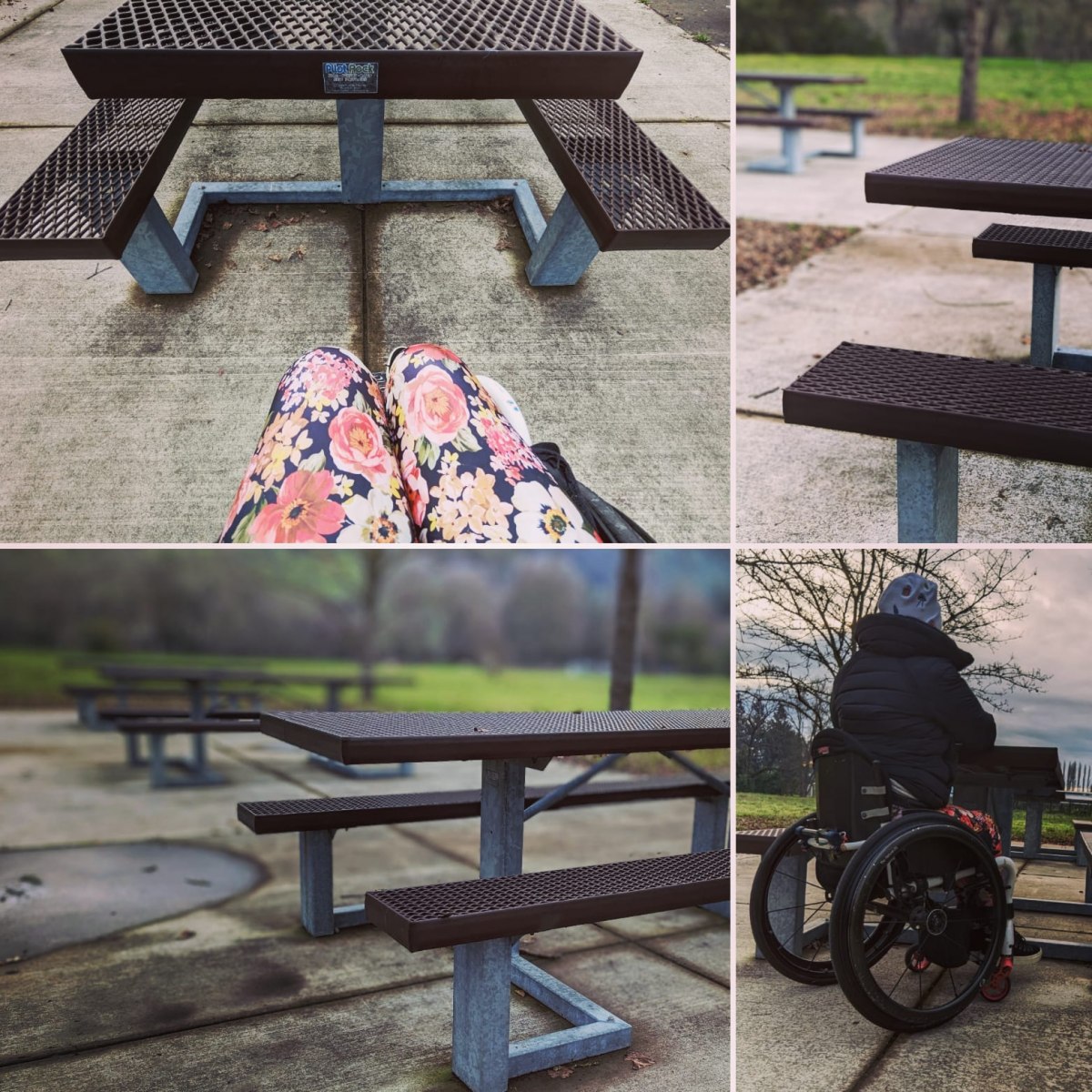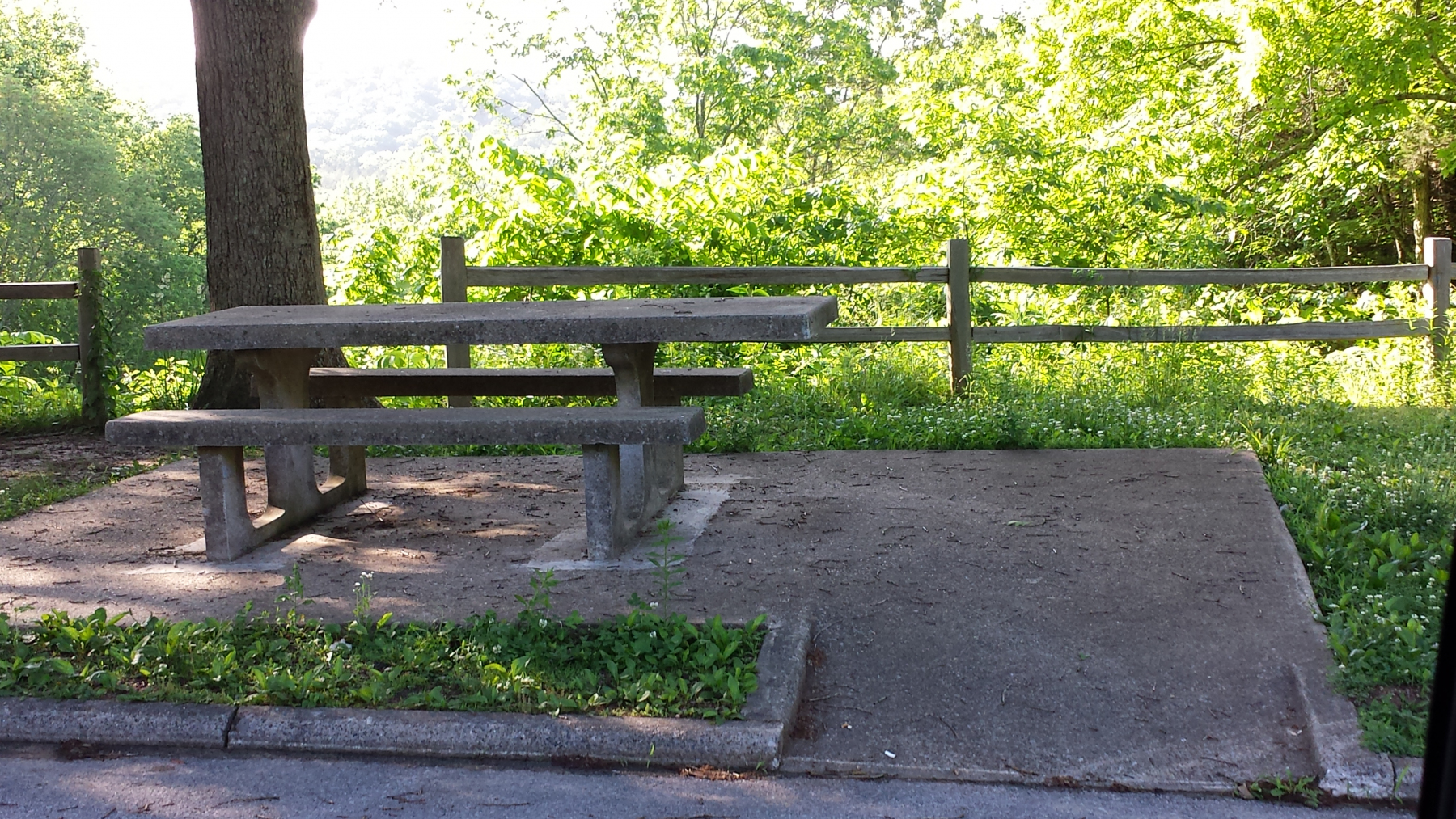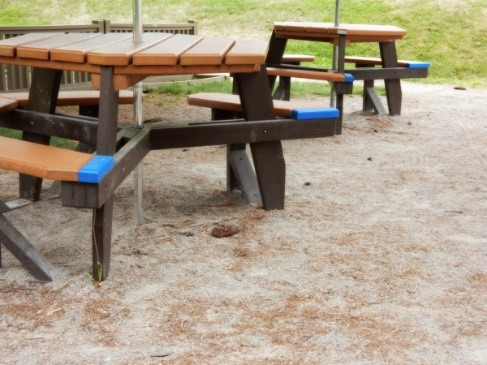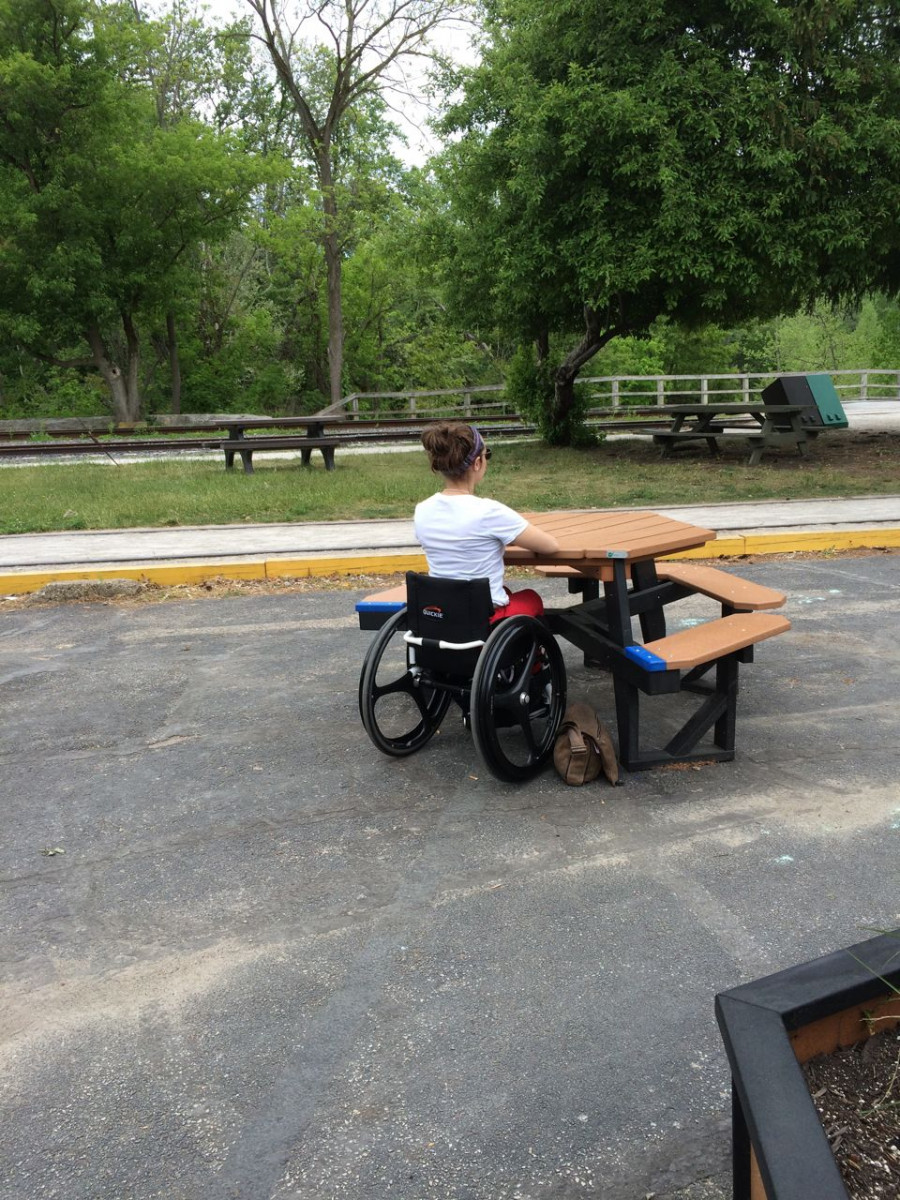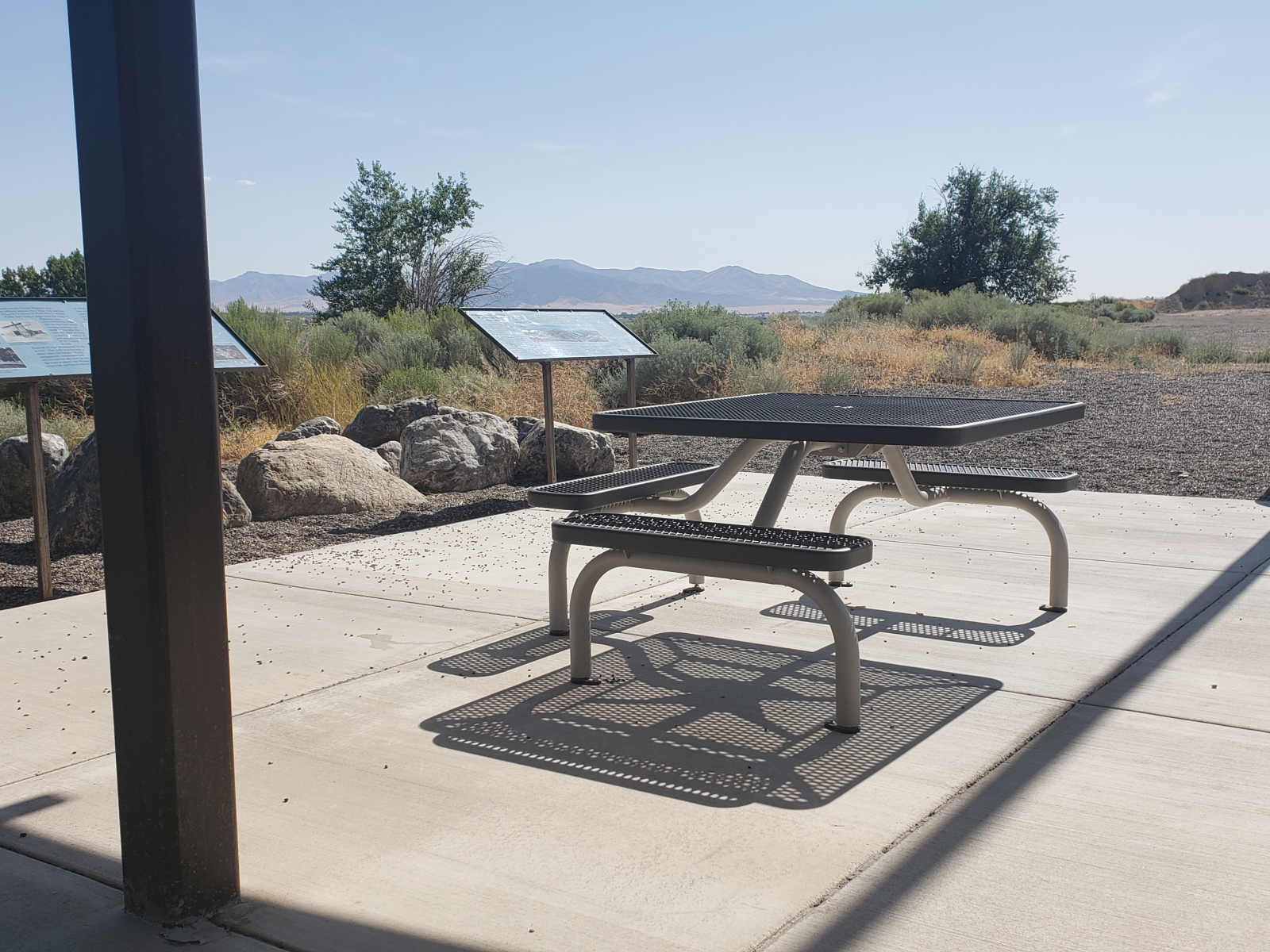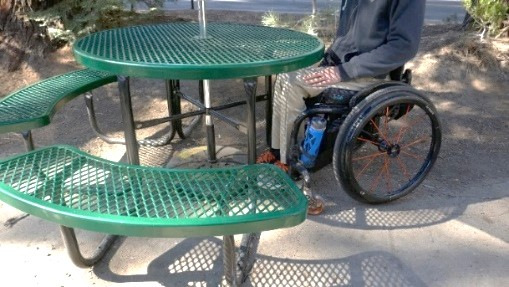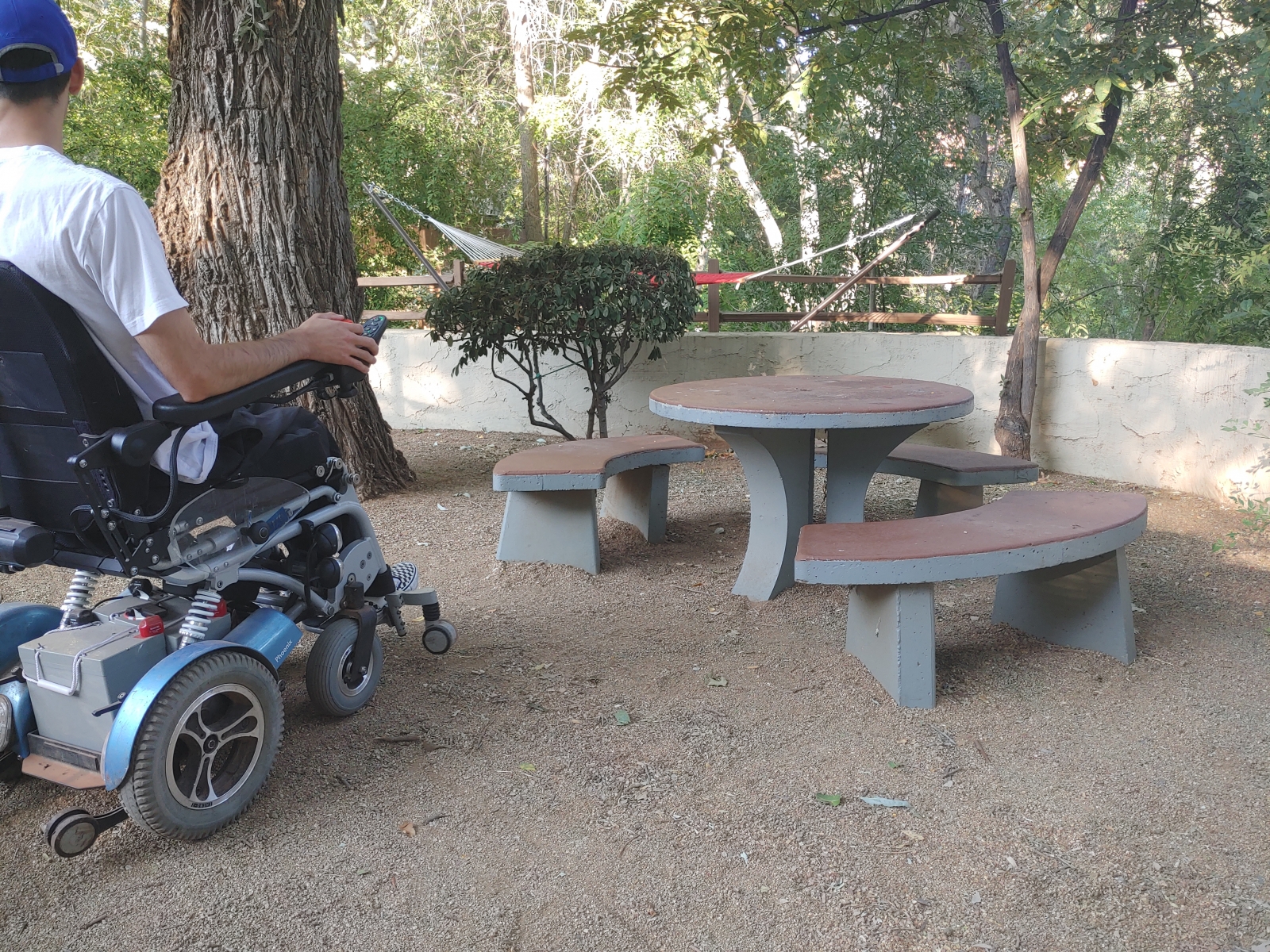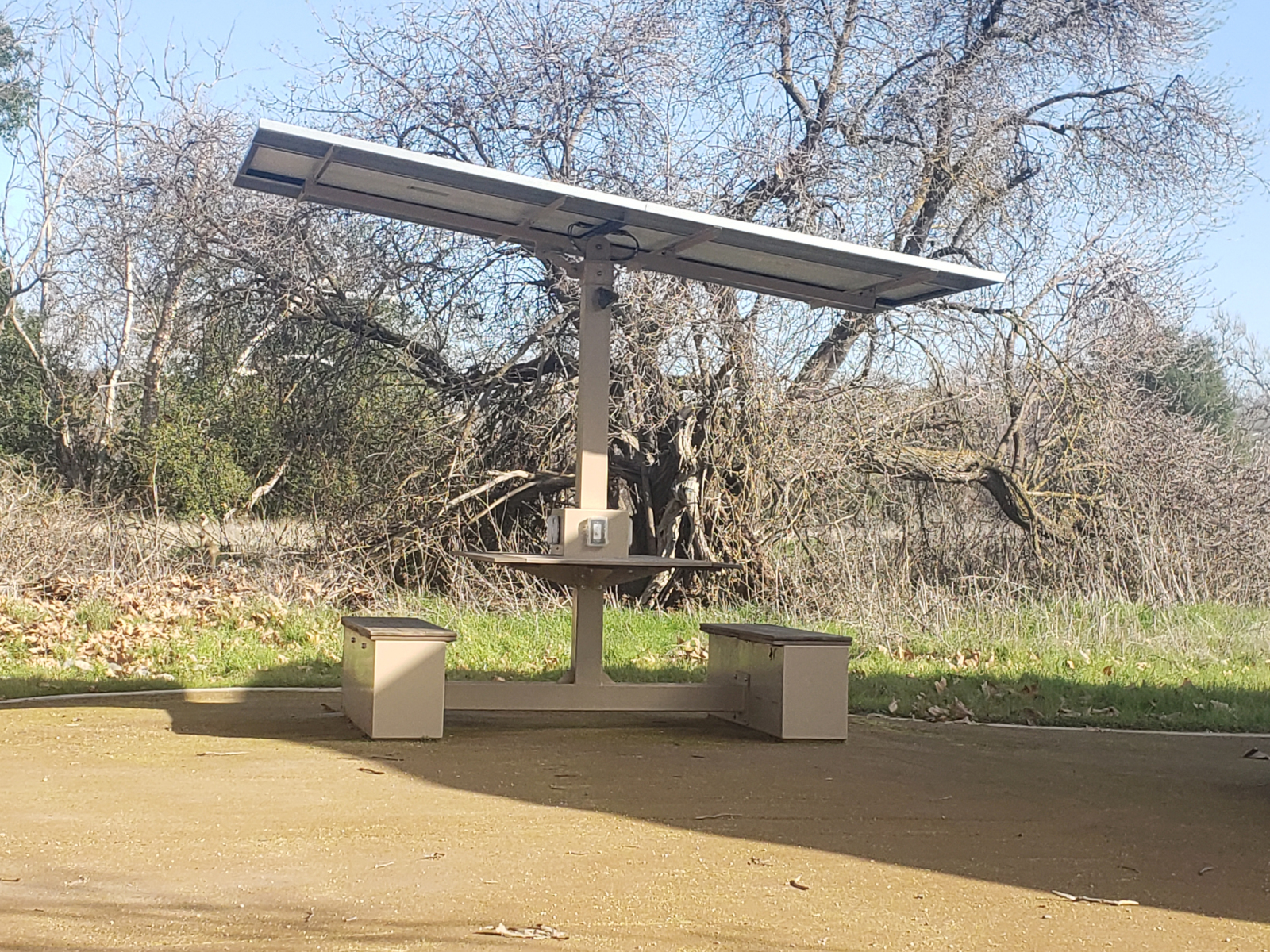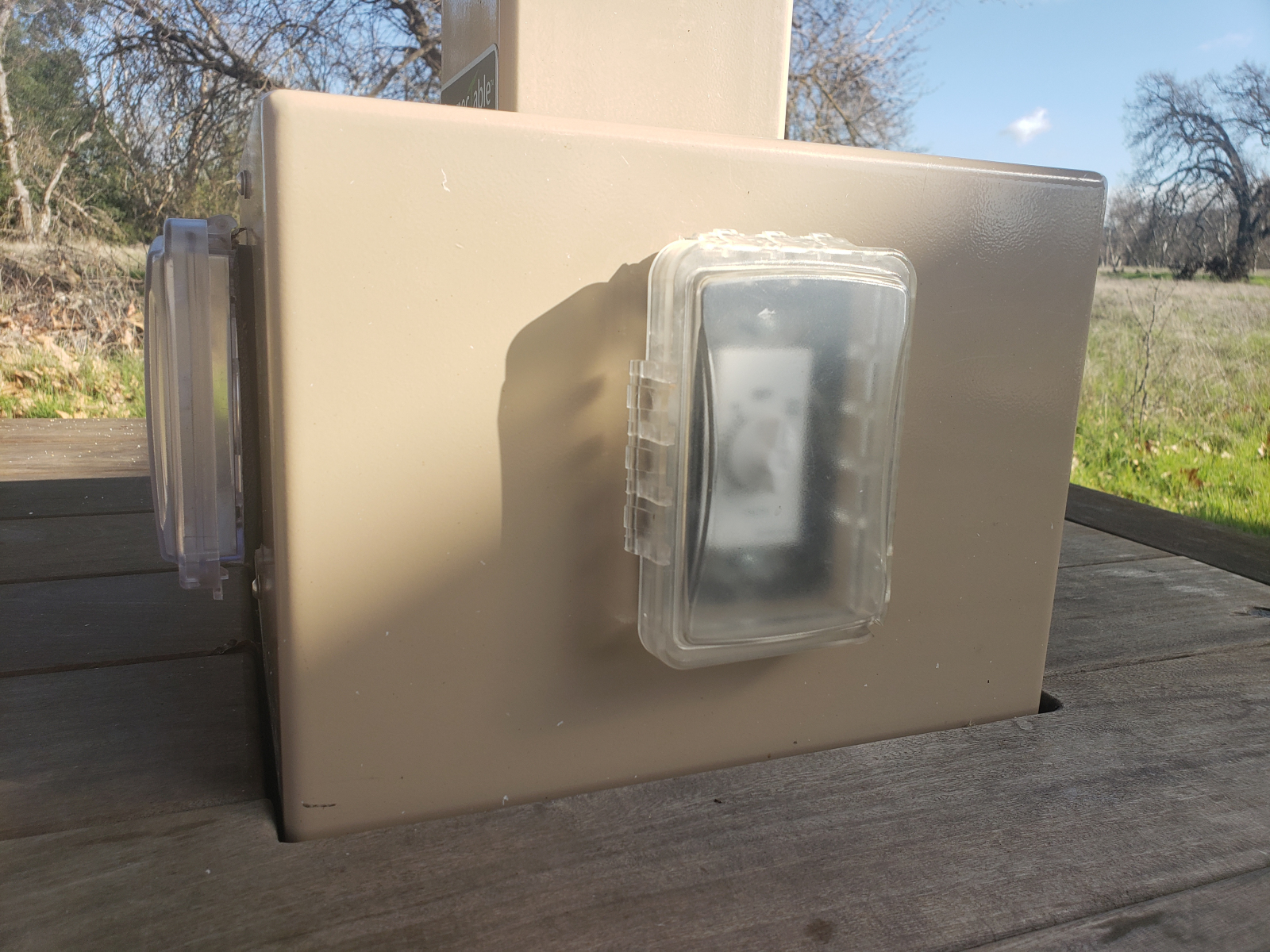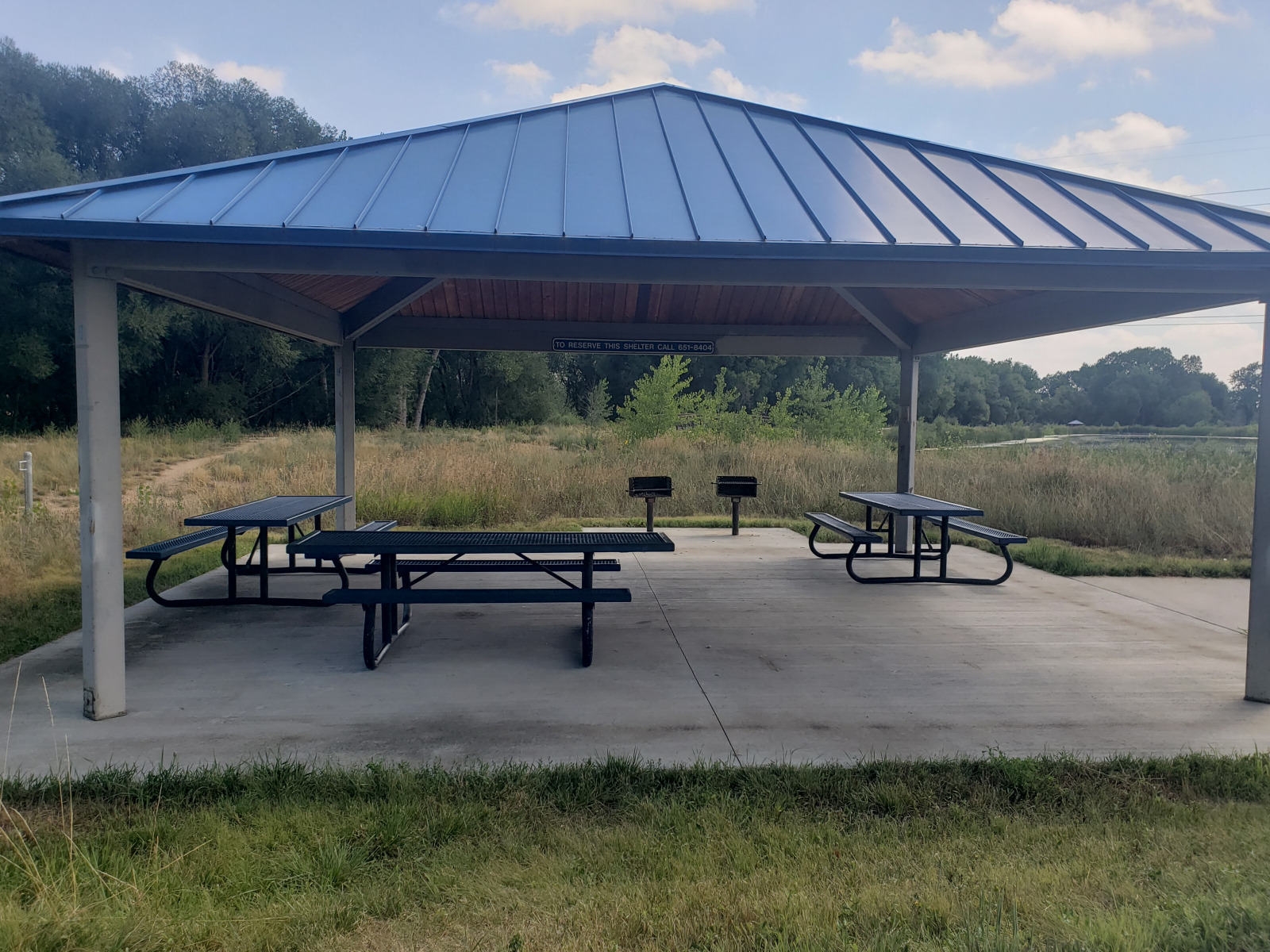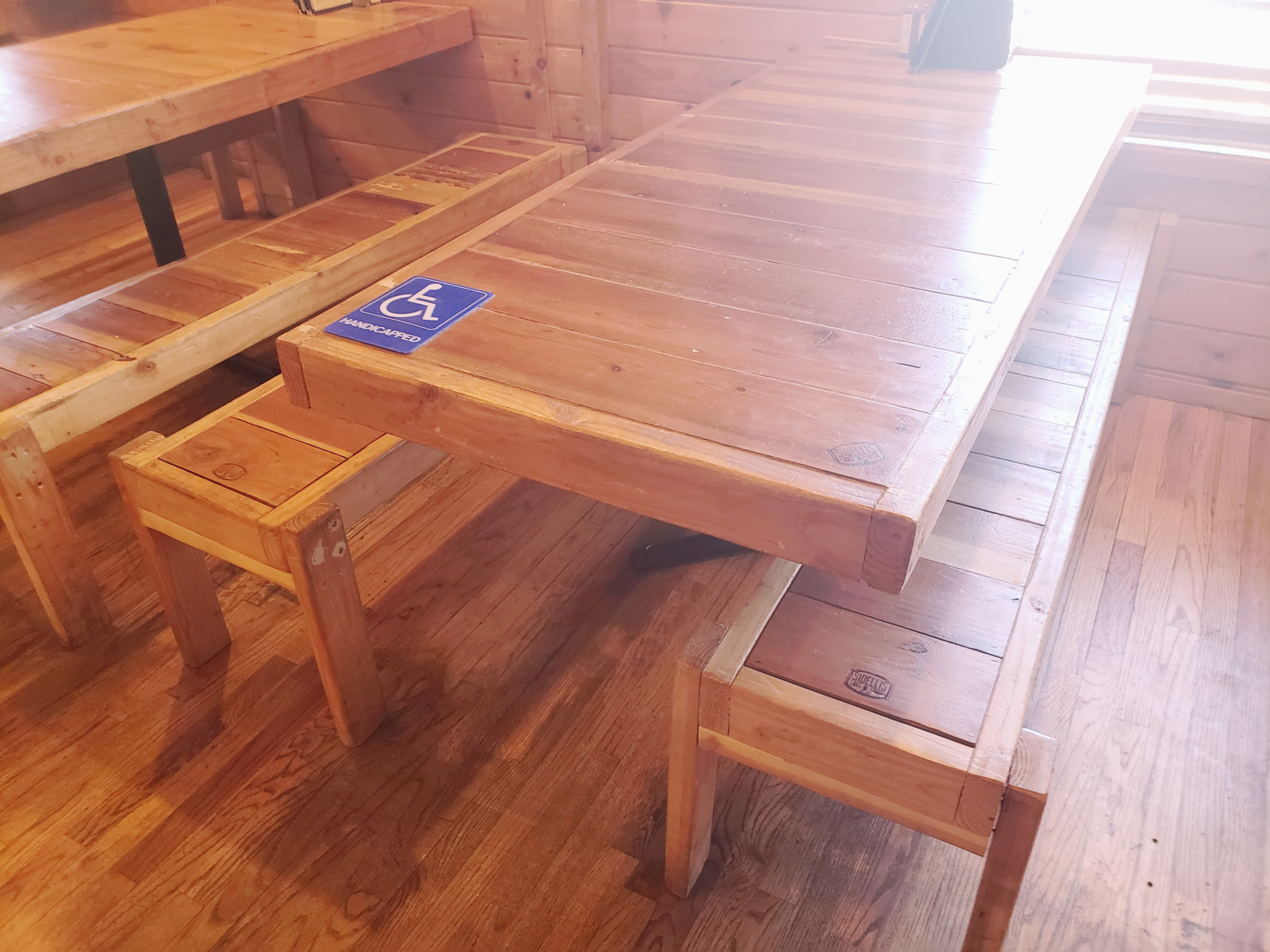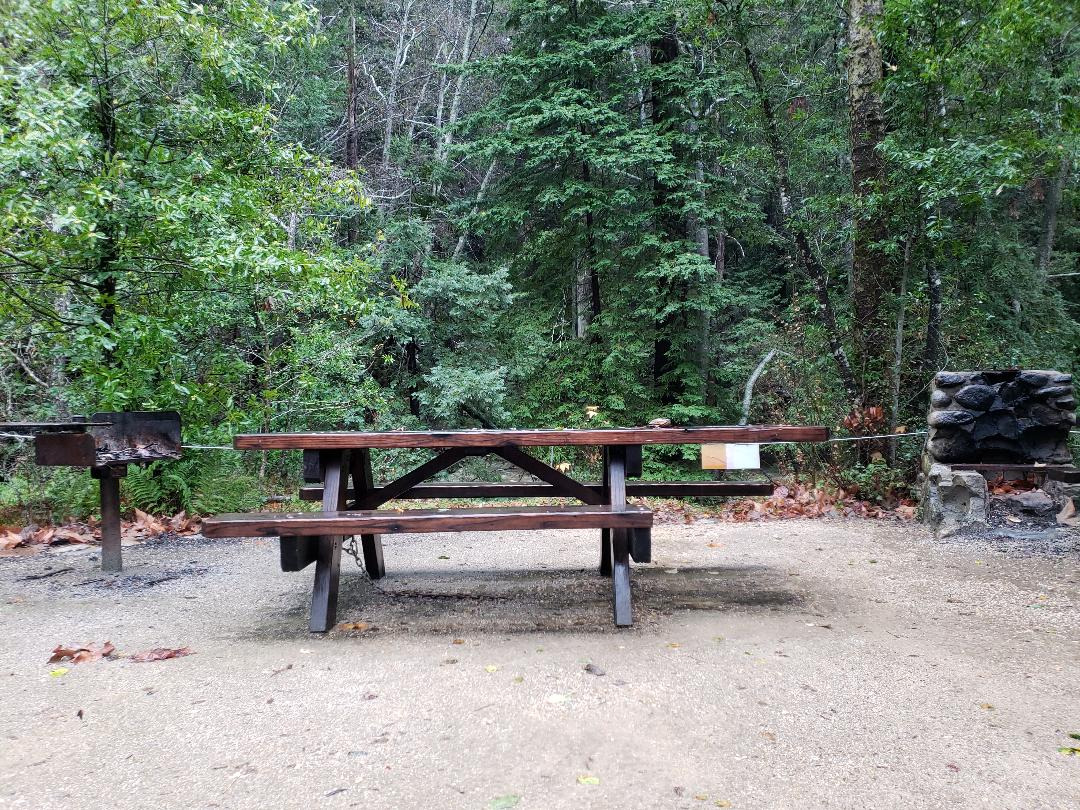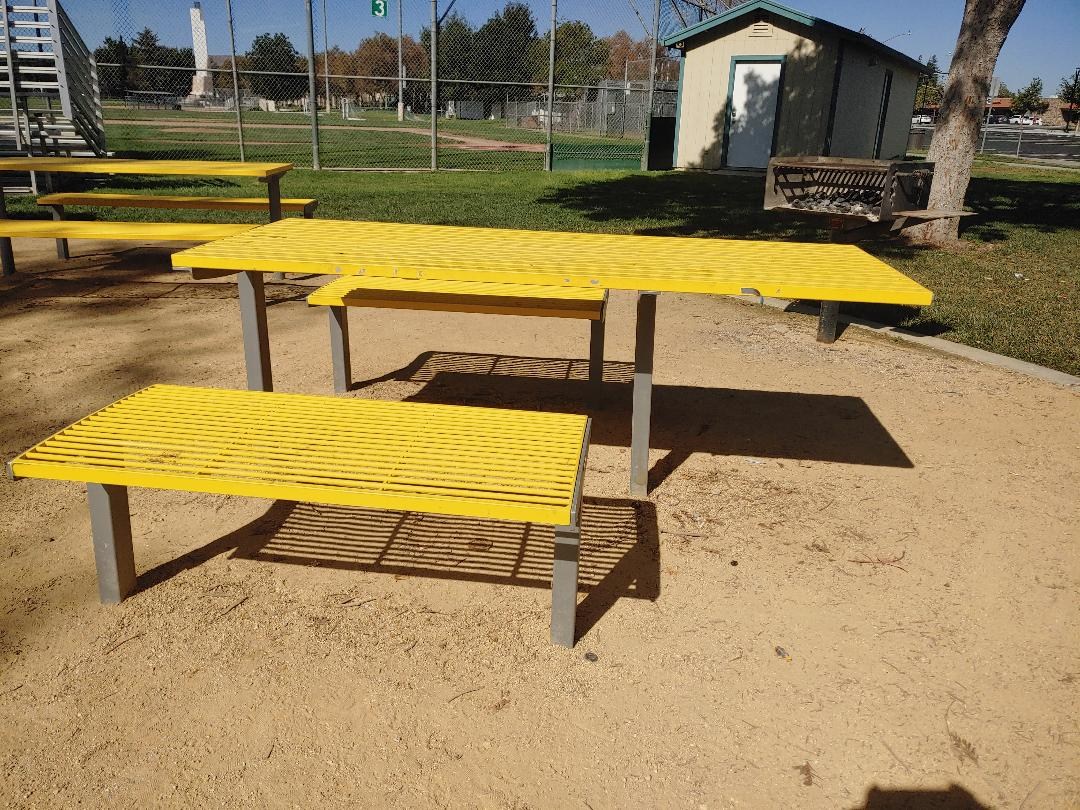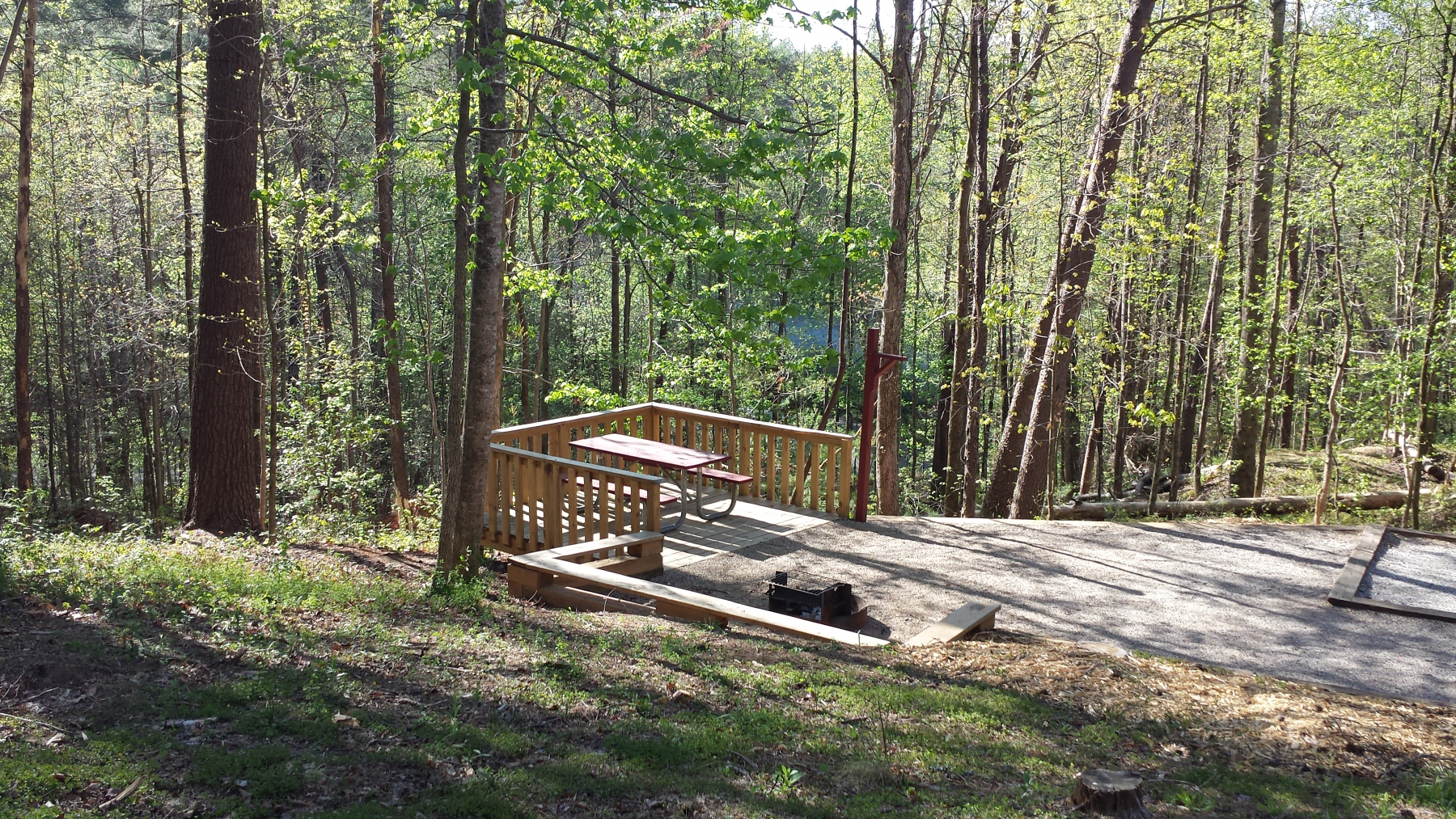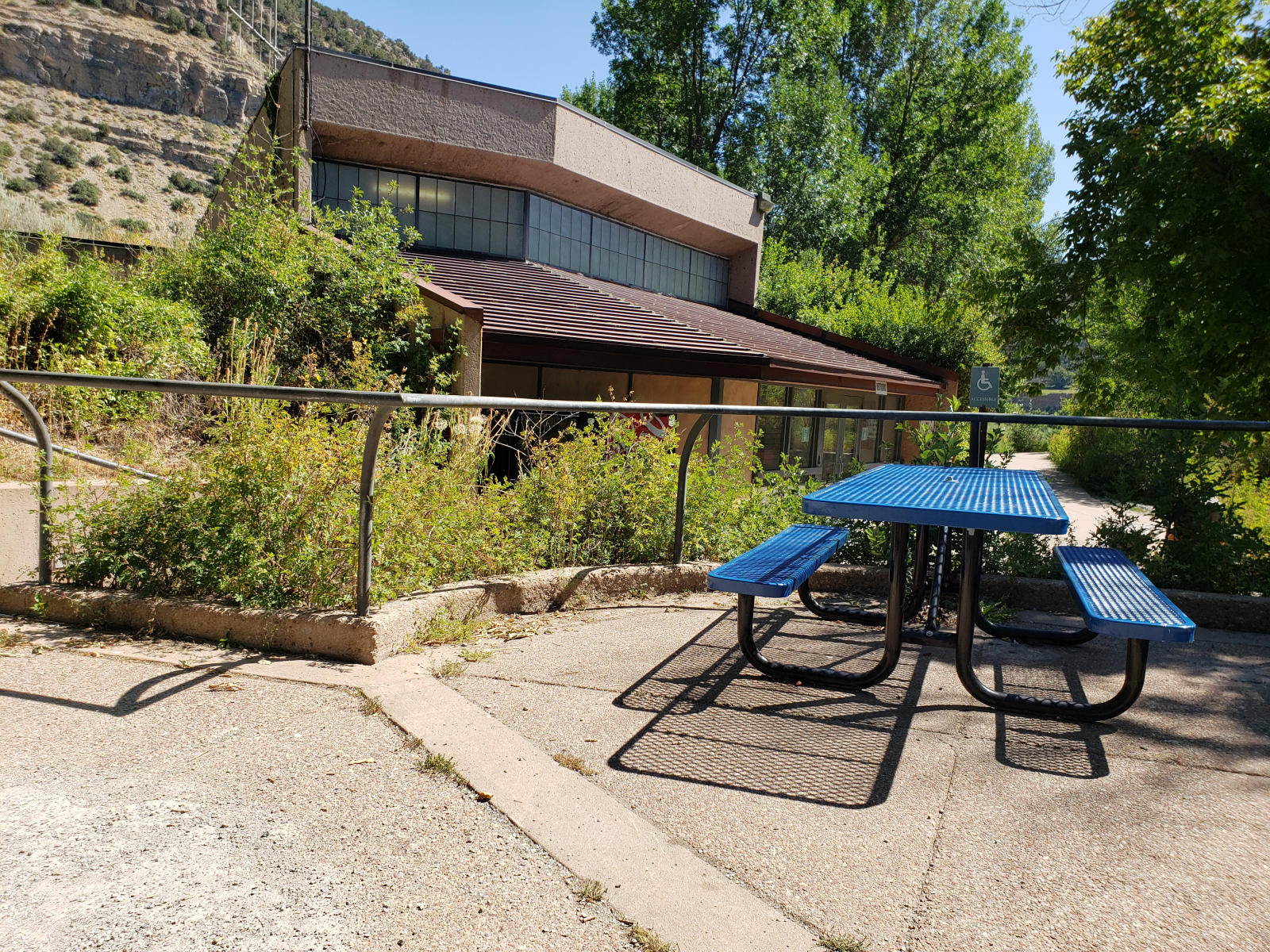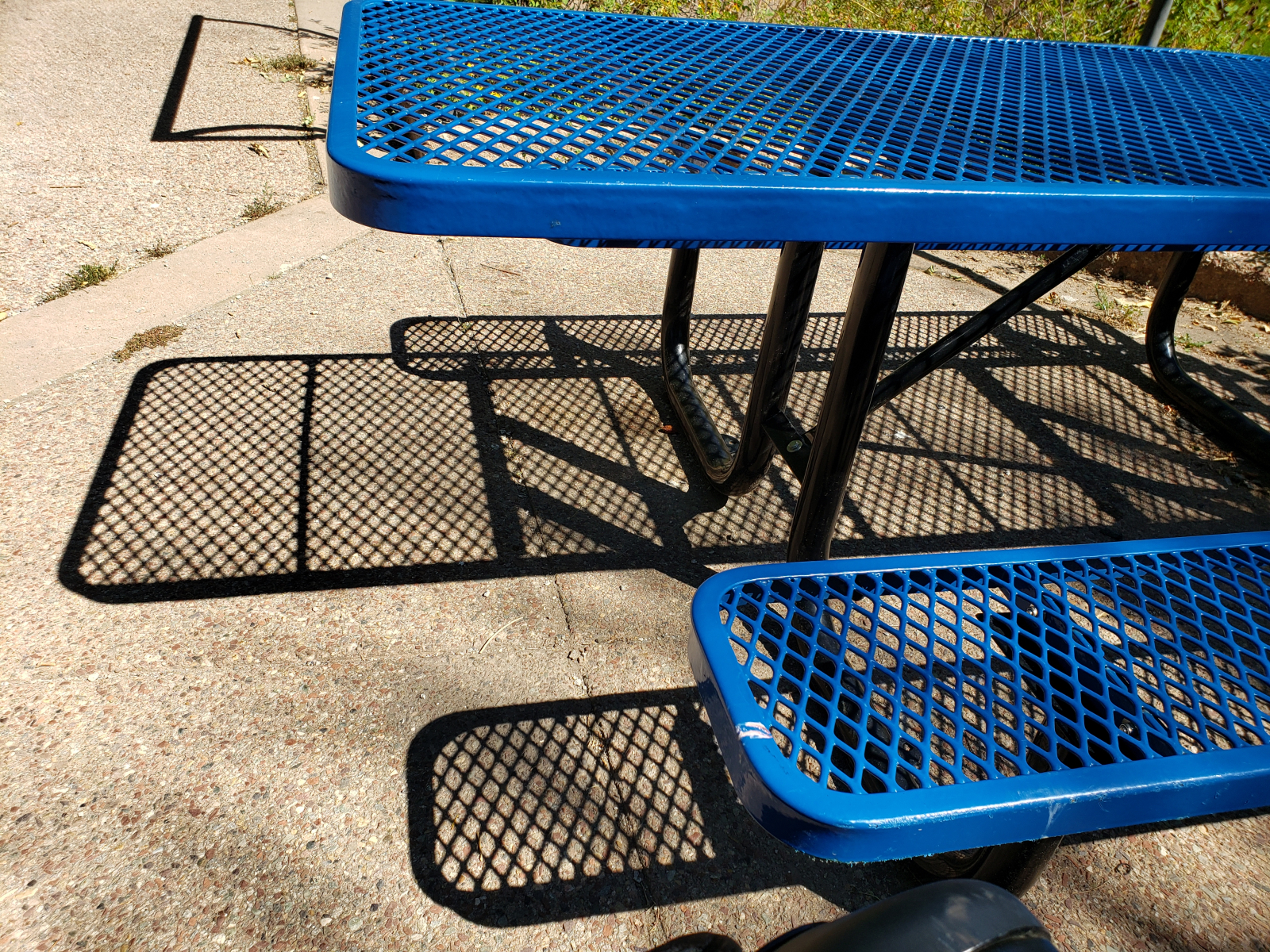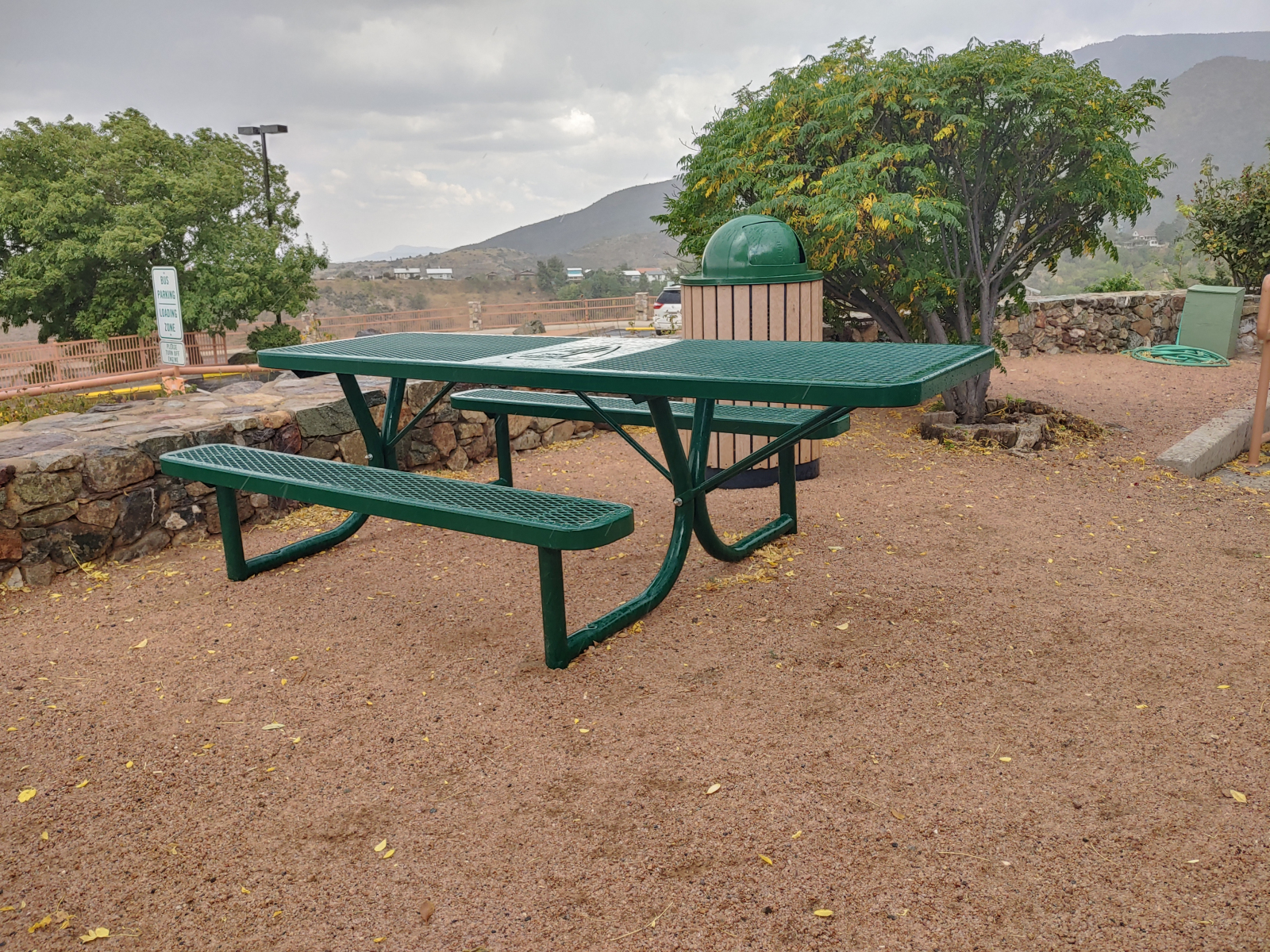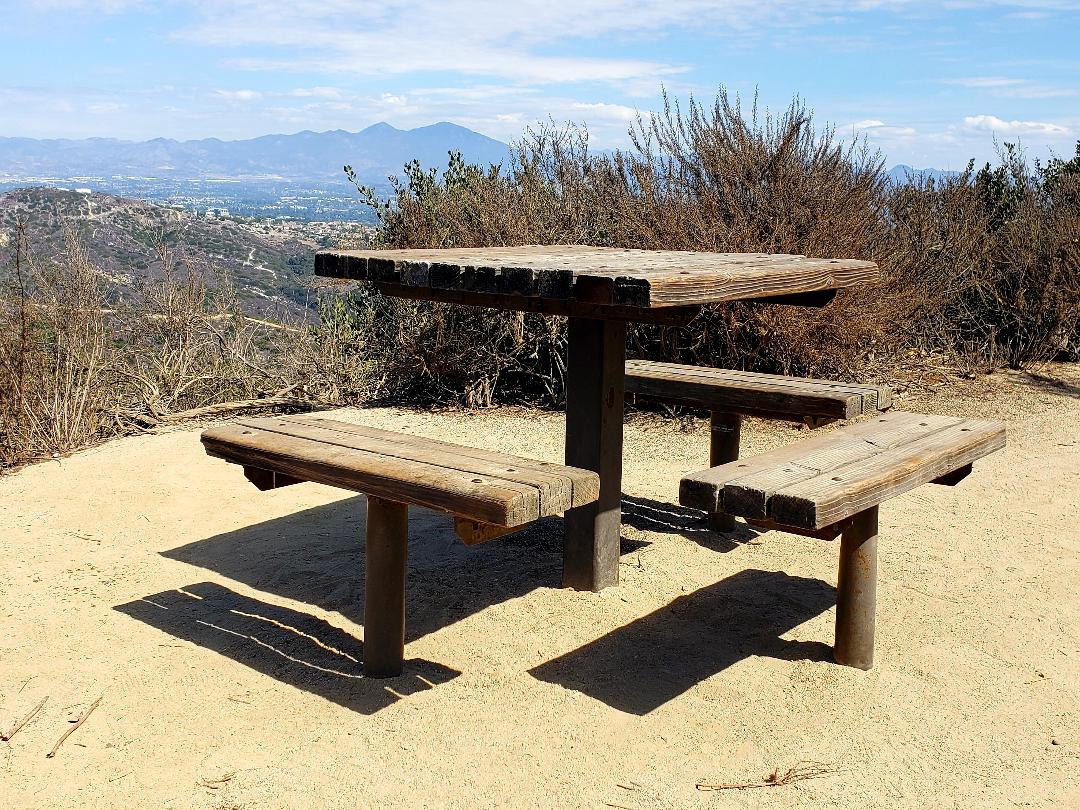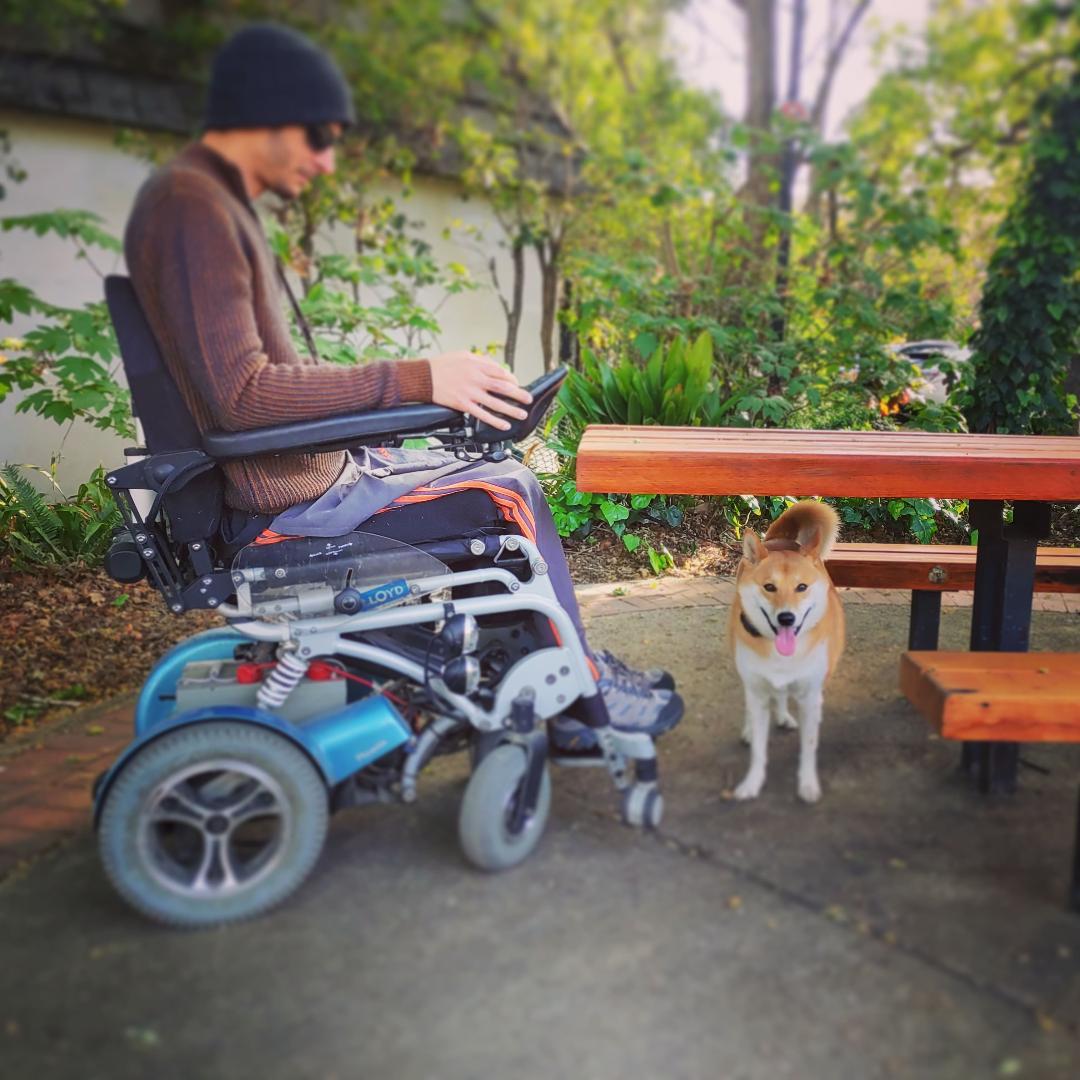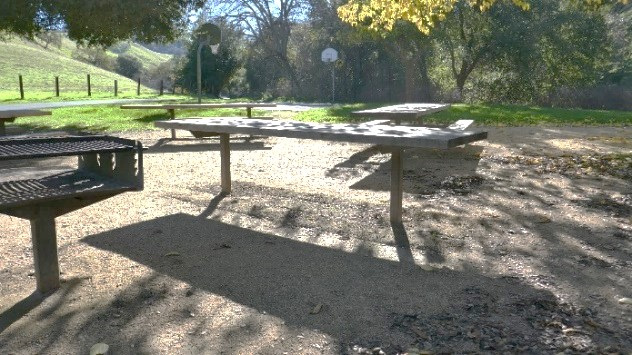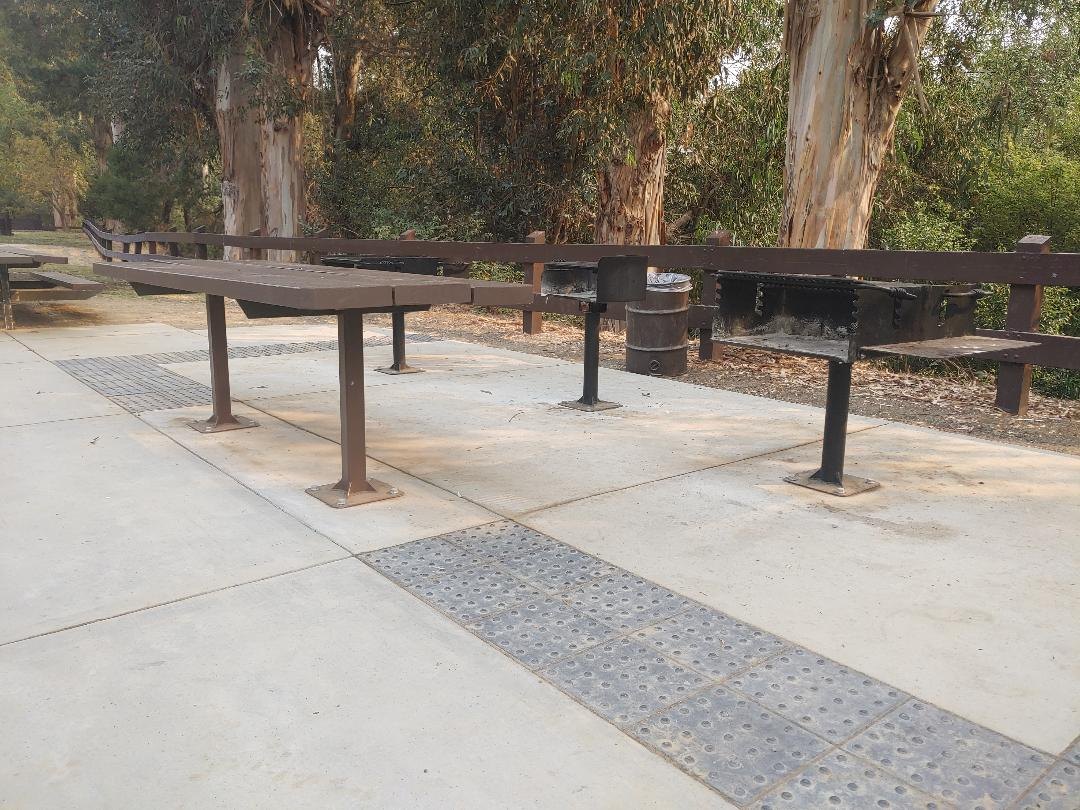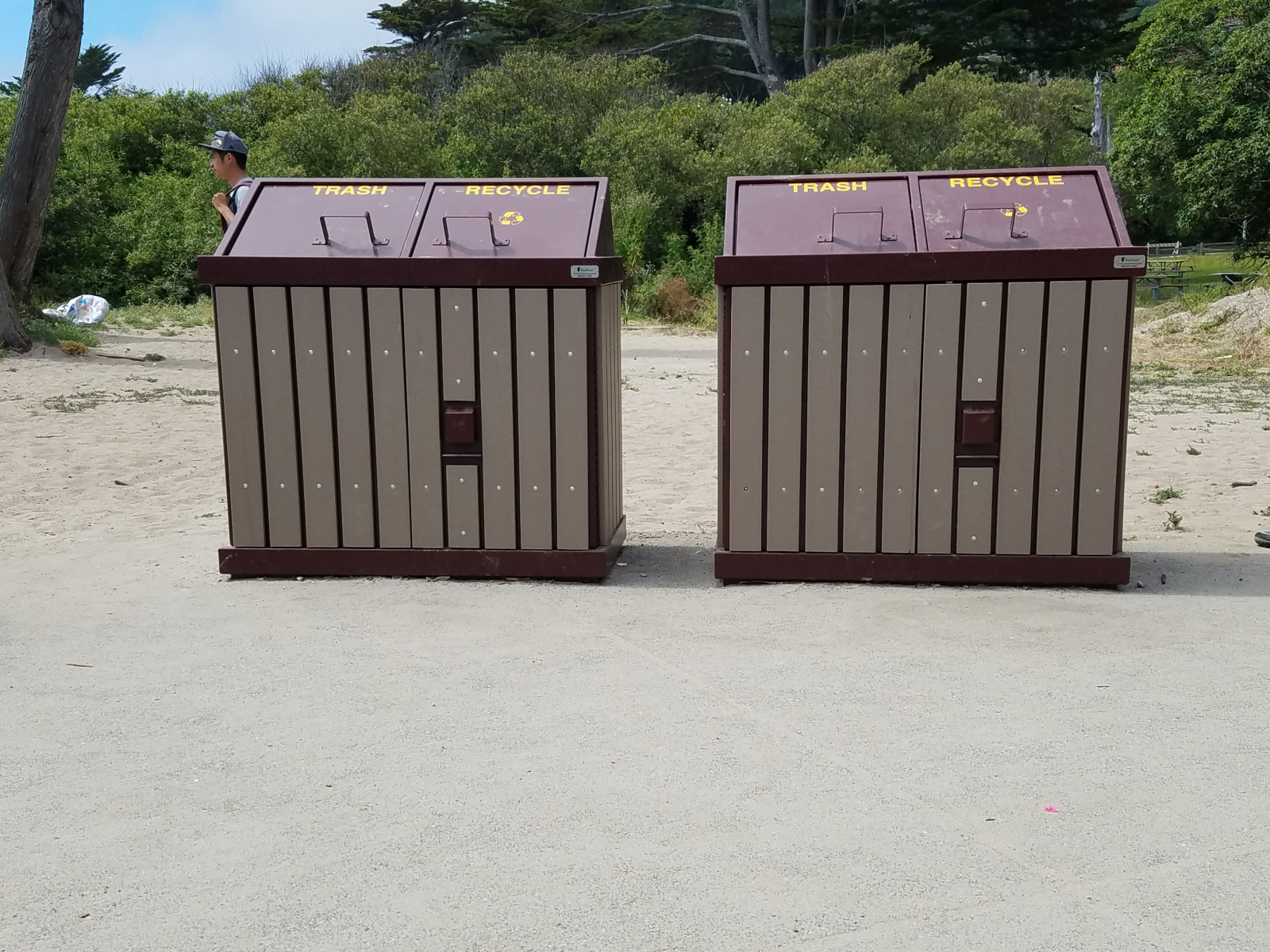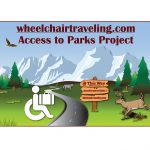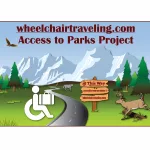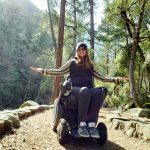People visiting parks with wheelchairs need to know the location and setup of basic guest services, like visitor centers, nature museums, parking, public transporation, clean drinking water, picnic areas, and toilets.
Visitor/Nature Centers + Museums
These kinds of buildings are perceived as the go-to point for help and information for all visitors. Regarding accessibility, the most up-to-date park features are expected here, especially modern-sized parking and restrooms. On the park website, tell people what access features have been implemented at these kinds of buildings.
- Automatic Doors: A first indicator that the park has taken steps to create access in the park, and generally, a very helpful tool for all kinds of people with limited mobility. Be sure that these are checked to be working on a weekly or daily basis. If an automatic door button is not working, it makes the park look incompetent and wasteful of taxpayer dollars.
- Information/Service Desk: The height of the main desk (or a section of it) needs to be at a universal height to accommodate children, little people, and people using wheelchairs. It may be difficult or impossible to train every staff member at this desk about all that is accessible, so have a one-page cheat sheet designed for employees to help direct visitors to what they need to enjoy the park. Don’t assume anything; listen to what people are asking. When talking with visitors, make eye contact with the entire party.
- Maps + Resources: If needing a park map, people will often come to the main park building. In addition to the details provided, information and resources about the park are to be made available in braille and large print.
- Displays: The layout of display areas should be open to allow people to move from each exhibit reasonably; don’t overcrowd. When applicable, provide space under an exhibit for people in wheelchairs to roll up to. The height of informational boards and panels is to be readable from different heights. Some displays need tactile artifacts for exploration and explanation. Include push-button video monitors as well as exhibits with audio-described captions. Providing a hand-held audio tour device is also possible, while call-in or barcode information panels along with phone apps are also options.
- Video Theater: All videos are to be audio-described and with captions. When showing videos in a theater, have a space that is open all the time for someone in a wheelchair and make it obvious, unless there are no seats or a docent is always in the theater to assist. Having to track someone down to move a chair is not access-friendly. Also, have a seating plan if two wheelchairs want to sit next to each other and for groups with multiple wheelchairs. Determine the best evacuation plan in case of an emergency.
Public Parking
Some parks can only be reached by private transportation.
- Signs: Have clear signage for parking; details under the section “In-Park Signage.”
- How Many Spots: Are parking lots open or designated? Knowing how much or little designated parking is available at a park is just as important as telling the general public there is parking in general. For example, if there is only one designated parking spot at the main park sites, then a person may decide to not go to this park on a busy day. If someone knows that there are several designated spots then, they may feel more confident that parking is possible.
– Avoid putting a ton of parking spaces at sites that have little or no access. For example, the S.S. Red Oak Ship site near the Rosie Riveter Museum in California is inaccessible by wheelchair because of countless, narrow staircases, and yet it has seven designated spots! Someone who cannot navigate all those stairs can only view the ship from the outside, making visiting time likely minimal. This is NOT a good use of government money to create more access and looks incompetent. - Size Matters: If there is only one designated parking spot in an area, then make it “van accessible.” This means that a van can park on one side of the space and there is enough room for not only a ramp to come out but for a person in a wheelchair to go down that ramp and exit without hitting another car.
- Parking Surface: Inform visitors what the parking lot is made up of. Is the parking lot paved, dirt, rocky, packed dirt and rocks? Is there a level area to get in and out of a vehicle or van? Is there a barrier-free path to get in and out of the parking area?
– People want and need to know this information based on personal abilities and the condition of the vehicle in use. If parking is not on a level area, it will increase the slope of a van ramp or the transfer angle. People want to use their energy on trails and activities, not getting in and out of a vehicle. Rocky parking areas are problematic because they destroy tires, are dangerous when exiting a vehicle (stop wheels in place), and are choppy to navigate over. The rattling from going over the rocks can be very uncomfortable for people’s bodies, especially across multiple parking locations. - Abuse Enforcement + New Parking Plan: People are parking illegally at parks and nothing is being done (99% of the time). Lots of excuses are made by parks and park partners; the biggest reasons being a lack of resources or staff time, no one wanting to cause confrontation, and enforcers simply ignoring this law.
– New Plan: Have designated parking spots for wheelchairs, handicapped, young families, and groups/tours that are color-coded with different signs. Some parks already have designated areas for groups and tours, so this is an expansion. Placards for each category can be picked up at a parking facility or printed out in advance.
Public Transportation to a Park + In-Park Transportation
Inform visitors using the website and in-park displays if something is available.
- In-Park Transportation Services: Include information about ramp/lift access, weight, and dimension maximums, how many wheelchairs can ride at once, what securing methods are used (tie-downs), and how many vehicles/shuttles/buses are modified (limited numbers = longer wait times).
– For example, “All of the shuttles at PARK X have a ramp in the front and space for two wheelchairs with dimensions to not exceed 3 feet by 5 feet; tie-down belts are optional and available upon request.” - Public Transportation to the Park (or close to it): What is the name/type/link of the public transportation systems used? How close to the park does the public transportation service get? Are there multiple locations? From the station, what is the route like to the park? Safe? Barrier-free?
– For example, “METRO Bus #74 and #87 have stops on the east and west ends of PARK X, approximately one block from the entrance.” Here, add links to the station locations or give more precise coordinates, like “the corner of Sunnyside and Raven Road.”
Public Toilets: Flush, Vaulted + Portable Facilities
- Size Matters: People in various wheelchairs and scooters need to be able to use some of the bathrooms made available in the park. These mobility devices need to be able to fit and maneuver inside a bathroom or bathroom stall with the door closed.
– Experience: Borrow a wheelchair for rent at a Visitor Center to mimic the experience to more acutely improve modifications.
– Location Info: If only a percentage of these facilities can be modified to current ABA standards to accommodate people in power wheelchairs and scooters, then knowledge about their specific whereabouts is needed by park employees interacting with the public. People with mobility devices should not have to guess what bathrooms are or are not accessible.
– Best Setup Scenario: Having the sink inside the bathroom stall. - Doors (Handles and Weight): Review how heavy bathroom doors are, and how they are opened. Doors with handles that can be opened using the wrist (no hands) are preferred, but automatic doors are best. Be sure to use the same accessible design for both sides of the door (stall door especially).
- Roll-Up Sink: If access to a roll-up sink cannot be provided in the common bathroom space, then add a sink inside the modified stall or have it outside the bathroom area near the door.
- Toilet: The height of the toilet is important for transferring in and out of a wheelchair or scooter or if standing up is difficult, due to overworked knees for instance. When placed too low, some can’t return to their mobility device, even with grab-bars. Positioning the toilet so a transfer is possible from both the front and side of the toilet fits the needs of wheelchair users. Having a toilet where only front transfers are possible is limiting.
- Amenities: Consider the placement and height of hand dryers or towels, soap dispensers, and personal item hooks. Hooks are still improperly seen at the top of the accessible stall door which fewer people can reach.
Clean Drinking Water: Fountains + Bottle Fill-Up Stations
- Path: If provided in the park, create a barrier-free path to it.
- Access: Some or all need to be modified for access, especially in heavily used areas, and inform visitors where the accessible ones are located if placed sporadically. Ideal design allows someone in a wheelchair to roll up under it.
- Water Fill-Up Station: More and more commonly seen. Be sure that the height can be accessed by someone in a wheelchair and that it includes operating buttons; foot petals are not accessible to all wheelchair users.
Food + Picnicking
- Picnic Tables: The partially extended end defeats the whole purpose! Either extend or don’t. Extensions allow for two wheelchairs to fully sit under a table. Smaller tables may have one open space to roll up under the table. Indicate an accessible picnic table by highlighting the tabletop, side, or open space. With a large grouping of tables or when the area is busy, it is hard to distinguish between them, and people will assume nothing has been provided.
- Cooking Grills: Need to be placed in a barrier-free location and at a height that is accessible for all. Fire-pits on the ground need to have raised cooking grills or have some of them be taller in general. Having to reach down and into the fire is dangerous; a person’s foot could slip and they’d then faceplant into the fire.
- Bear Boxes: Make some within reach or even connect them to the picnic table. Consider the distance from the bear box to the picnic table. Ensure the bear box locking mechanism can be operated by as many people as possible.
- Trash Cans: Access to garbage cans keeps parks clean. Pathways are often missing or access is stopped just short of the trash can. It’s extremely difficult to open the lid to a dumpster-style trash can and throw trash in from a seated position; it’s too high.

